- Search Please fill out this field.
- Manage Your Subscription
- Give a Gift Subscription
- Newsletters
- Sweepstakes
- Adventure Travel

How to Travel to Machu Picchu
Don’t get lost when you visit the Lost City of the Incas.
:max_bytes(150000):strip_icc():format(webp)/Stefanie-Waldek-7eed18a8c9734cb28c5d887eb583f816.jpg)
Chris Marinaccio/Travel + Leisure
Every year, millions of people visit the imposing and mysterious Incan citadel of Machu Picchu in Peru. But getting to the massive agricultural terraces, intricate stone constructions, and epic hilltop views of this UNESCO World Heritage site isn't cheap, and it involves some trickier-than-usual logistics. Here's how to expertly navigate your way to Peru's most famous destination, plus our top tips for enjoying your visits to the nearby cities of Cusco and Aguas Calientes on your way.
Reasons to Visit
Machu Picchu is one of the world's most dreamed-about destinations . Mystery is at the center of Machu Picchu's appeal, as the city holds many secrets about the ancient Incan Empire. Knowledge-seekers will find plenty of interesting tidbits to mull over about the city's archaeological significance and the various scientific and religious practices of the Incans who built the magnificent site.
Alongside this adventure through time, a trip to Machu Picchu offers an opportunity to experience Peruvian culture and gastronomy . If you stay a while, you can even make trips to many of the country's other historical wonders, like the perplexing and enormous images etched into the hills of the Nazca Valley, the origins of which are not entirely understood. Throw in a few dishes of tangy ceviche, a rainbow-striped mountain , a desert oasis that looks more like a painting than a real place, and many pisco sours to wash it all down, and you've got a fantastic trip in one of the world's most naturally beautiful countries .
Best Time to Visit
Machu Picchu is open year-round. October through April is the official rainy season, but it can rain at any time. And while peak season is July and August, you should always expect crowds. Sundays can be the most crowded, because that's when people who live in the Cusco province are allowed into the site for free, in addition to the daily visitor limit.
Morning? Afternoon? There is no perfect time to visit Machu Picchu. These days, the site is crowded at all hours and the weather is unpredictable. However, during the rainy season, the mornings are most likely to be foggy. Depending on your disposition, fog ruins the view or adds a patina of mystery to it. Afternoons can be slightly less crowded as day-trippers return to the train station for their trip back to Cusco.
How to Get Acclimated to the Altitude
The last thing you need on your day in Machu Picchu is a case of altitude sickness . Wherever you're coming from is probably much, much lower than Cusco (over 11,000 feet) or Machu Picchu (just shy of 8,000 feet). Give yourself plenty of time to get to your destination, so you can adjust gradually and avoid common symptoms like nausea, headaches, dizziness, fatigue, and shortness of breath.
Unless you've booked a trip to Machu Picchu that requires an overnight stay in Cusco, we recommend immediately taking the train from Cusco to Aguas Calientes (officially called Machu Picchu Pueblo), the town nearest Machu Picchu. Spend a night or two getting used to the relatively low elevation of Aguas Calientes, at about 6,700 feet, then explore Machu Picchu before returning to Cusco. You can also spend time elsewhere in the Sacred Valley, which, by nature, is lower in elevation than the surrounding mountains. Avoid alcohol and physical exertion while acclimatizing and drink as much water or coca tea as you can stand to help your body slowly adjust to the thinner air.
How to Get There
If Machu Picchu is your goal, you will have to fly into the capital of Lima and then catch a connecting flight to Cusco. From there, the easiest way to get from Cusco to Machu Picchu is to take the train to Aguas Calientes, a scenic 3.5-hour trip each way along tracks that run right along the Urubamba River in the Sacred Valley, with dramatic canyon walls on either side. However, note that the so-called Cusco train station is actually in the nearby town of Poroy. It's a cheap taxi ride, but give yourself at least an hour to get from central Cusco to the train station. Traffic in Cusco can be brutal and seemingly never-ending road work makes things even more congested.
Taking the Train
Rory Fuller/Travel + Leisure
There are three train companies to choose from: Inca Rail , Peru Rail , and the Belmond Hiram Bingham train . The Hiram Bingham service is on a gorgeous train gleaming with brass and polished wood and includes a white tablecloth meal with wine during your journey. It's also much more expensive than Inca Rail or Peru Rail, both of which offer comfortable passage on different types of trains — including ones designed with panoramic windows for an additional fee. Whichever train you choose, book as far in advance as possible. Tickets sell out weeks ahead in some months.
If train tickets from Cusco are sold out, all is not lost. Try to buy another train ticket to Aguas Calientes that departs from the town of Ollantaytambo in the Sacred Valley, or vice versa. Taxis and minivans between Ollantaytambo and Cusco (just over an hour each way) are plentiful. If you have the time, plan an overnight in Ollantaytambo to check out the town, which still features many Incan-built streets and buildings, as well as the archaeological site of the same name. Arrive as early as possible at the site to enjoy the sunrise light and beat the tour buses.
You can also stay overnight in Urubamba, a 20-minute drive from Ollantaytambo, which has a bevy of luxury and boutique hotels such as Tambo del Inka, a Luxury Collection Resort & Spa ; Sol y Luna, Relais & Châteaux ; and Aranwa Sacred Valley Hotel & Wellness .
How to Get Tickets
Even when you buy your ticket in advance, guides are required at Machu Picchu, whether you're on an organized tour or traveling independently. Hire one outside the gates, or make a booking in Aguas Calientes.
To control overtourism at Machu Picchu, the Peruvian government has set up a ticketing system , split up into five different circuits. Tickets must be purchased in advance and cost approximately $42 for adults and $20 for students and minors. When you book online, you will be able to see exactly how many tickets are available for that day. On the day of your visit, you will choose between one of the five circuits. The stricter controls help to protect the site from the effects of too many visitors. Before you book, carefully look at the circuits and see which landmarks they include.
You'll need a separate ticket to climb Huayna Picchu (Circuit 4 + Wayna Picchu Mountain). The view looking down on the Incan ruins is a highlight for many but be aware that some sections of this strenuous trail are very narrow and steep. You'll have the choice of starting your climb between 7 a.m. and 10 a.m. Go at 10 a.m.; there's a better chance any clouds will have lifted by then.
You can also climb to the peak of Machu Picchu, but this too requires a separate ticket (Macchupicchu Mountain + Circuit 3) and good knees. The trail is almost entirely stairs. You'll have the choice of starting your climb between 7 a.m. and 9 a.m. Although it was open in the past, you will also need a separate ticket to make the short walk to the Inca Bridge (Circuit 1 or 2 + Inka Bridge). It's less than an hour round trip along a mostly flat trail to check out a precarious trail, now closed, which the Incas built along a rock face. The newest route, as of 2021, to Huchyu Picchu (Circuit 4 + Huchuypicchu Mountain) is also available with a separate ticket. It's shorter and easier than the other mountain hikes and you'll get a unique perspective of the ancient city.
The Inca Trail and Other Treks
Chris Marinaccio/Travel + Leisure
The other way to get from Cusco to Machu Picchu is to walk as part of an organized multiday Machu Picchu trek along the Inca Trail, a section of one of the hundreds of Incan roads built as the empire expanded. It might sound intimidating, but thousands of people make this trek every year. Dozens of tour operators offer Inca Trail hikes to Machu Picchu, with varying durations and levels of comfort (though all require camping). Note that the Inca Trail leading to Machu Picchu is closed for the entire month of February every year for maintenance.
For a different kind of Peru experience, some tour operators combine a visit to the iconic site with other activities or less-trodden routes to equally impressive sights in the Peruvian highlands. For example, the Inca Jungle Tour combines hiking, biking, rafting, and zip-lining on your way to Machu Picchu, and luxury tour operator andBeyond offers several Machu Picchu itineraries.
You can also drive (most of the way) to Machu Picchu from Cusco to the town of Hydroelectrica (there's a hydroelectric plant there). From there it's a three-hour hike up to Aguas Calientes and then on to Machu Picchu. Many tour companies in Cusco offer this route as a one- or two-day trip using private vans. Some of the most popular alternative routes include Salkantay Mountain, the second city of Choquequirao, and the Lares region.
Salkantay Mountain
For those who prefer a less crowded experience or want to see and experience other aspects of Peru on their way to Machu Picchu, there are many hiking alternatives: the second most popular way to hike to Machu Picchu is around massive Salkantay Mountain, one of the most imposing peaks in the Peruvian Andes at 20,569 feet. Many tour companies offer Salkantay Treks, but Apus Peru, an established and well-regarded Cusco tour company with a focus on sustainable and responsible tourism, offers an express trek , which shaves a day off the normal itinerary for those who want to push their physical limits on their way to Machu Picchu.
Choquequirao
Travelers interested in archaeology should consider the Choquequirao trek with a Machu Picchu extension. This itinerary includes spectacular (but very tough) hiking in the steep Apurimac Canyon and exploration of the Choquequirao archaeological site before arriving in Aguas Calientes and then exploring Machu Picchu.
The Lares Adventure from Mountain Lodges of Peru offers a great combination of Andean hiking and cultural encounters within Quechua communities before arriving in Aguas Calientes to explore the citadel. Other tour companies offer treks through the Lares region, but only this itinerary includes luxury accommodations in their own lodges and full service along the way.
Best Hotels and Resorts
Unfortunately, there are no ancient Incan hotels you can stay in when you arrive at Machu Picchu, and even those who arrive by the Inca Trail usually do so with camping tents. The closest you can get is the Belmond Sanctuary Lodge , which gives you easy access to the site, but you'll be far away from the dining and shopping of Aguas Calientes — either a strenuous 90-minute climb down the mountain or a harrowing 30-minute drive.
Where to Stay in Aguas Calientes
For a luxury stay in Aguas Calientes, you have two main options: the elegant Inkaterra Machu Picchu Pueblo , located near the train station, and design-forward Sumaq Machu Picchu Hotel , a boutique property near the foot of Machu Picchu Mountain. But there are dozens of mid-range options, too, plus super-affordable hostels for backpackers like Nativus Hostel , which also has private rooms.
Where to Stay in Cusco
Cusco has more than its share of large, full-service hotels including Inkaterra La Casona , an 11-suite hotel in a 16th-century mansion; Belmond Hotel Monasterio in a former Jesuit seminary; the museum-like JW Marriott El Convento Cusco ; and the stately Palacio del Inka, A Luxury Collection Hotel . If a contemporary boutique is more your style, try El Mercado or Atiq Boutique Hotel .
Best Restaurants
When you're in Machu Picchu, there's a casual cafe and bar with a lovely deck just outside the entrance gates, but the Belmond Sanctuary Lodge's buffet lunch is your only sit-down-restaurant option. It's very good, if pricey. You can always pack your own lunch to eat when you get to Machu Picchu, though, and look forward to a celebratory meal when you make it back to Aguas Calientes or Cusco.
Where to Eat and Drink in Aguas Calientes
As a whole, Aguas Calientes isn't exactly on the cutting edge of Peruvian cuisine. But walk down Av. Pachacutec and you'll find low-key eateries and bars, some serving a selection of Peru's growing crop of craft beers. There are also high-end restaurants inside the two luxury hotels, Inkaterra and Sumaq, which are open to non-guests. More low-key traveler favorites include Restaurante Indio Feliz , serving up French-Peruvian dishes, and Mapacho Craft Beer Restaurant , where you can pair local specialties with craft beer from all over the country.
Where to Eat and Drink in Cusco
Significantly larger than Aguas Calientes, Cusco is one place where you should have no problem finding great restaurants. Cicciolina is a classic tapas bar that feels like a local hangout, serving international and Andean dishes out of an open kitchen. Kion, from the growing Cusco Restaurants group , is a stylish place to enjoy Cantonese cuisine. The decor is Chinese vintage, the flavors are subtle, and the atmosphere is festive.
Chicha is the first restaurant in Cusco from Peruvian superstar chef Gaston Acurio of Astrid & Gastón fame. Located on the second floor of a Colonial building, the restaurant offers haute Andean cuisine (alpaca carpaccio, quinoa with duck) in an airy and well-lit space. After dinner, you can head to Cholos pub near the main plaza, which keeps around a dozen different Peruvian craft beers on tap. Peruvian owner Rodrigo Cardenas is passionate and knowledgeable about all of them.
Best Things to Do in Machu Picchu
When you arrive at the citadel, you'll have to follow the route outlined on your ticket so you may want to study up on some of the city's most exciting sites before you decide. Among the most important are the Sacred Stone, an astronomical clock that corresponds with the spring and autumnal equinoxes, and the Temple of the Sun, which is a great example of the Incans' impressive masonry skills.
During your visit, make sure you have some spare cash (small bills and coins) in your pocket because you will need them to access the only bathroom at the site entrance. You will also need your passport to get into Machu Picchu, which means that to use the bathroom or grab food you should have your passport ready. Hang onto your ticket because you'll need it to get back in. It may seem like a hassle, but you'll be glad you have it on you because just outside the entrance gates, there's a barely marked station where you can get the novelty Machu Picchu stamp in your passport.
On your way to Machu Picchu, you'll also find several interesting attractions in Aguas Calientes and Cusco.
Things to Do in Aguas Calientes
The town takes its name from the thermal springs, which are open to the public for a small fee. You'll also find plenty of souvenir shops at the major market near the train station. While Machu Picchu is the main attraction, of course, you can also visit the Mariposario de Machupicchu butterfly sanctuary .
Things to Do in Cusco
Cusco's pre-Columbian buildings have given this city UNESCO World Heritage status , and its cobblestoned streets, great hotels, museums, nearby archaeological sites, and relaxed atmosphere make it worth spending at least a couple of days here.
Cusco is filled with historic sites both from the Incan and colonial times: don't miss the impressive Coricancha (also spelled Koricancha or Qorikancha), an Incan temple-turned-Spanish church; the Sacsayhuaman Incan ruins; and the Cusco Cathedral. Wander through the streets of the hip San Blas neighborhood, people-watch on the Plazas de Armas, and shop at the San Pedro Market.
Accessibility
Travelers in wheelchairs can access the Peruvian world wonder with the help of tour companies like Wheel the World , which designed the first-ever wheelchair-accessible tour of Machu Picchu. You can contact the company to learn more about their services and their custom wheelchairs that are specially made to travel over the many steps and uneven terrain of the ancient city.
Listen to Travel + Leisure 's "Let's Go Together" podcast for more inspiring stories and adventures celebrating inclusivity in travel!
Packing Tips
Whether you're planning a multi-day trek or a quick in-and-out day trip, you should be prepared to dress for mountain conditions. Bring water and a rain jacket, even if it looks like a beautiful sunny day. Speaking of the sun, remember that the ozone layer over Peru is compromised, and that, combined with the elevation, makes the sun extremely strong here, so wear a hat and use plenty of high SPF sunscreen. Keep insect repellant handy as well.
Don't bring drones, umbrellas, walking sticks, or trekking poles since they're all prohibited at Machu Picchu. Travelers who require sticks or poles for mobility can bring them in but only with protective rubber tips over the ends.
:max_bytes(150000):strip_icc():format(webp)/Karen-Catchpole-high-res-Karen-Catchpole-2000-96bc4a9557d44827be95624f221ea866.jpeg)
Related Articles
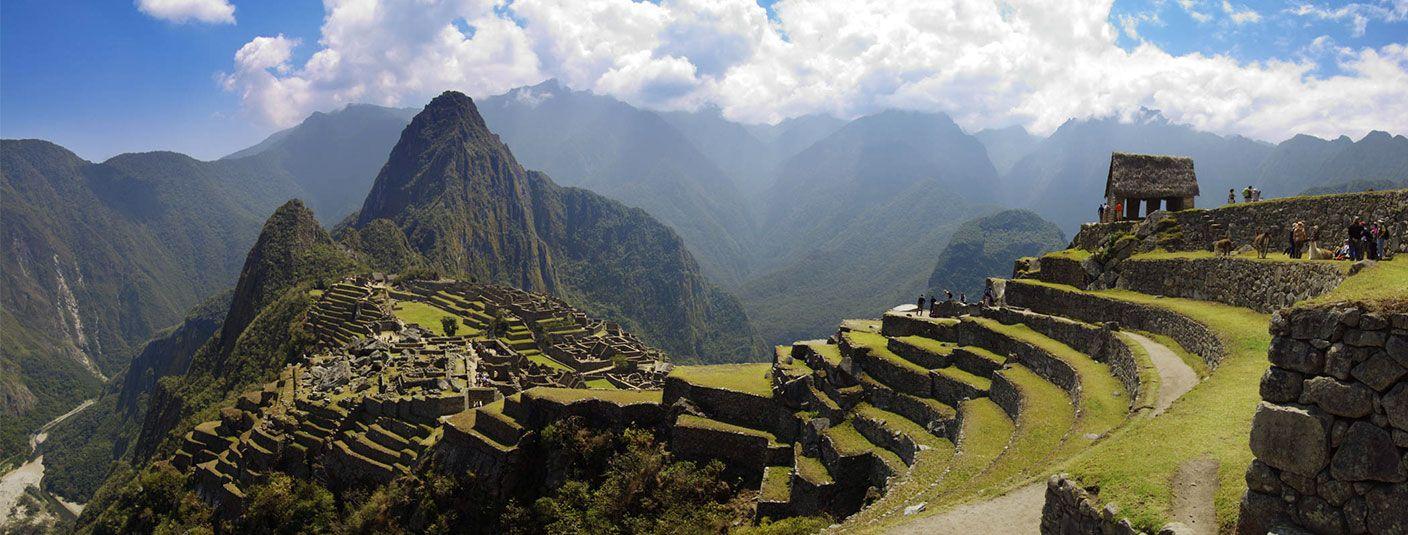
Machu Picchu
Machu Picchu is the Lost City of the Incas and inspires awe at first sight, especially if you journey there on the Inca Trail . Browse our destination guide below for essential travel details and top attractions to check out on your visit.
Only a few places in the world possess the kind of natural beauty and historic charisma that can capture the hearts and minds of visitors in an instant. Machu Picchu is one of them. Morning or afternoon, rain or shine, crowded or not - the sight of the stone temples and endless terraces set amid green-clad granite mountains never disappoints.
Forgotten after the fall of the Inca Empire and rediscovered 400 years later, Machu Picchu remains shrouded in mystery. Some questions may never be answered, but the former Inca city remains as irrefutable evidence of their highly advanced stonemasonry.
Whether by train or on your own two feet along the Inca Trail, getting to Machu Picchu is part of the adventure. Most visitors spend at least one night in Aguas Calientes, the small town at the base of the mountain from the Inca ruins. We recommend exploring the UNESCO Historic Sanctuary of Machu Picchu and New World Wonder with an expert guide, so you don’t overlook the brilliant engineering features and asserted significance built into the design of sacred temples.
Climate & Weather
Machu Picchu is at the intersection of the Andes and the Amazon, where the mild subtropical climate has warm days and cooler nights. Humidity is also higher than in Cusco and the Sacred Valley.
Rainy Season Weather at Machu Picchu changes quickly and is unpredictable throughout the year. Similar to other high altitude destinations in Peru, the region has a dry and rainy season, but these conditions changes in the weather aren’t as clearly defined. The dry winter season for Machu Picchu is from April to October, and the wet summer season is from November to March. Remember, the northern and southern hemispheres experience opposite seasons.
Best Time to Visit
- The peak season for Machu Picchu is June, July, and August. These months coincide with the region’s dry season when sunny conditions are most probable and considered by many the best time to go to Machu Picchu. Hotels, entry tickets, and other services fill up quickly, so make your reservations well in advance.
- The low season for Machu Picchu is from December to February during the rainy season. There are fewer tourists and less crowding around attractions within the citadel. Still, the tradeoff is a much higher probability for rain, so don’t forget your raingear.
Geography & Map
- Machu Picchu is located 50 miles (80 kilometers) northwest of Cusco in the Urubamba Province of Peru, where the eastern slopes of the Andes meet the Amazon Rainforest. The Inca built their city on a high mountain ridge overlooking the lush cloud forest surroundings. Far below, Urubamba River flows along the valley floor, past Aguas Calientes.
- Elevation 7,970 ft (2,430 m)
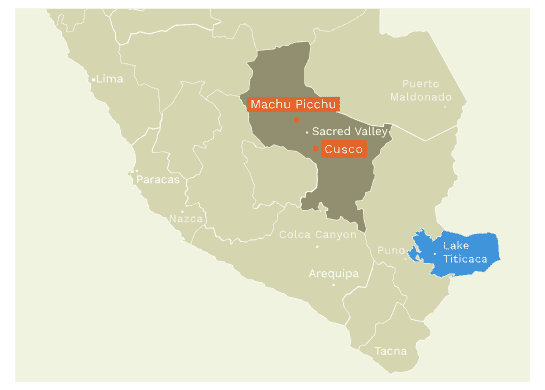
Construction for Machu Picchu began at the height of the Inca Empire around 1450 AD. Most scholars agree the mountaintop city was the royal estate of Pachacutec, the powerful 9th king. Others speculate it was a sacred center where the great political, religious, and economic minds of the Inca Empire gathered.
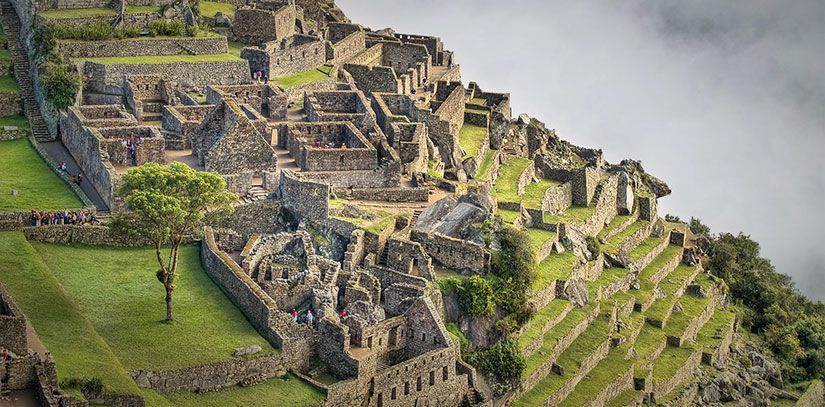
Before the construction of Machu Picchu began, they surveyed the mountaintop site. They built canals to carry freshwater to different sectors of the city. Incredibly, the Inca didn’t use steel or iron tools, nor the wheel, to make the temples, living quarters, and stone steps. Instead, they utilized simple materials such as stone, wood, and bronze. Rows of terraces were also constructed along the mountainsides for support. Without them, Machu Picchu would have tumbled down, unable to withstand centuries existing in a region prone to earthquakes and annual heavy rain.
Less than one hundred years after the construction of Machu Picchu began, during the 1530s, the city was abandoned in the aftermath of the Spanish Conquest. Widespread knowledge of the city was lost to official memory over the centuries except for some locals.
In 1911, Yale history professor Hiram Bingham chanced upon Machu Picchu while looking for the legendary city of Vilcabamba where resistance rebel leader Manco Inca retreated to safety from Spanish troops. After years of silent existence, Machu Picchu had been rediscovered and was flung into the international spotlight.
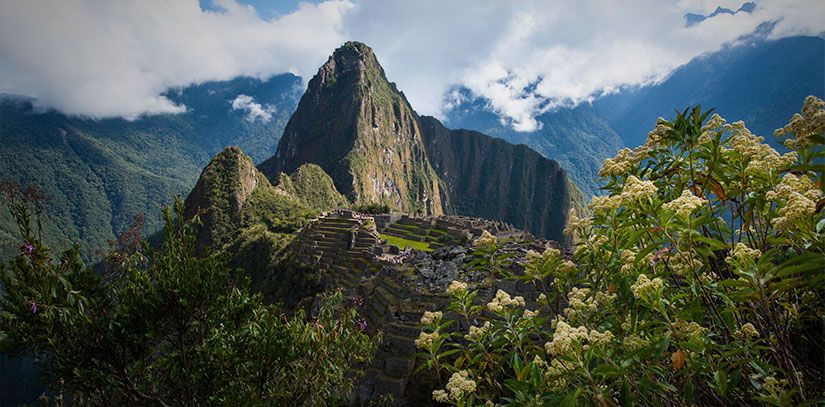
Today, Machu Picchu is a UNESCO World Heritage Sanctuary and the most visited attraction in Peru. The Ministry of Foreign Trade and Tourism counted 800,200 visitors to Machu Picchu in 2007, when the attraction was named one of the New Seven Wonders of the World, and since then that number has nearly doubled. In 2019, the famous Inca ruins were visited by 1,585,300 people from around the world.
How to Get to Machu Picchu
Machu Picchu is in a remote region of Peru, and transportation there is limited. No roads connect Cusco and the Sacred Valley with Aguas Calientes, so your only two options are to take the train or trek there.
Train to Machu Picchu
Most travelers choose to take the train to Machu Picchu for the convenience of time and comfort. PeruRail offers different train services - from budget Vistadome, upgrade Expedition, and luxury Hiram Bingham - with several daily morning and evening departures.
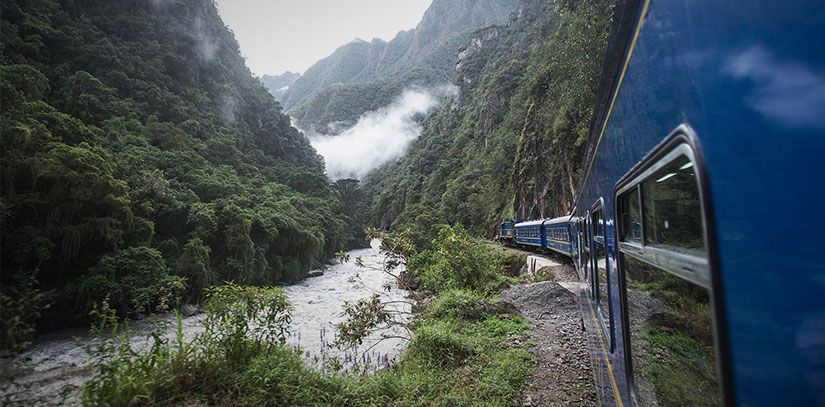
Passengers can board the train in Cusco at the Poroy Station (a 20-minute taxi ride from the city plaza) or in the Sacred Valley at the train station in Ollantaytambo and then continue along the tracks to Aguas Calientes. Upon arrival at Machu Picchu Station, the final leg of your journey is a 20-minute shuttle bus (ticket required) or uphill walk to the main entrance of Machu Picchu.
- The train from Cusco to Machu Picchu is 4 hours
- The train from Ollantaytambo to Machu Picchu is 2 hours
- The train from Urubamba to Machu Picchu is 3 hours (*limited weekly departures)
You have to travel light when you take the train to Machu Picchu because storage room onboard is limited. Each passenger is only allowed one carry-on luggage that weighs no more than 11 lbs (5kg). Many hotels in Cusco and the Sacred Valley offer free luggage storage, where you can leave a separate bag filled with belongings you won’t need for this leg of your trip.
Aguas Calientes to Machu Picchu
Aguas Calientes town is located 5.5 mi (9 km) from the Machu Picchu archeological site and 1,310 ft (400 m) of altitude lower. From the bus stop located only 3 to 5 minutes walking from the train station in Aguas Calientes, buses ferry passengers between the town and the ruins, using a zigzagging switchback road to go up and down the steep mountainside. Most tours to Machu Picchu include the bus tickets in the total price of the package. Tickets for the bus can also be purchased in Cusco or in Aguas Calientes in front of the bus stop.
The first buses depart at 5:30 am, arriving at the entrance of Machu Picchu just before the gates open at 6:00 am. Lines are usually the longest in the morning between 5:30 am and 6:15 am and when the mid-morning trains arrive from Cusco and the Sacred Valley between 9:00 am to 10:00 am.
Trekking to Machu Picchu
Adventurous travelers should trek to Machu Picchu! Trekking packages are organized so you trek to the famous archaeological site and return by train on the return leg of your journey.
The iconic 4-day Inca Trail to Machu Picchu is the most popular trek in South America. The journey takes you through high Andean passes, past lesser-known Inca sites, and culminates with a memorable entrance to Machu Picchu through the Sun Gate. There’s also the 2-day Inca Trail if you are on a tight schedule or prefer a less demanding walk.
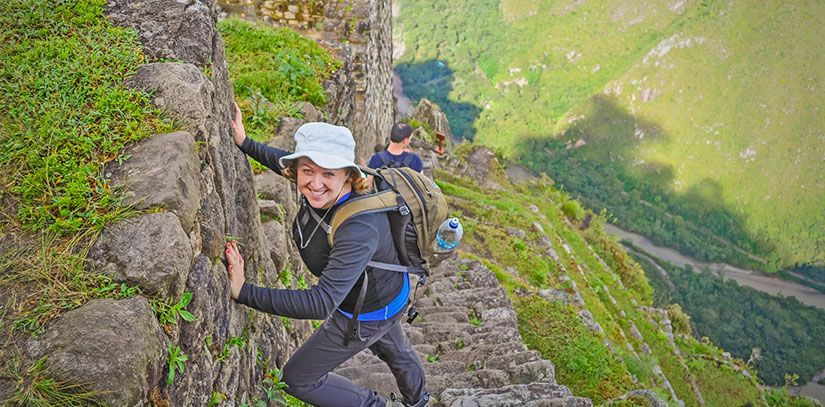
To hike the Inca Trail, you must reserve a permit in advance. There are wonderful alternative treks to Machu Picchu that don’t require a permit if Inca Trail permits are already sold out.
The 5-day Salkantay Trek is an excellent alternative trek to Machu Picchu for travelers who appreciate nature. This Andean trail passes by the imposing snow-capped Salkantay mountain, for which the trek is named, and crosses highland pampas before dropping down into a river valley cloud forest and then onto Machu Picchu. Read more about the Salkantay Trek.
The 4-day Lares Trek is another alternative recommended for trekkers whose interest lies in cultural immersion. Follow a route through the Lares Valley, passing remote villages with rich Andean traditions, beautiful mountain scenery, and lesser-known Inca ruins before touring Machu Picchu on the final day. Read more about the Lares Trek.
Visitor Guidelines
Machu Picchu Tickets
Tickets to Machu Picchu are limited and must be purchased in advance. There are general entry tickets and ones that include the hikes for Huayna Picchu (only 400 daily available) or Machu Picchu Mountain (only 400 daily available). Demand for Huayna Picchu and Machu Picchu Mountain is especially high during the peak June, July, and August dates. Advanced planning - sometimes 4 months in advance - is a must. Reserve your spot at the time you book your Machu Picchu tickets.
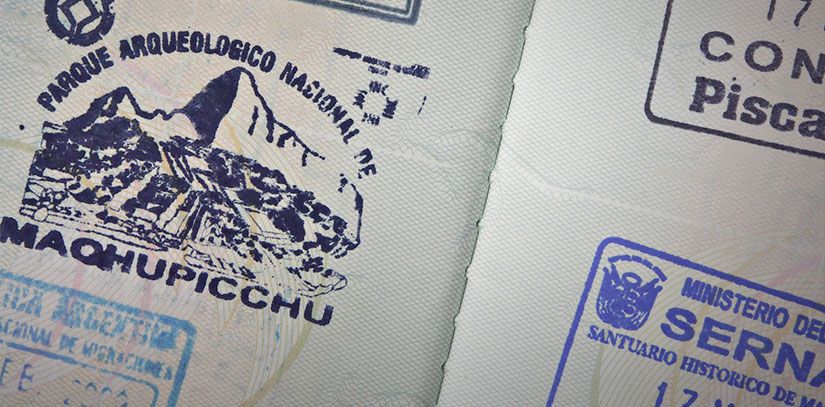
Tickets are not sold at the main entrance. If you’ve waited until the last minute, your final opportunity is at the National Cultural Institute (INC) office on the main plaza in Aguas Calientes.
Time in Machu Picchu
The time designated for you to enter Machu Picchu is selected when you buy your tickets in advance. For whichever assigned time indicated on your ticket, you have the full hour to enter the archaeological site. We suggest you arrive at the bus stop in Aguas Calientes at least one hour before your entrance time at the Machu Picchu ruins.
- An entry ticket to Machu Picchu is valid for 4 hours.
- An entry with a Huayna Picchu ticket gives you 6 hours to go on a Machu Picchu tour and do the hike.
- An entry with Machu Picchu Mountain ticket gives you 7 hours to take a guided tour and do the hike. This hike is longer than Huayna Picchu hence why you have more time in Machu Picchu.
Walking circuits around Machu Picchu help control foot traffic. Routes 1 and 2 (indicated in green and red on the map) pass similar attractions but explore different sections of the agricultural zone near the main entrance gate. Route 3 in blue is an alternative walking route so visitors with hiking permits can do Huayna Picchu or Machu Picchu Mountain.

Travel Tips
What to Bring to Machu Picchu
Here is an essential Machu Picchu packing list:
- Passport and Entry Ticket You need to present both documents at the entrance gate. Bring your original passport.
- Daypack Only small backpacks can be brought into Machu Picchu.
- Water Fill up your reusable water canteen or buy bottled water to bring in your daypack to stay hydrated as you walk around Machu Picchu, especially if you do the Huayna Picchu or Machu Picchu Mountain hikes.
- Clothing Weather changes quickly at Machu Picchu, so it is best to dress in layers so you can add or remove layers as needed. Cloudy conditions quickly turn sunny and vice versa.
- Sun Protection The sun is very strong at Machu Picchu’s high elevation, especially from June to August during the peak of the dry season. Bring sunglasses, sunblock, and a hat.
- Rain Protection During the wet season from November to March, pack a rain poncho or travel-size umbrella in your daypack to be prepared for any unexpected showers.
- Footwear Comfortable hiking boots or athletic shoes with good traction are best for walking around the stone steps at Machu Picchu.
- Camera A camera with a zoom lense gives you more flexibility to capitalize on different angles and capture stone ruins far away.
- Hiking Poles Make sure your hiking poles have protective rubber tips if you want to bring them to Machu Picchu.
What NOT to Bring to Machu Picchu
- Camera tripods, selfie sticks, and drones are not allowed inside Machu Picchu.
- Luggage and large backpacks are not allowed. Many hotels offer complimentary luggage storage. There are also storage lockers at the entrance of Machu Picchu.
- Alcohol is not allowed.
- Baby strollers are not practical with all the stairs at Machu Picchu. Instead, a baby backpack style carrier is recommended.
- Metal-tipped canes and walking poles are only allowed inside Machu Picchu with protective rubber tips.
Safety Tips
Aguas Calientes isn’t known for crime (it is virtually non-existent in Machu Picchu), but travelers should always remain wary of petty theft. This particularly applies when in large crowds of people such as at the train station where pickpocketing can go unperceived by the victim. Never leave bags or other valuable items unattended.
Local Currency & ATMs
From bottles of water to meals at restaurants, prices for food, goods, and services are a bit higher in Aguas Calientes compared to anywhere else in Peru. This is because tourism is the town’s only industry and everything has to be shipped by train. Be sure to budget accordingly. There are ATMs on the major streets, but these are known to be unreliable. Most hotels and restaurants accept major credit cards. There are no ATM machines at Machu Picchu. Read about money in Peru.
Most hotel representatives in Aguas Calientes and staff aboard the train to Machu Picchu speak Spanish and English. Tours are conducted in many languages. All Peru
Things to Do
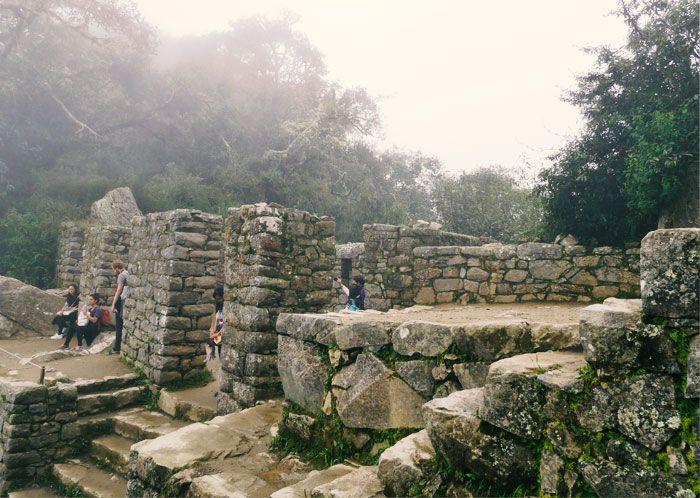
Huayna Picchu
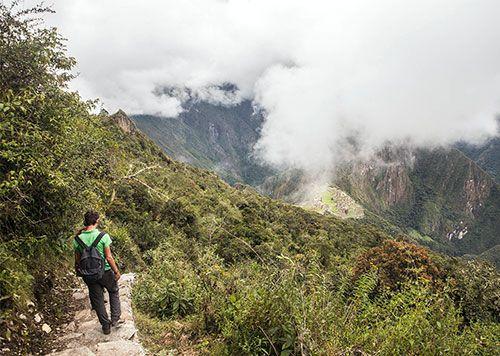
Machu Picchu Mountain
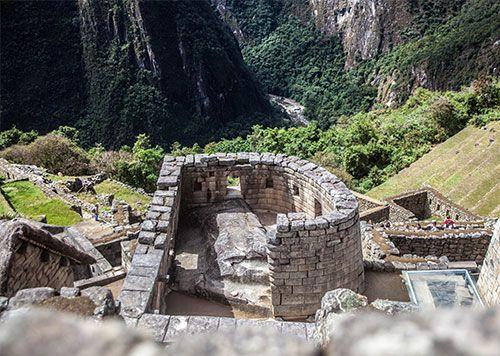
Temple of the Sun
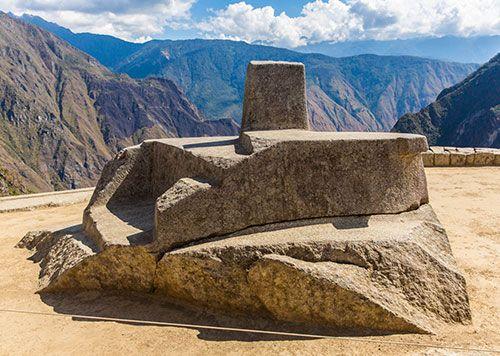
Intihuatana
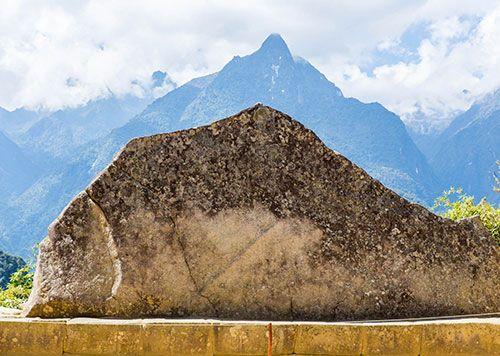
Sacred Rock
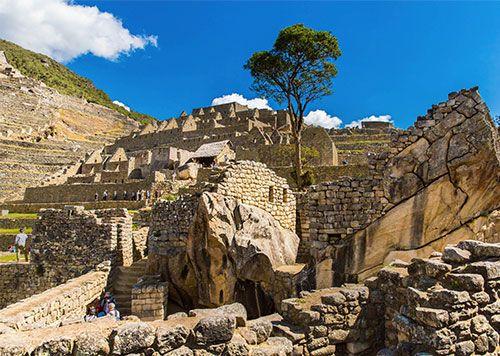
Temple of the Condor
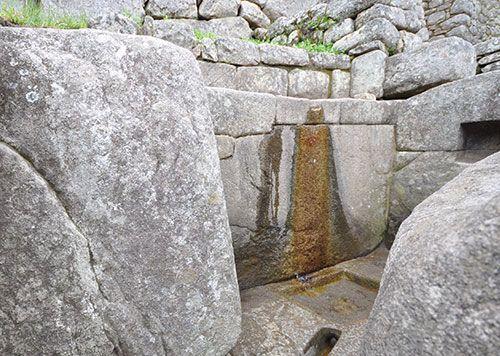
Stairway of Fountains
Options for Machu Picchu hotels range from 5-star luxury resorts to budget dorms and everything in between. Machu Picchu Sanctuary Lodge is the only hotel up on the mountain next to the main entrance of the archaeological complex. All other accommodations are in Aguas Calientes and walking distance from the train station.
It’s possible to make a whirlwind Machu Picchu trip in one day. Still, we recommend enjoying this highlight of your trip at a slower pace, if possible. Staying a night or two in Aguas Calientes spaces out the legs of transport to and from Machu Picchu and helps you stay rested for an active day of touring. The following are our Top Pick Hotels for travel to Machu Picchu.
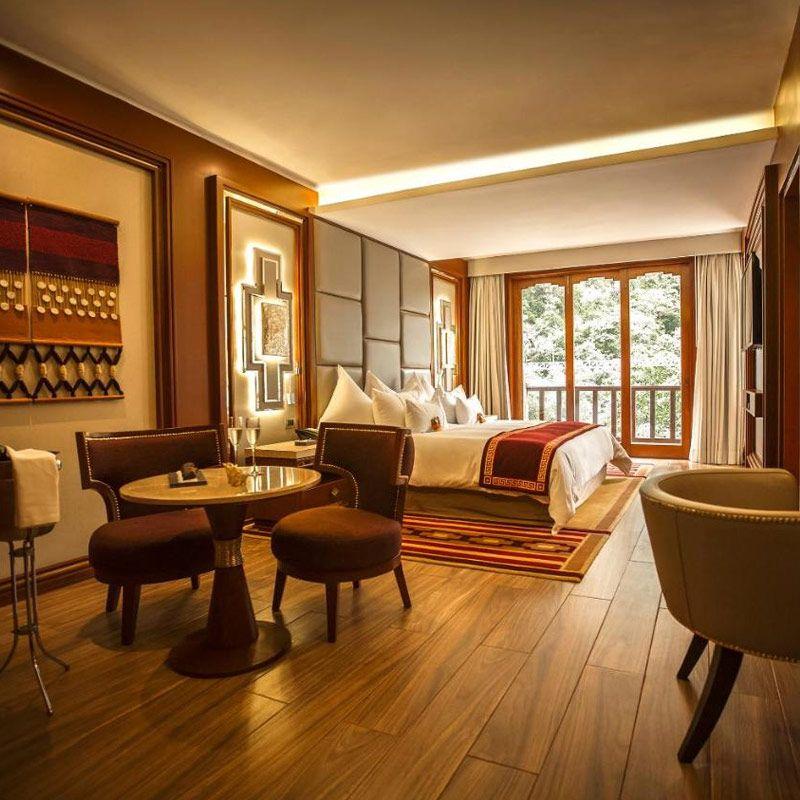
Sumaq Machu Picchu
Avenida Hermanos Ayar Mz 1 Lote 3, Aguas Calientes, Machu Picchu
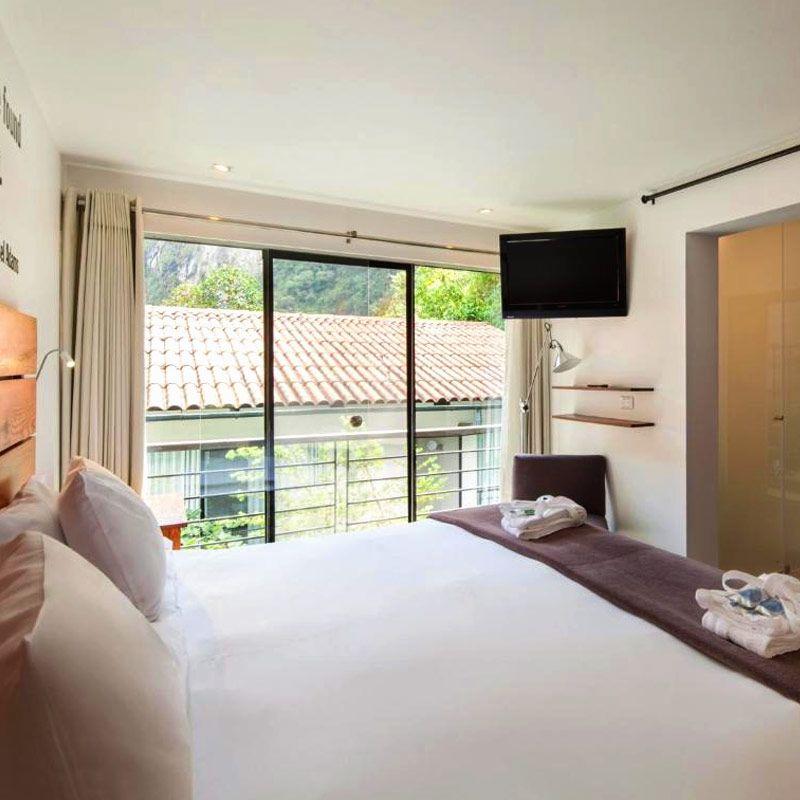
Av. Pachacutec 109, Aguas Calientes, Machu Picchu
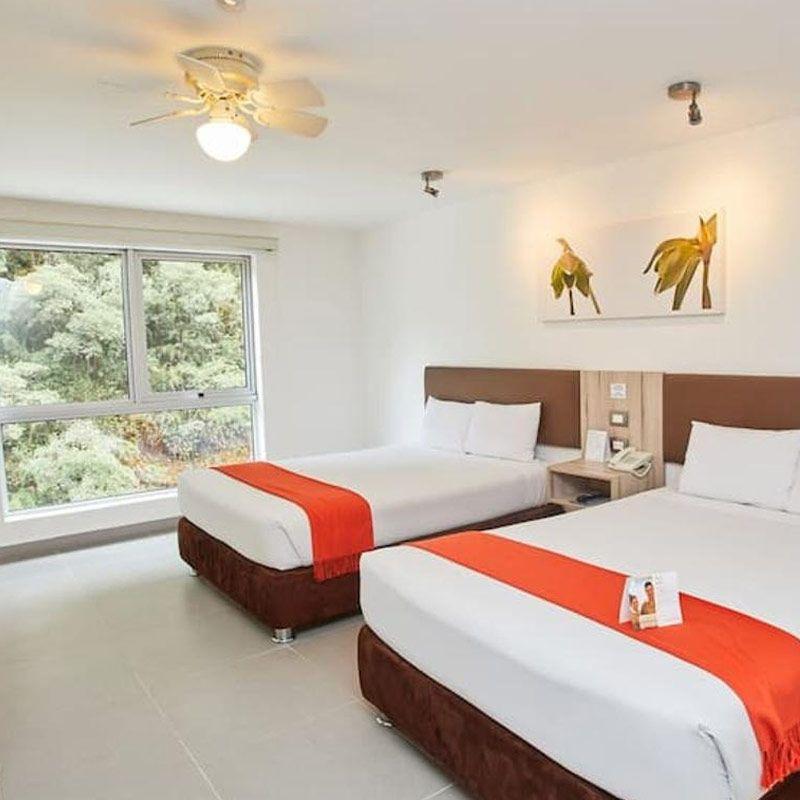
Casa Andina Standard Machu Picchu
Prolongacion Imperio de Los Incas E - 34, Aguas Calientes, Machu Picchu
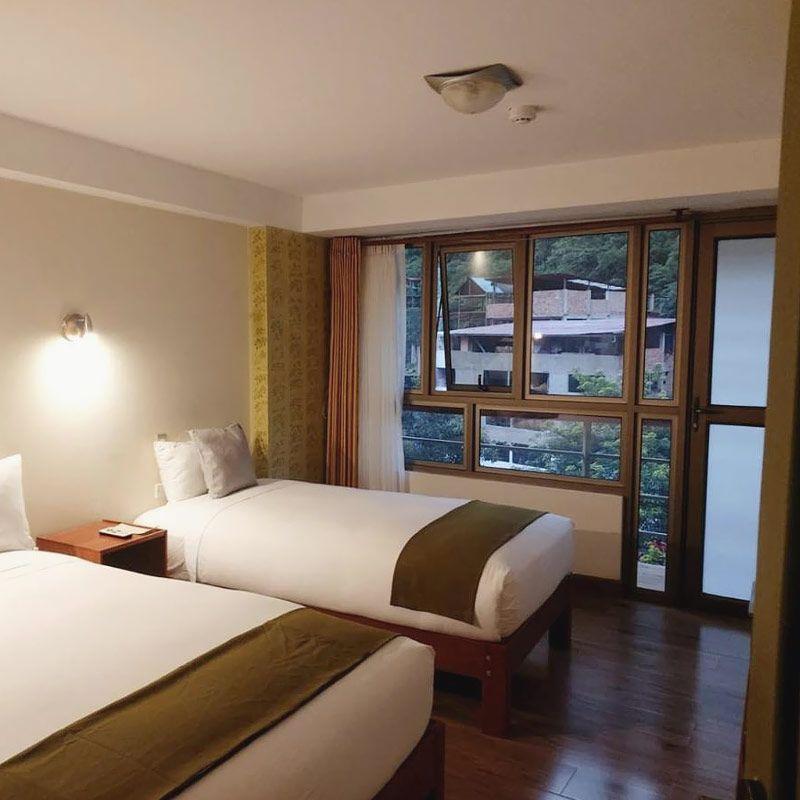
Pucara Hotel
Alameda los Artesanos 1508, Machu Picchu
Restaurants
Eating options outside the entrance to Machu Picchu are convenient, though limited. You can take a pre-made box lunch with you to Machu Picchu (available options depend on your itinerary), eat a buffet lunch at Belmond Sanctuary Lodge, or grab a quick bite at the Machu Picchu Snack Bar.
Down the hill in Aguas Calientes the restaurant selection is far more varied. Enjoy a casual sitdown meal in Machu Picchu’s gateway town at one of the following restaurants:
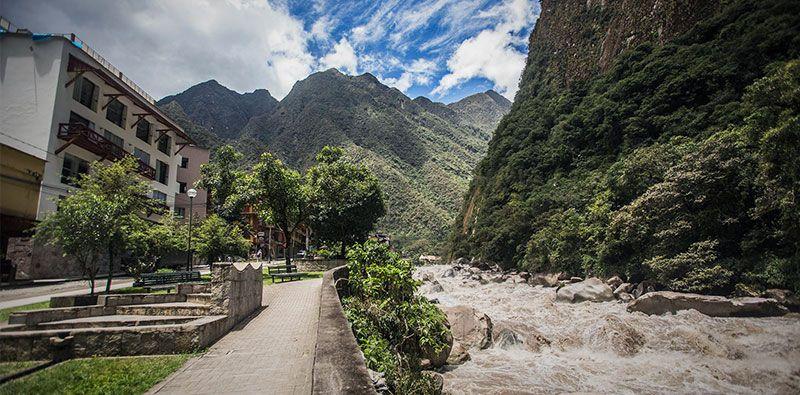
Chullpi Machu Picchu
Incontri del pueblo viejo, indio feliz restaurant bistro, the tree house restaurant, toto’s house, tour packages.
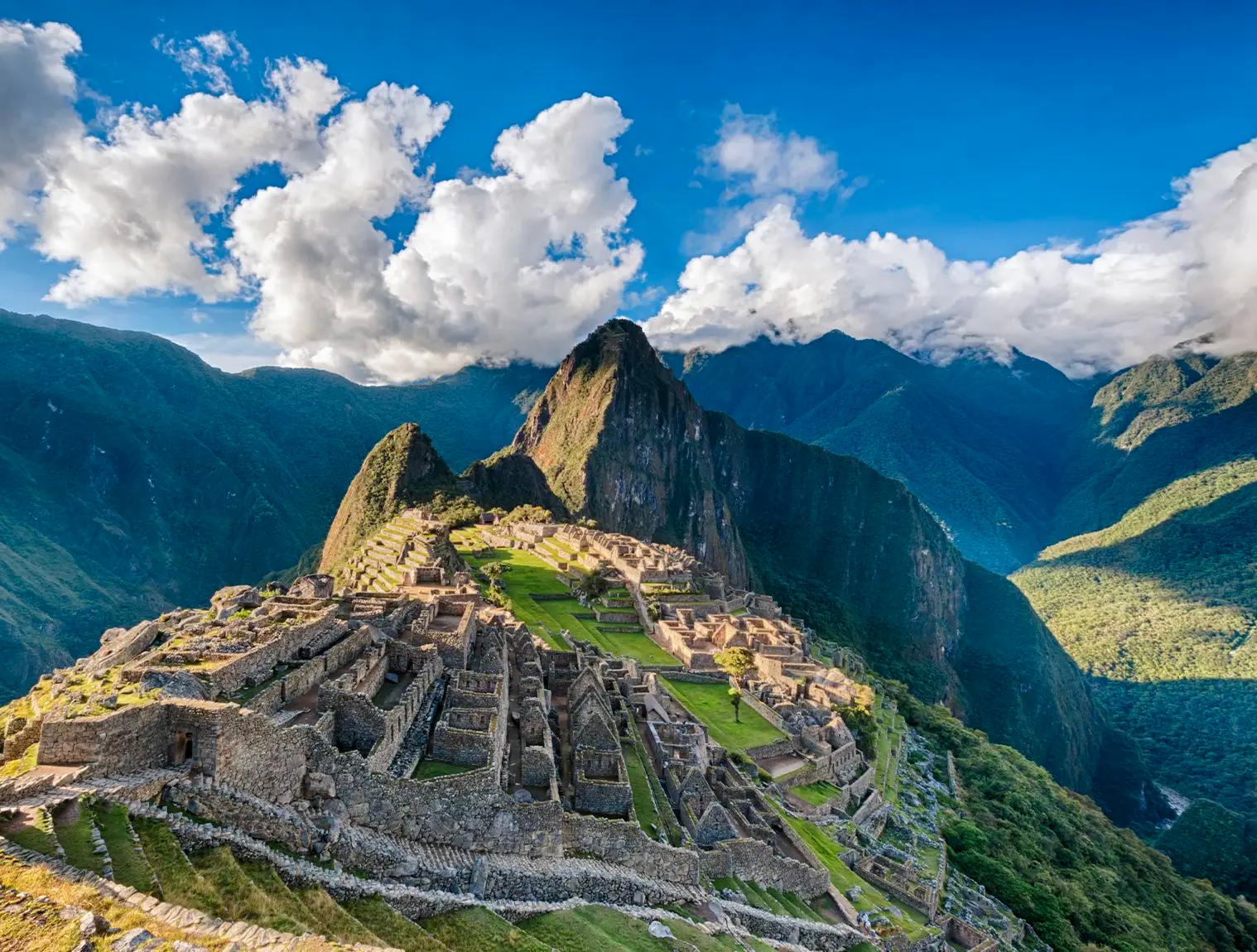
6 days from $ 1249
Cusco, Sacred Valley and Machu Picchu
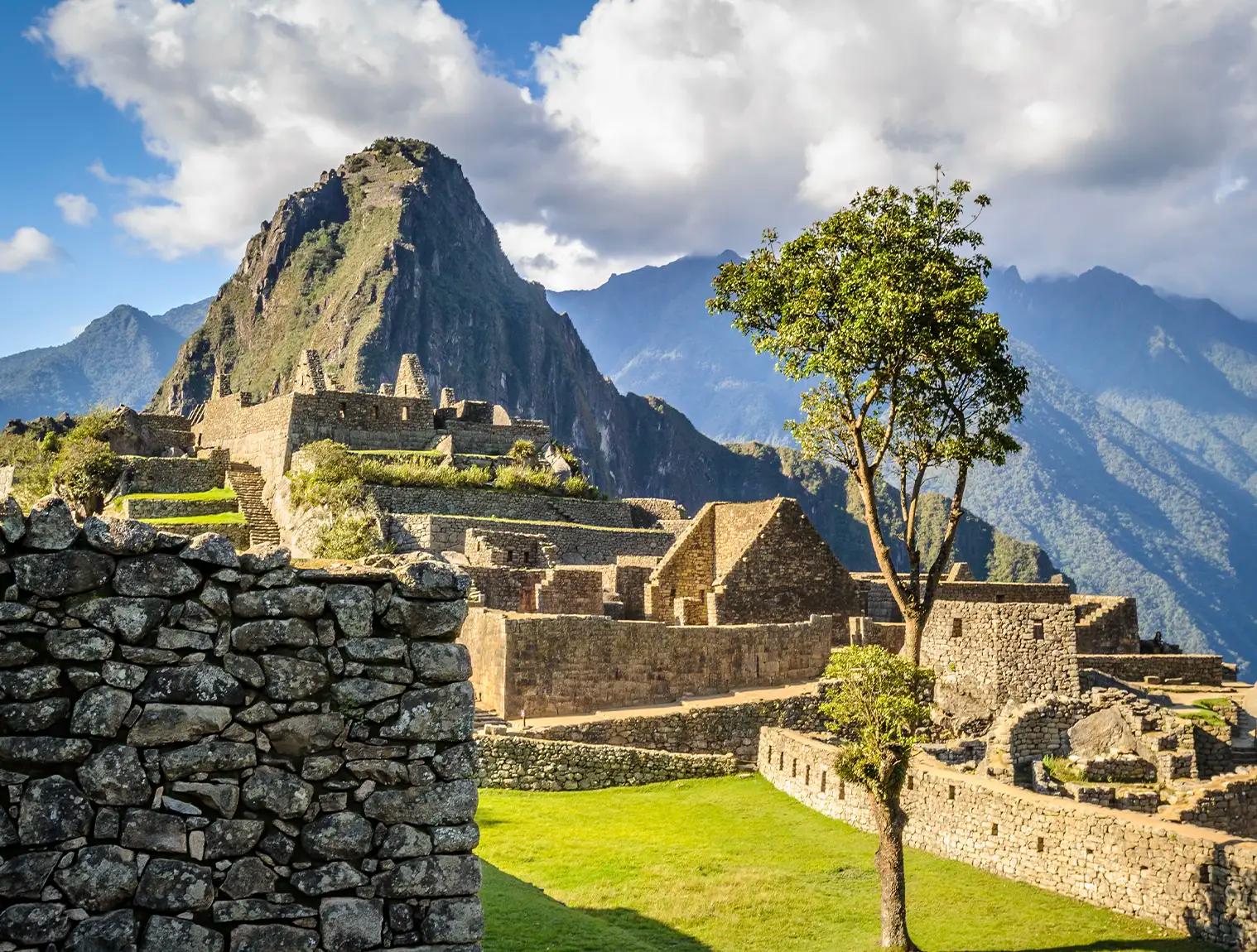
4 days from $ 989
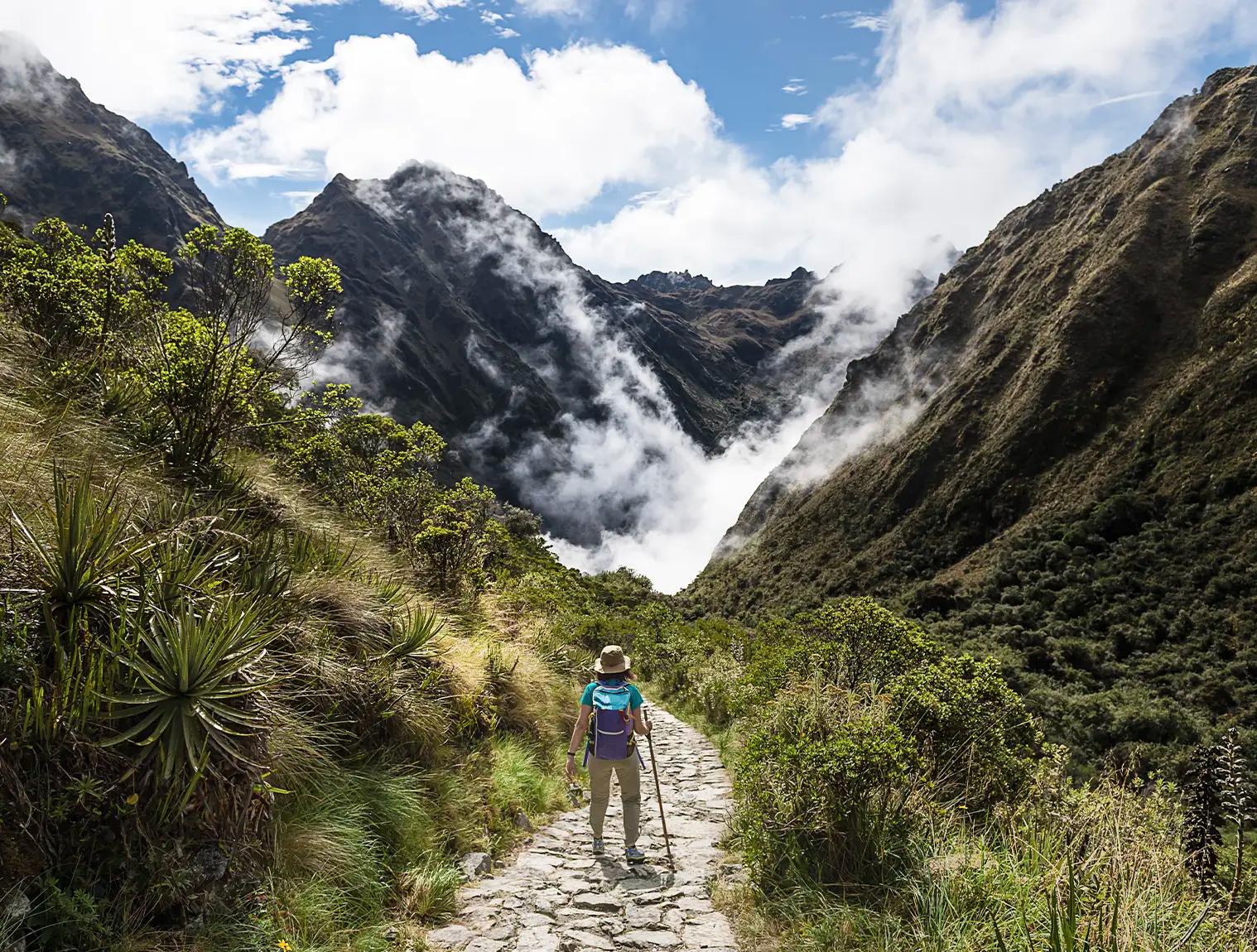
9 days from $ 2069
Cusco, Inca Trail, Sacred Valley & Machu Picchu
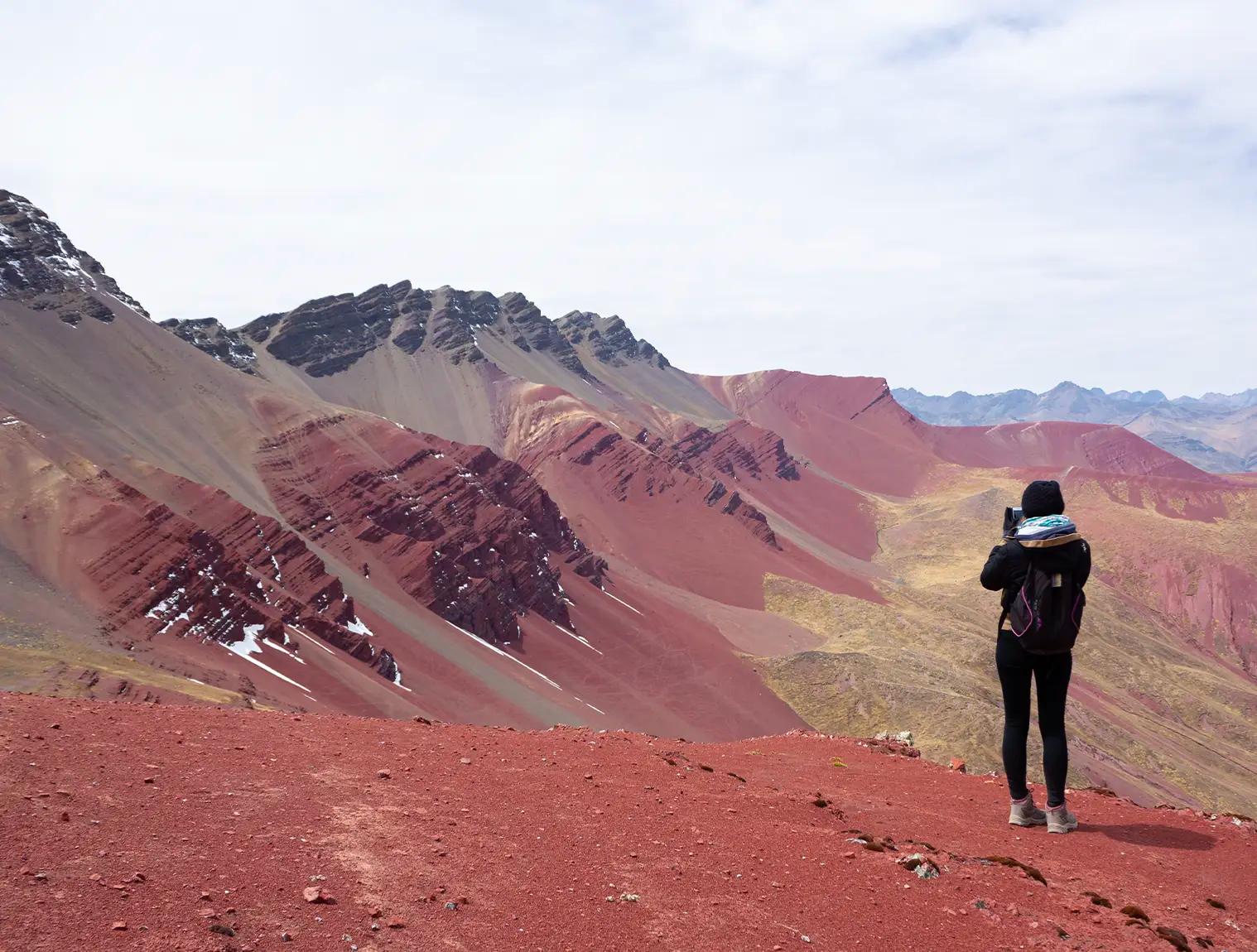
6 days from $ 1719
Cusco, Rainbow Mountain, Machu Picchu & 2-day Inca Trail
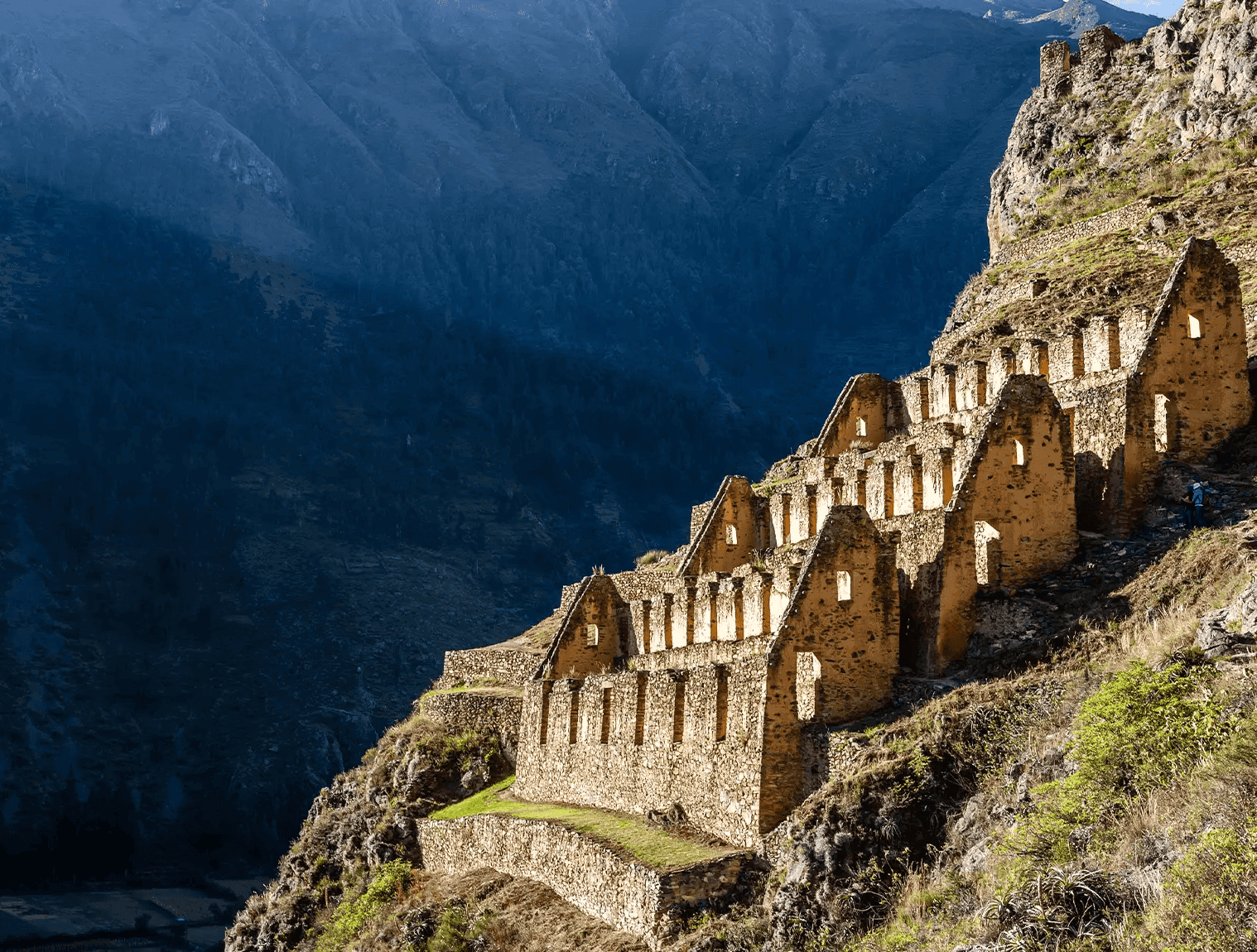
16 days from $ 3869
Machu Picchu, Cusco, Titicaca, Amazon, Lima, Paracas, Arequipa & Colca
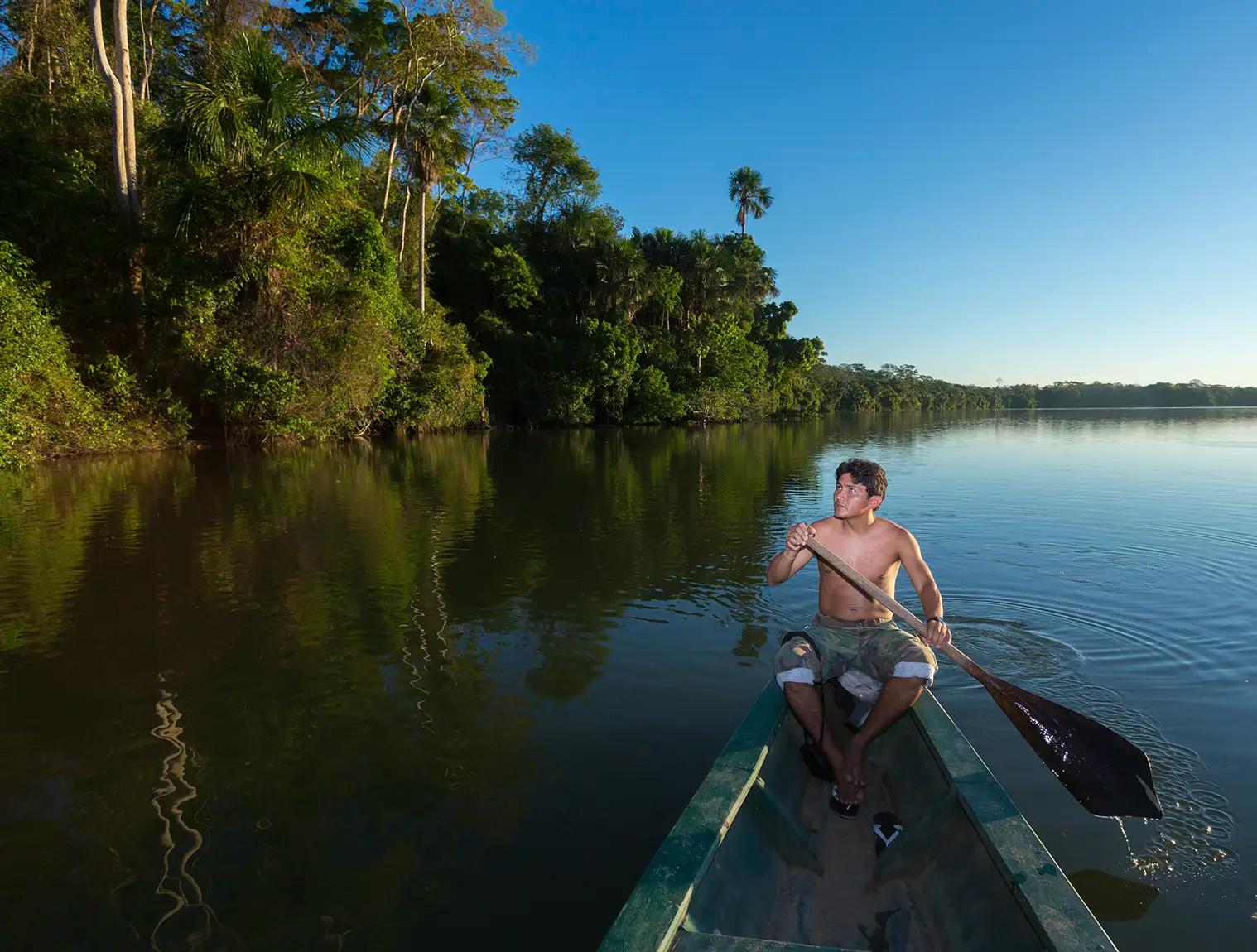
9 days from $ 1919
Amazon, Cusco, Sacred Valley and Machu Picchu
Where is Machu Picchu?
What is the best time to go to machu picchu, what is the elevation of machu picchu, can i get altitude sickness at machu picchu, how much time do i need at machu picchu, is a guide required for machu picchu, how old is machu picchu, when was machu picchu discovered, how many tourists visit machu picchu, where are the bathrooms at machu picchu, can i stay overnight at machu picchu, what is there to do in aguas calientes besides visit machu picchu.

Book With Confidence
We're flexible! Postpone your tour with zero cost up to 10 days prior to departure.
Email: [email protected]
Sign up to receive our newsletter for great articles, stunning photos, and special deals.
1-817-230-4971
Sales & travel support
Machu Picchu Guide: How to Travel to Inca’s Lost City
There are many ancient ruins, many beautiful mountain hikes, many places that combine history and mystery in an intriguing blend—but none like Machu Picchu. Perched high in the Peruvian Andes, Machu Picchu is one attraction that lives up to, and beyond, its hype.
This Machu Picchu guide gives you a complete rundown on how to travel to Machu Picchu , how to plan your trip to see the Machu Picchu highlights, and other useful tips to make the most out of your adventure. Read on for the ultimate guide to the Lost City of Inca.
Where is Machu Picchu?
Machu Picchu is situated in south central Peru, a South American country with 5 bordering neighbors: Ecuador, Colombia, Brazil, Bolivia, and Chile.
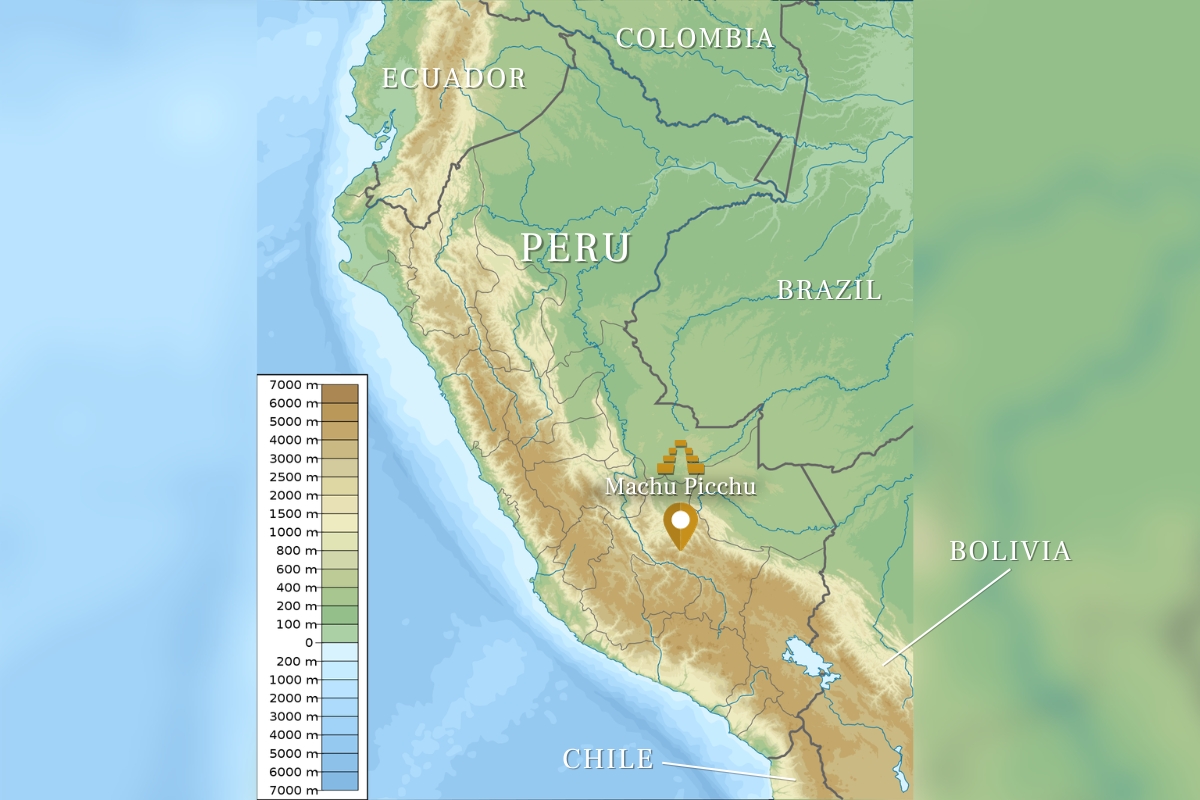
Most historians believe Machu Picchu’s mountainside construction began in the 1400s under the watchful eye of Inca ruler Pachacutec. The prevailing theory is that Machu Picchu was a royal retreat, a place where the Inca elite could relax and enjoy their lavish surroundings.
For this reason, Machu Picchu was placed far from other Inca cities and sites. It was so well isolated that the Spaniards—who conquered the Inca Empire and its Cusco capital in the 1530s—never knew Machu Picchu existed.
Machu Picchu Mountains and Altitude
Machu Picchu sits within the Cordillera de Vilcabamba, a small Andean range that runs for 160 miles and reaches 20,575 feet above sea level at its highest point. Machu Picchu, however, only hits 7,970 feet above sea level, a lower altitude than the city of Cusco.
The ruins are located between two main peaks: Machu Picchu and Huayna Picchu (also spelled Wayna Picchu).
This area of concentrated ruins covers only about 20 of the 80,310-acre Machu Picchu Historic Sanctuary, a UNESCO World Heritage site since 1983. Overlooking the Urubamba River, the Sanctuary’s ecosystem is influenced both by the Andes and the Amazon, creating a lush tropical mountain forest environment.
Due to Machu Picchu’s high elevation, altitude sickness can be a concern for visitors. To alleviate common symptoms such as fatigue and headache, SA Expeditions allows every traveler at least one day of acclimation upon arrival to Cusco. When acclimating to altitude, it’s important to stay well-hydrated, have enough rest, and avoid alcohol and strenuous activity.
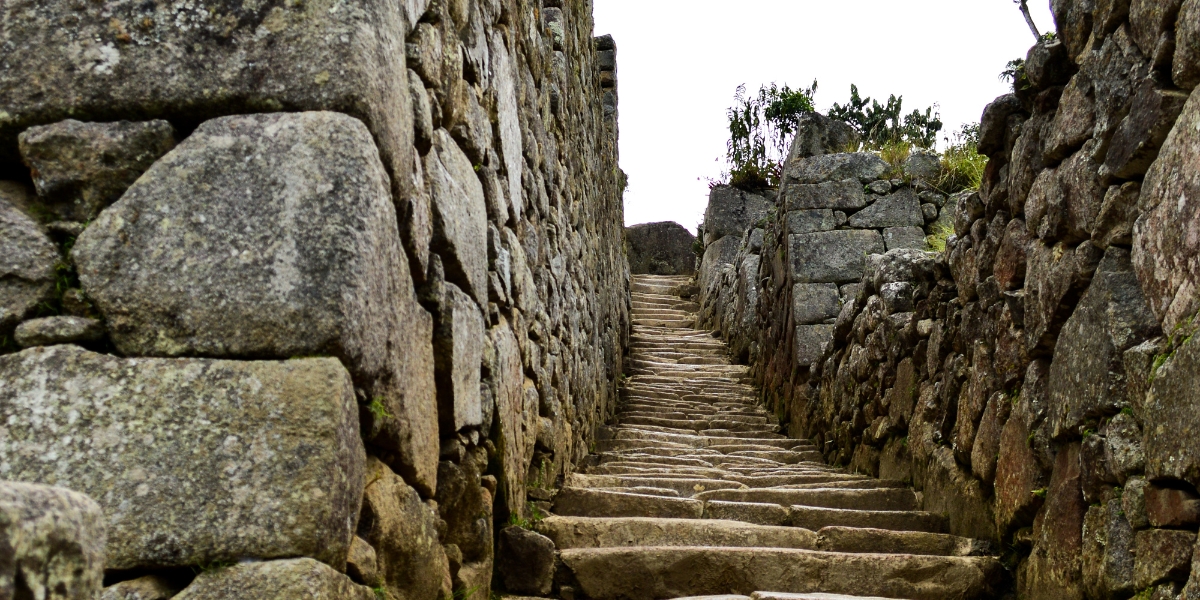
How to Get to Machu Picchu?
A typical Peru vacation begins in Lima, the location of the country’s main international airport. Lima is also the capital and largest city in Peru.
From here you will likely fly to Cusco, the city closest to Machu Picchu. Time in the air is about one hour.
From Cusco, Machu Picchu is about 70 miles northwest by road, on the other side of the Sacred Valley.
Below Machu Picchu on the other side of the mountain is the tiny town of Aguas Calientes, also called Machu Picchu Pueblo or Machu Picchu Town. Most people who visit the citadel will spend at least one night in Aguas Calientes. Other than the Inca Trail, this town is the only access point to the ruins.
Trains to Machu Picchu
Trains to Machu Picchu leave from three different stations in the Cusco Region: Ollantaytambo, Urubamba, and Poroy. SA Expeditions typically has travelers depart from the Ollantaytambo and Urubamba stations to reach Aguas Calientes, the gateway to Machu Picchu since its the most scenic and efficient route.
The train from Ollantaytambo takes about 1.5 hours and is operated by PeruRail and Inca Rail.
The train from Urubamba takes about 2.5 hours and is operated by PeruRail.
The train from Poroy takes about 3 hours and 15 minutes and is operated by PeruRail.
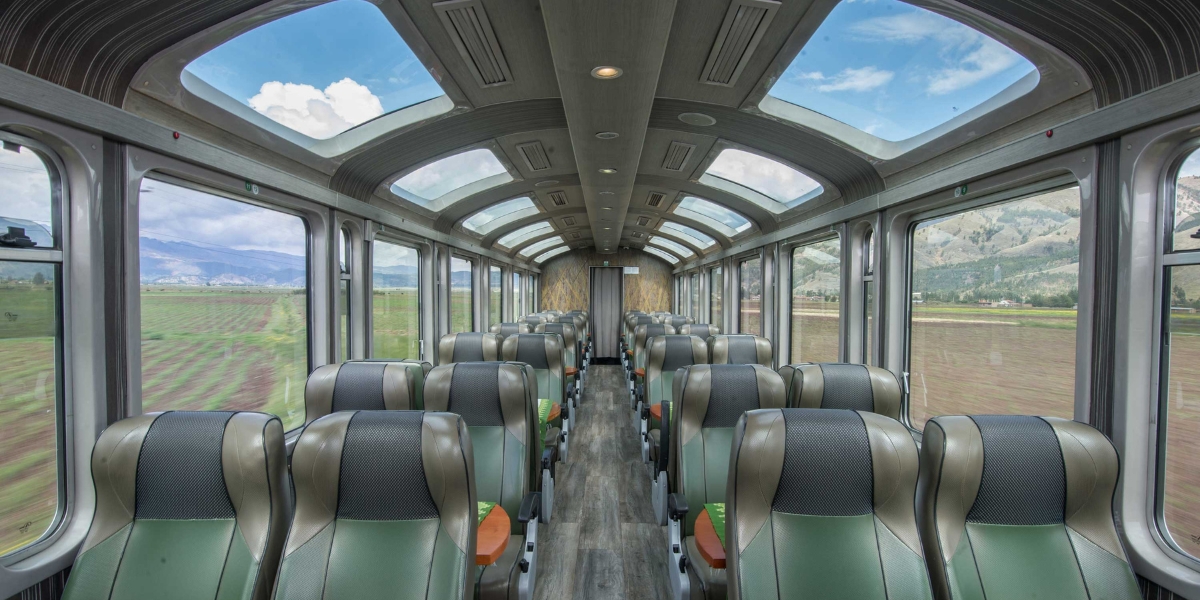
PeruRail and Inca Rail have several types of trains that offer comfortable seating and various amenities. Depending on your choice of train, you can enjoy food and beverage services, panoramic windows that allow fantastic views, and exclusive bar and gourmet meal services as you make your way to the iconic Wonder of the World.
From Aguas Calientes to Machu Picchu
Aguas Calientes sits at 6,690 feet above sea level, while Machu Picchu is at 7,970 feet above sea level. Accessed via the Hiram Bingham Road, there are two different ways to travel up to Machu Picchu from Aguas Calientes:
Bus: We recommend taking the 30-minute bus ride to Machu Picchu as this is the quickest and most physically friendly way to get to the ruins. You will have more time to explore Machu Picchu, as well as do additional hikes around the site. Buses to Machu Picchu leave from 5:30AM to 3:30PM every 5-10 minutes.
By foot: The walk from Aguas Calientes to Machu Picchu takes about two hours and boasts stunning landscapes, such as the mountain range and thick vegetation that surrounds Machu Picchu. With a gain of over 1,200 feet, trekking up to Machu Picchu can be physically demanding.
If time permits, a bonus option can be to take the bus ride up to Machu Picchu and return by walking back down to Aguas Calientes, descending the mountain. Whichever you prefer, SA Expeditions will help you organize all necessary transportation to get to Machu Picchu.
Hike the Inca Trail to Machu Picchu
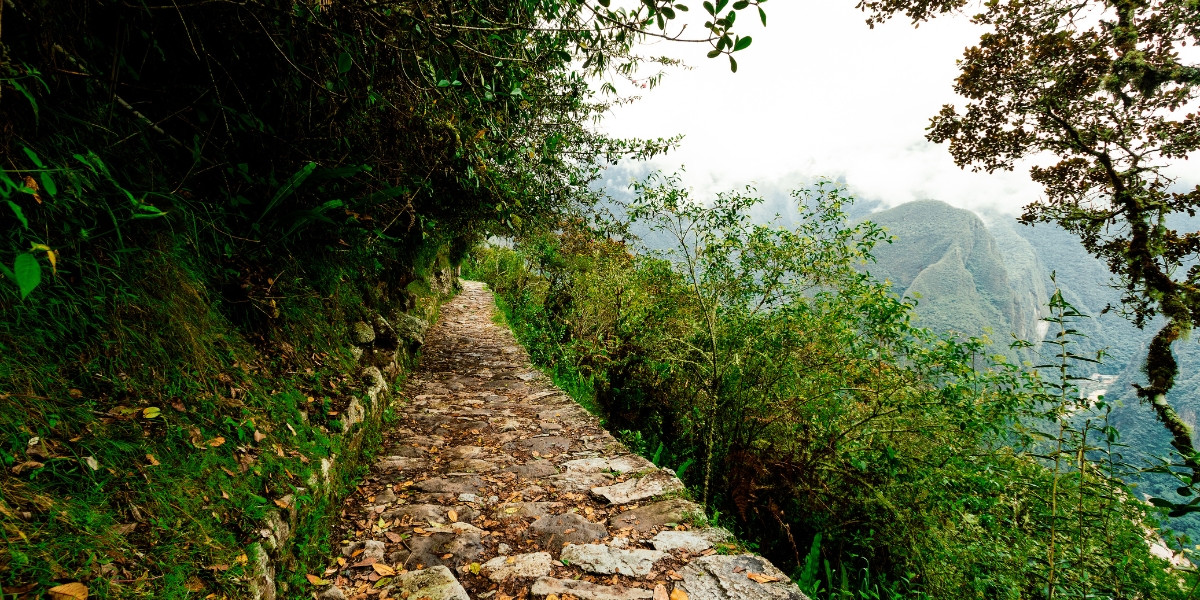
Hiking the Inca Trail to Machu Picchu is one of the best ways to truly immerse yourself into the world of the Inca. The best options include hiking the Classic Inca Trail, the Short Inca Trail, or the Salkantay Trek.
The Classic Inca Trail : Starting with a train ride from Cusco to the trailhead, this famous route takes you on a 26-mile trek from KM82 to Machu Picchu. For four days, you will be hiking through various Inca sites, including Llactapata, Sayacmarca, Phuyupatamarca, Wiñay Wayna, and the infamous Dead Woman’s Pass, before beholding the magical Machu Picchu.
The Short Inca Trail : The Short Inca Trail is a day hike that is essentially the final 9 miles of the Classic Inca Trail. This is a great option for those who aren’t interested in camping but would still like to experience the Inca Trail. From Cusco, you will take a train ride to KM104 to begin your hike to Machu Picchu. Passing through Chachabamba, you will get the chance to see the awe-inspiring archaeological site of Wiñay Wayna and approach Machu Picchu through the glorious Sun Gate.
The Salkantay Trek : Starting with a car ride from Cusco to the trailhead, the Salkantay Trek takes you on a 41-mile hike from Soraypampa to Aguas Calientes. For four days, you will be hiking among majestic mountains, beautiful cloud forests, and fascinating sites like Llactapata until you arrive to your hotel at Aguas Calientes. The following day, you will take the bus to the magnificent ruins of Machu Picchu.
Other Treks around Machu Picchu
The treks mentioned above aren’t the only spectacular trails near Machu Picchu! If you're seeking a less crowded yet equally breathtaking path, there are several other options, such as the trek to the vast, mythical ruins of Choquequirao or Vitcos , both located in the remote and little-visited Vilcabamba Range. The three-day Lares Trek takes you among stunning mountain and lake views, lovely Andean villages, and the fascinating Inca site of Pumamarka.
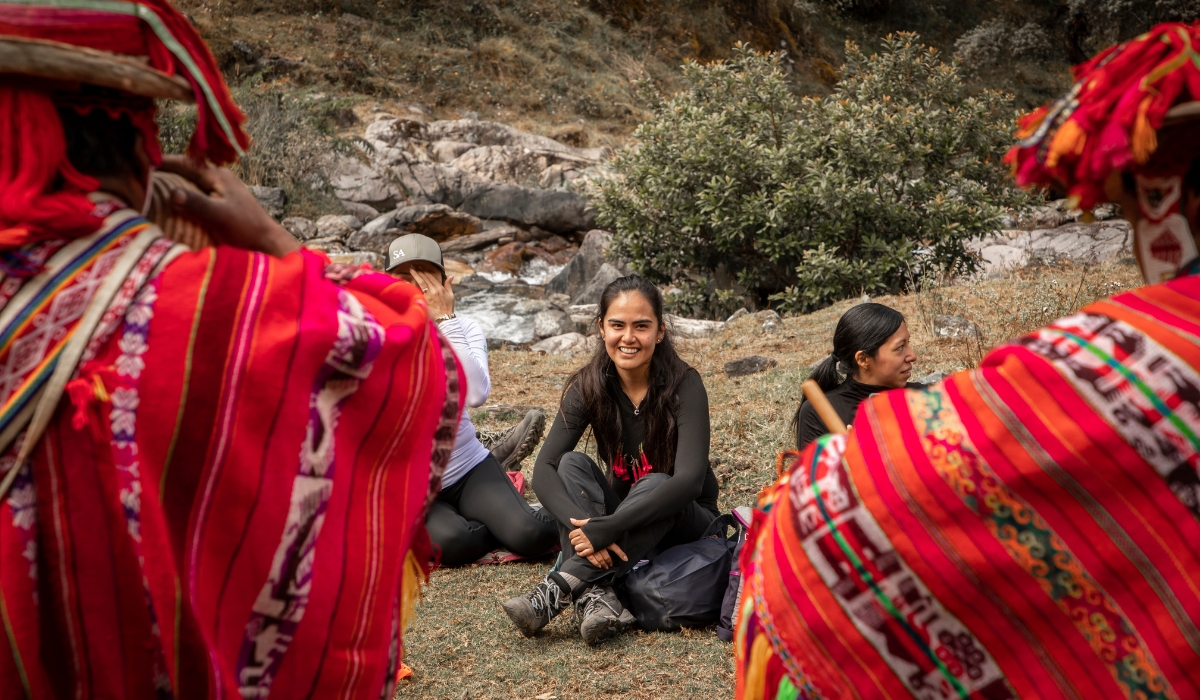
For a truly special experience (and a past traveler favorite), the two-night Choquechaca Trek is a unique and authentic experience developed by SA Expeditions in conjunction with the people of the Choquechaca Valley, who have become integral partners in our company's journey. You’ll trek through remote and pristine landscapes accompanied by the people who have lived there for centuries, camp in spectacular locations, and visit your guides’ ancestral village and meet their families.
For those who aren’t keen on camping every night but still want to explore the Inca Trail, our Great Inca Trail Day Hikes would be perfect for you! This tour takes travelers off the beaten path to some of the most pristine sections of the Qhapaq Ñan, or Great Inca Trail, including the Choquechaca Valley. At the end of each day, you’ll be able to unwind at a cozy hotel.
How to Plan your Trip to Machu Picchu
Machu picchu tickets.
In Machu Picchu, there are five different types of entry tickets: Machu Picchu only, Machu Picchu and Huayna Picchu, Machu Picchu and Huchuy Picchu, Machu Picchu Mountain and the ruins, and Machu Picchu and the Inca Bridge.
Considering each experience takes different lengths of time, each ticket has distinct entry hours as well as designated routes throughout the Inca ruins. The traveler must enter the ruins in the hour they have purchased. For example, a 6:00AM entrance must enter the site between 6:00-6:59AM.
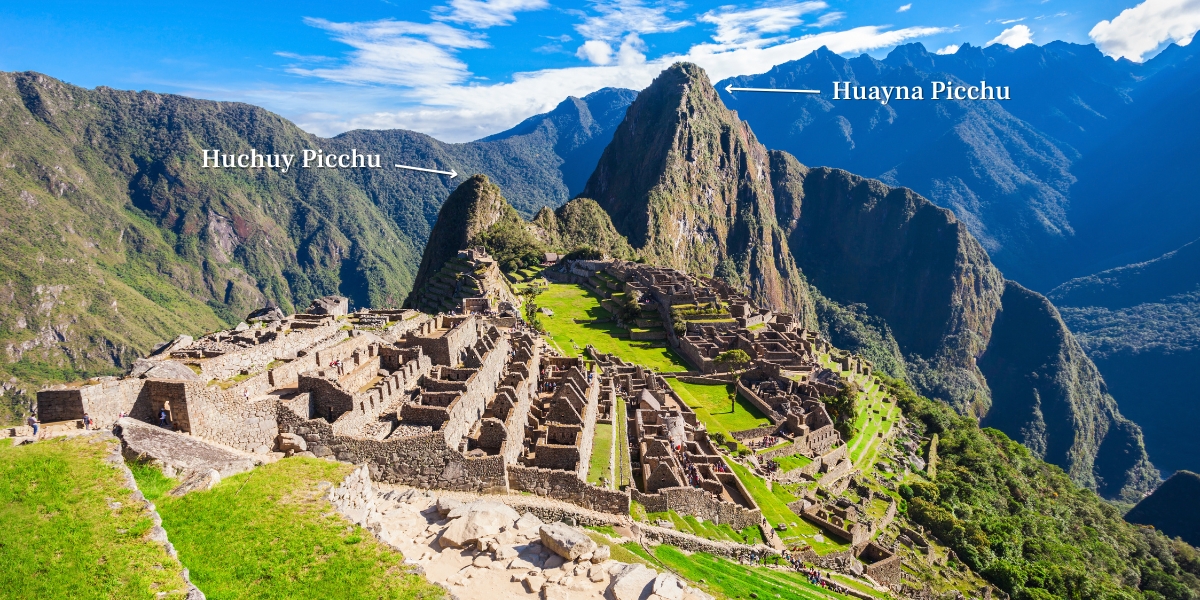
Those with Machu Picchu Only tickets can go through any of the four circuits within the archaeological site. However, we recommend taking Circuit 1 or Circuit 2 as they provide the most comprehensive tours throughout the ruins. These routes take about three hours to complete.
Travelers with tickets to Machu Picchu and Huchuy Picchu go through Circuit 4 . The route to Huchuy Picchu takes about three hours to complete.
Visitors with tickets to Machu Picchu and Huayna Picchu also hike through Circuit 4 . The route to Huayna Picchu takes about four hours to complete.
Those adding a visit to Machu Picchu Mountain will take Circuit 3 , then hike up the Machu Picchu Mountain Route , taking about five hours to complete. (Not sure whether to hike Machu Picchu Mountain or Huayna Picchu? Check out this blog !)
Visitors with tickets to Machu Picchu and the Inca Bridge walk through Circuit 1 or Circuit 2 , taking up to three hours to complete, along with a 20-minute hike to the Inca Bridge .
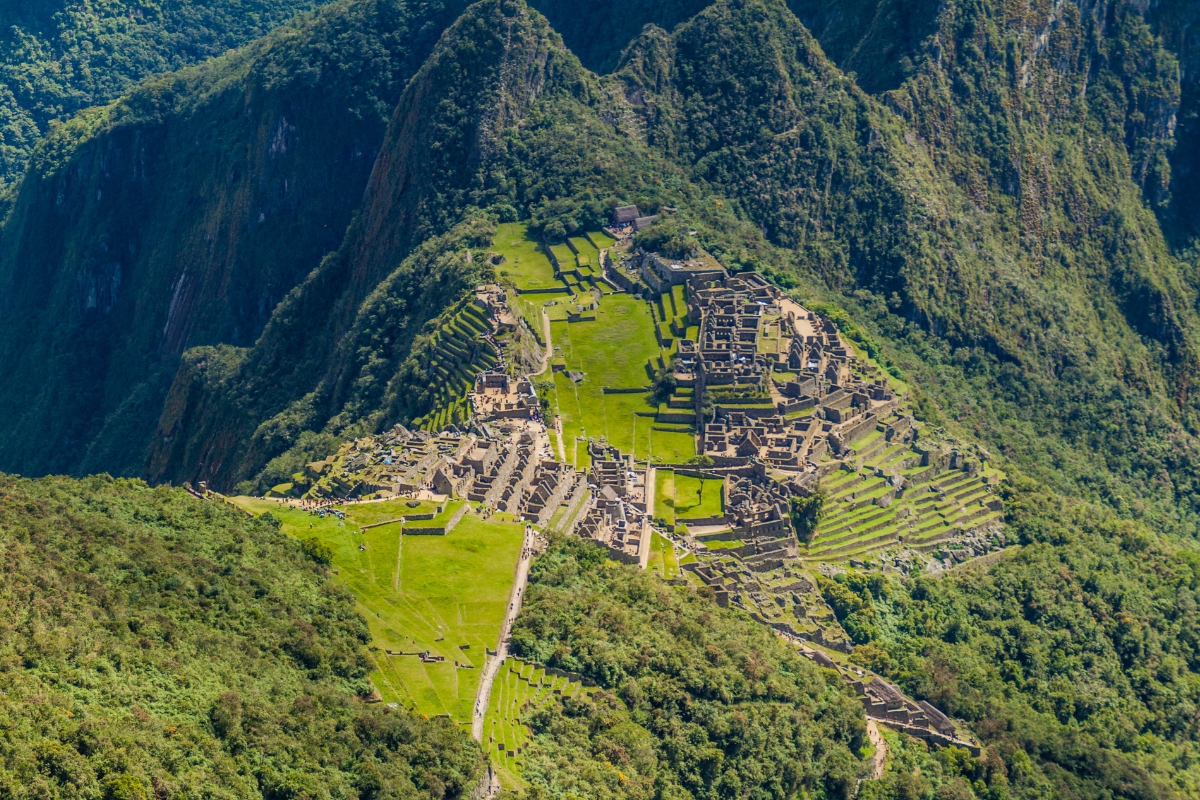
Booking your ticket in advance is essential! We recommend booking at least three months in advance, noting that Huayna Picchu and Machu Picchu Mountain tickets are higher in demand than general Machu Picchu admission. Booking with SA Expeditions will ensure you secure all tickets and transportation necessary for your unforgettable journey.
Plan the Visit to Machu Picchu
Most Machu Picchu tours include 2 hours with a specialist guide who details the most important and interesting structures. With SA Expeditions, you will have the same local expert guide all throughout your journey in Cusco, the Sacred Valley, and Machu Picchu to ensure your trip runs as smoothly as possible.
As the site contains over 200 buildings (or partial buildings), there is plenty to explore, and an early morning visit is highly recommended. As the sun breaks through the mist, Machu Picchu is tantalizingly revealed bit by bit until the whole complex is enveloped in an amber glow. To fully appreciate the splendor of a Machu Picchu sunrise, head directly to the Sun Gate or toward Huayna Picchu, both of which offer panoramic views of the entire complex.
Perhaps Bingham, the first Westerner to experience these mystical ruins, describes the beautiful mix of expert architecture and stunning scenery better than any other:
“The Incas were, undeniably, lovers of beautiful scenery. Many of the ruins of their most important places are located on hill tops, ridges, and mountain shoulders, from which particularly beautiful views can be obtained. Remarkable as is the architecture of Machu Picchu, and impressive as is the extent of the stone-cutting done by a people who had no steel or iron tools, neither of these things leaves more impression on the mind of the visitor than the inexpressible beauty and grandeur of the surroundings.”
Machu Picchu Highlights

Having a general entrance to Machu Picchu and hiking Circuit 2 takes you through the best parts of the ruins, including sites such as:
Temple of the Sun
Temple of the Condor
Hall of Mirrors
Three Covers
Sacred Rock
Intihuatana
Sacred Plaza
The Guardhouse
Other highlights include the supplemental admissions to the Inca Bridge, Huayna Picchu, Huchuy Picchu, and Machu Picchu Mountain. Hiking up Huayna Picchu also brings you to the Temple of the Moon.
If you are hiking the Inca Trail to Machu Picchu , Intipunku (also known as the Sun Gate) is the iconic gateway where you catch your first glimpse of the Inca citadel. While you can still hike out and back to Intipunku from the ruins with a general admission, note that the Sun Gate is over 1,000 ft. higher than ruins, meaning this would add an extra few hours to your visit. We recommend touring the site before deciding to hike to Intipunku.
Best Time to Visit
Machu Picchu is open year-round and the best time to visit ultimately depends on personal preference.
The dry season is from May to September, while the wet season is from October to April. Each period has their own pros and cons. The dry season is the most popular and busiest time of the year with little to no rainfall, and even holds the fascinating Inti Raymi festival. Although the rainy season can be more challenging, there is less crowding on site and the rainfall brings lush vegetation and blooming flowers. To have the best of both worlds, consider visiting during the shoulder seasons in May or September. Take a look at a more detailed guide of when to visit Machu Picchu here .
Where to Stay
Aguas Calientes offers a variety of options available for lodging. For those who enjoy boutique hotels, Casa Andina is set alongside the Vilcanota River and provides an excellent setting for relaxing before and after a full day of exploration at Machu Picchu, along with an elaborate breakfast buffet and a fully stocked snack store for meals-on-the-go.
For travelers seeking a more superior or luxurious option, Sumaq is an excellent lodge also set by the Vilcanota River, offering cozy and charming, upscale bedrooms and an elegant restaurant serving tasty Peruvian fusion cuisine.

Other options include El Mapi and Pueblo Hotel. El Mapi boasts a great location near the town square and hot springs, plus an impressive hotel bar and café, while Pueblo Hotel holds quaint, luxurious cottages and sumptuous amenities like a natural Andean sauna, a naturalist center, and an exquisite restaurant.
Packing Tips
When visiting Machu Picchu , keep a few things in mind: the weather in the Andes can be unpredictable, the terrain can be quite rugged (especially on the Inca trail), and you may be on your feet for an extended period of time. Our main advice for what to bring to Machu Picchu would be:
Lightweight, quick dry clothing
Layers to be able to put on and take off necessary clothing
Comfortable, sturdy shoes
Rain jacket or poncho
Sun protection (sunscreen, hat, lip balm, etc.)
Lots of water!
Considering there are limitations when bringing baggage on the train to Machu Picchu, you will need to make sure you have a separate duffel, backpack, or small suitcase apart from your main luggage (full checked-size suitcases are not permitted on the train). During your stay at Machu Picchu, your main luggage will be stored securely at your Cusco or Sacred Valley hotel at no additional charge.
If you're traveling with SA Expeditions on a Machu Picchu Trek , you're in luck! Several essential items, such as a tent, sleeping system, meals, and even bathroom, are already included in your trip. For more information, read our ultimate guide on packing for the Inca trail to Machu Picchu .
Machu Picchu History: When and how were the ruins discovered?
Built by the Incas around 1450 and later abandoned, Machu Picchu sat in relative obscurity until 100 years ago when Hiram Bingham, an American explorer and professor, stumbled upon the ruins in July of 1911. Bingham, guided by in-the-known locals, mapped, and documented the jungle-covered stone ruins to the best of his ability before returning to the United States where he published his finding in National Geographic.

In his own words, Machu Picchu:
“…not only is larger and contains more edifices than any other ruin discovered in Peru (except Cusco); it has the additional advantage of not having been known to the Spaniards, of not having been occupied by their descendants, and of not having been torn to pieces by treasure hunters seeking within the walls for the gold and silver ornaments that were not to be found in the floors.
In other words, Machu Picchu is not only more extensive than any previously discovered Inca city outside of Cusco, but it is in a remarkably good state of preservation, and its architecture has not become confused with Spanish efforts to build churches and villas.” (Bingham, Hiram. “ In The Wonderland of Peru .” National Geographic April 1913.)
Although Bingham and numerous scholars since have studied Machu Picchu extensively, the true purpose for its construction remains largely a mystery. Recent theories identify Machu Picchu as a retreat for royalty, and when you first set sight upon these ruins surrounded by lush mountain peaks with a rising mist that frosts the outlying buildings, it is easy to visualize this as a lavish compound of luxury.
Things you probably didn’t know about Machu Picchu, Peru
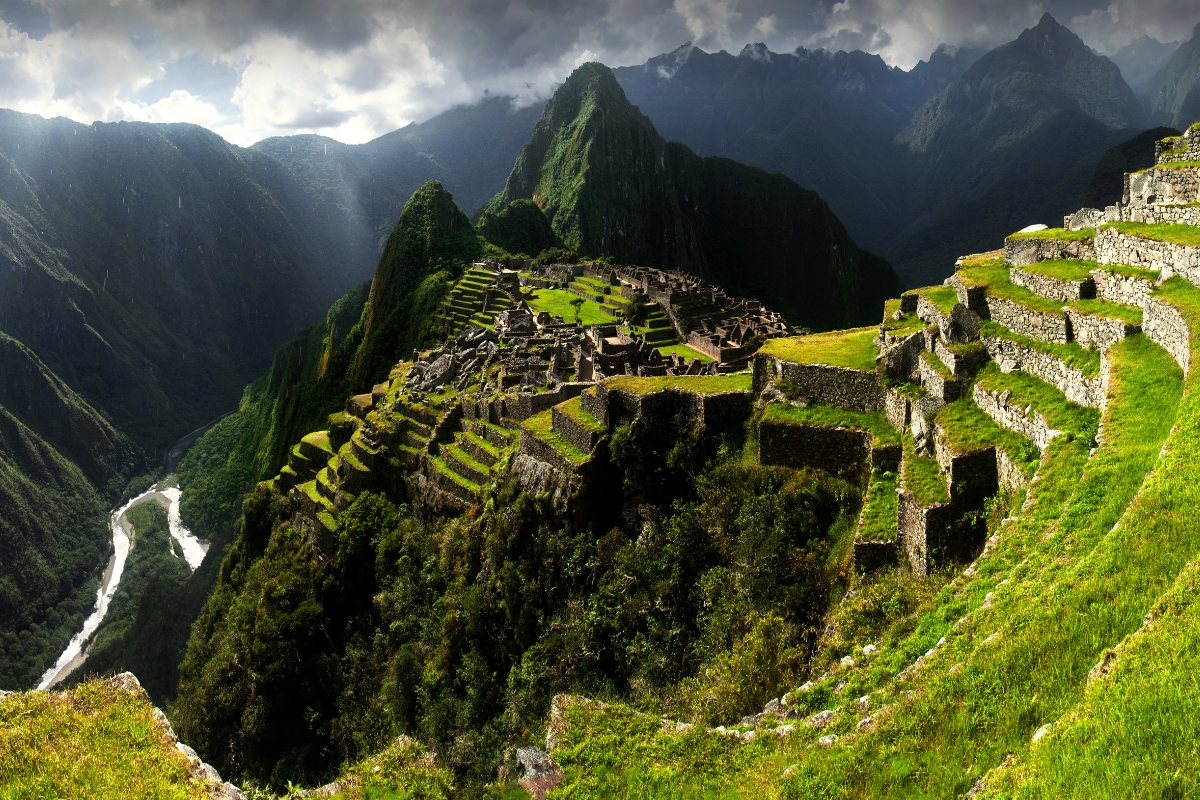
Machu Picchu means ‘old peak’ or ‘old mountain’ in the local Quechua tongue. Machu has one 'c' and Picchu has two. Get it right!
Almost all known Inca settlements, cities and sites were at least partially destroyed by the Spanish conquistadors: one need only visit Cusco to see what they were capable of. Machu Picchu’s location saved it: because it isn't visible from below, the Spanish never found it.
Although Hiram Bingham is credited as the first westerner to discover the ruins (in 1911), it’s highly likely that others had been before him – perhaps as many as 40 years earlier. Bingham was definitely the first academic to discover them, and his book Lost City of the Incas caused quite a storm in the US and Europe. Ironically, Machu Picchu probably isn’t the lost city Bingham was looking for: he was intent on finding Vilcabamba, which is believed to be about 50 miles west of Machu Picchu.
The Incas are probably the greatest stone-masons ever to have walked the earth. For all its magnificence, the construction of Machu Picchu did not require a single ounce of mortar: instead the Incas cut their stone blocks so precisely that they were able to wedge them together so tightly that the blade of a knife cannot fit between them. Not only is this an amazing feat of engineering but it’s also very useful in an area prone to earthquakes: during a quake or tremor the stones ‘dance’ but the walls do not crack or fall. Cusco’s quakes of 1650 and 1950 were clear proof of the superiority of Inca construction over Spanish – Spanish churches crumbled but their Inca foundations stood firm.
Not only was Inca stone-masonry exceptional, but their laborers are thought to have carried the 50 pound stones to the site by hand. Incas did not have wheeled vehicles, and they did not use animals to lug or carry heavy items. Throughout Machu Picchu there are more than 100 staircases. Almost all of which are carved from a single piece of stone – I wonder how they got there?
If you hike the Inca Trail you’ll probably notice that the porters sleep on top of a small piece of mirror or reflective metal, face down on the earth. They do this to protect themselves from being whisked away by evil spirits which live within the earth
Although the Inca trail is a challenge for most people when completed gradually over 4-5 days, there is now an annual Inca trail marathon where runners compete the course in under 12 hours. The record stands at just under four hours.
Like all tourist attractions, Machu Picchu has rules of entry. Most of them are pretty standard, but one is very quirky indeed as it forbids you to enter the ruins in the traditional dress of another country. Best you leave the kilt at home then …
One of the peculiarities of Machu Picchu is that there is hardly any information about the ruins on site. There is, however, a very good ‘museo del sitio’ between Aguas Calientes and the citadel.
Whew! We’ve covered a ton of details to help you prepare for your adventure to Machu Picchu. It’s time to have a look at what your Machu Picchu journey can look like. When you’re ready, talk to a Destination Expert and we’ll have your trip in action in no time!
Sign up for our Newsletter!
- Our Purpose
- Travel Agents
- Terms & Conditions
- Privacy Statement
Copyright © 2024 SA Luxury Expeditions LLC, All rights reserved | 95 Third Street, 2nd floor, San Francisco, CA, 94103 | 415-549-8049 California Registered Seller of Travel - CST 2115890-50. Registration as a seller of travel does not constitute approval by the state of California.

©Bérenger Zyla/500px
Machu Picchu
Shrouded by mist and surrounded by lush vegetation and steep escarpments, the sprawling Inca citadel of Machu Picchu lives up to every expectation. In a spectacular location, it’s the most famous archaeological site on the continent, a must for all visitors to Peru. Like the Mona Lisa or the pyramids, it has been seared into our collective consciousness, though nothing can diminish the thrill of being here. This awe-inspiring ancient city was never revealed to the Spanish colonizers and was virtually forgotten until the early part of the 20th century.
Attractions
Must-see attractions.

The Inca Trail ends after its final descent from the notch in the horizon called Intipunku (Sun Gate). Looking at the hill behind you as you enter the…

Intihuatana
This Quechua word loosely translates as the ‘Hitching Post of the Sun’ and refers to the carved rock pillar, often mistakenly called a sundial, at the top…

Behind and connected to the Principal Temple lies this famous small building. It has many well-carved niches, perhaps used for the storage of ceremonial…

Hut of the Caretaker of the Funerary Rock
An excellent viewpoint to take in the whole site. It’s one of a few buildings that has been restored with a thatched roof, making it a good shelter in the…

Principal Temple
The ‘temple’ derives its name from the massive solidity and perfection of its construction. The damage to the rear right corner is the result of the…

Temple of the Sun
Just above and to the left of the ceremonial baths is Machu Picchu’s only round building, a curved and tapering tower of exceptional stonework. This…

Temple of the Three Windows
Important buildings flank the remaining three sides of the Sacred Plaza. The Temple of the Three Windows features huge trapezoidal windows that give the…

Inca Drawbridge
A scenic but level walk from the Hut of the Caretaker takes you right past the top of the terraces and out along a narrow, cliff-clinging trail to the…
Plan with a local
Experience the real Peru
Let a local expert craft your dream trip.
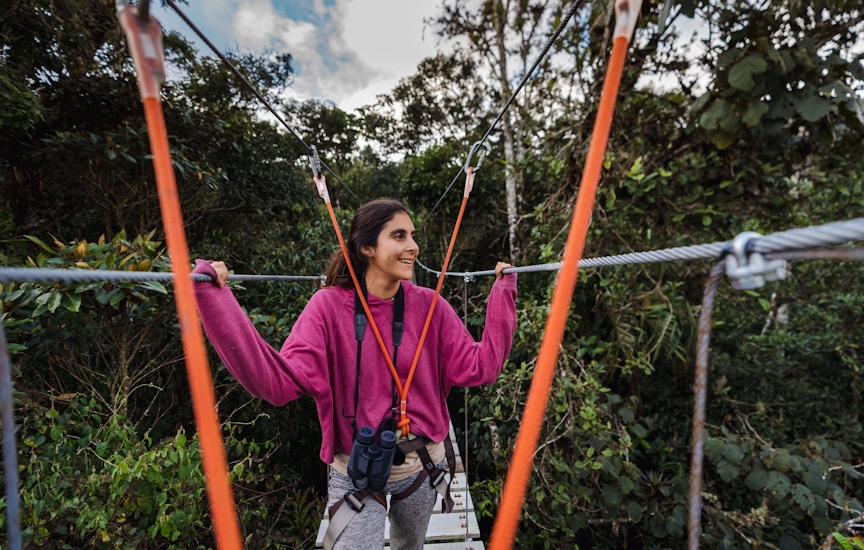
Latest stories from Machu Picchu
Filter by interest:
- All Interests
- Adventure Travel
- Art & Culture
- Beaches, Coasts & Islands
- Food & Drink

Jun 11, 2024 • 5 min read
Starting this month, Machu Picchu has introduced new circuits to preserve the archeological site. Here's how to find the right route for you.
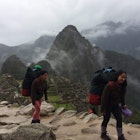
Mar 23, 2021 • 3 min read

Oct 15, 2020 • 2 min read

Sep 16, 2020 • 6 min read
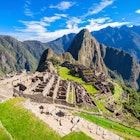
Feb 10, 2020 • 1 min read

Feb 6, 2020 • 3 min read

Jan 29, 2020 • 7 min read
Jan 22, 2020 • 1 min read

Oct 4, 2019 • 6 min read

Jun 28, 2019 • 5 min read
in partnership with getyourguide
Book popular activities in Machu Picchu

- Meet the Team
- Work With Us
- Itineraries
- Italy Travel Guide
- Hawaii Travel Guide
- Travel Tips
Attractions
How to plan a trip to machu picchu for first timers.
Visiting Machu Picchu, the ancient Inca city, high up in the Andes of Peru , has always been at the very top of my travel list. Who wouldn’t want to experience the almost mystical “Lost City of the Incas”, situated so high up in the jagged Andes Mountains that it’s unimaginable how it was even built, much less how they survived, and thrived, in such an isolated environment.
It holds the same mysterious appeal as far off ancient civilizations like Egypt and Jerusalem. Machu Picchu is, of course, a UNESCO World Heritage site . A trip to Machu Picchu is much more than just a vacation. It’s a journey. There are many ways that this will be one of the most exciting and fulfilling journeys you’ll ever embark upon.

That’s why we’ve put together these tips for visiting Machu Picchu. You’ll likely fly into Lima from the U.S. and have an overnight stay in the capital city of Lima before going onward to Cuzcu. The stopover is a blessing, because once you reach Cuzco, you’ll need time to acclimate to the altitude, and this task is harder while also dealing with jetlag.
Don’t go in thinking that the journey to Machu Picchu will be an easy one. It can be a very tiring and long journey, all told, with flights, train, bus and walking distance. But don’t be discouraged, because the end goal is well worth it.
Also be aware that the Machu Picchu park administration has made significant changes to the way they deal with tickets and visitors in 2023 moving forward for the preservation and conservation of this UNESCO World Heritage Site. If you’ve been before, things are different now. We’ll explain the changes below.
Machu Picchu is one of the new 7 wonders of the world . These are meant to be some of the most remarkable man-made structures that are still standing around the world, each with a fascinating history and unique design.
» Start planning a trip today with this Perfect 10-Day Peru Itinerary: What to See & Do.
Planning your trip to Machu Picchu?
- Rent a car from Cuzco through Discover Cars .
Where to Stay in Machu Picchu:
- Belmond Sanctuary Lodge – The only hotel located right next to Machu Picchu. A great experience! Read more about it in this review .
- Sumaq Machu Picchu – Located on the river at the base of Machu Picchu. Great location, great experience.
Best Tours and Experiences in Machu Picchu
- Machu Picchu All-Inclusive Day Trip – Includes train, entrance tickets, guide, shuttle bus & private transport.
- Visit Machu Picchu and Machu Picchu Mountain in 2 Days – Discover the history, culture, and energy of the area with roundtrip transfers.
» If you’re planning to see other parts of the country, be sure to check out this backpacking travel guide to Peru for tips and inspiration.
Table of Contents
Changes to Tourist Policy
Machu Picchu has new visiting rules starting in 2023 , including the following:
- The introduction of 5 different circuits to visit the Inca site.
- There are only 4,500 tickets available per day for Machu Picchu.
- All tourists must be led by a tour guide in order to preserve the site.
- Tourist groups can have a maximum of 10 people per guide.
- Reentry to the site is prohibited.
- The guided tour duration is 2 hours in order to free up room for more groups.

Getting Tickets to Machu Picchu
Pro Tip: No tickets are sold at the entrance, so you must secure them in advance. If you’re traveling during high season, I would purchase tickets a month or more in advance, to avoid disappointment.
The easiest possible way to see Machu Picchu is to book a tour from Cuzco. I recommend this tour by ExploorPeru that includes train, entrance tickets, guide, shuttle bus & private transport. You can go from Cuzco all in one day, or go to Agua Calientes to stay the night before, so it’s very flexible.
If you’d rather plan it all yourself, you can buy tickets online through the official government website or authorized agencies. As of 2023, tickets cost 152 soles ($40USD) for adults and 70 soles ($19USD) for children under 18. You’ll be charged a %5 fee to book online.
If you’re looking to hike up Huayna Picchu or Machu Picchu Mountain (Montana), you’ll need a special combination ticket that’s 200 soles for adults (includes Machu Picchu ticket). The Montana ticket allows re-entry to the main citadel, while the Huayna Picchu one doesn’t. If you want tickets for the Huayna Picchu mountain climb, try to buy them at least 3 months in advance because tickets are limited to 200 per day.
Machu Picchu Circuits
The Machu Picchu authorities have implemented specific circuits (or routes) for visitors to follow, aimed at safeguarding the archaeological site for years to come. The path you’ll take depends on the type of ticket you purchase.
Options include a standard Machu Picchu ticket, as well as combo tickets that add on attractions like Huchuy Picchu or the Inca Bridge (same cost), Huayna Picchu Machu or Picchu Mountain (for an extra cost) .
Which Circuit is Best for First-Time Visitors?
We recommendation getting a ‘Machu Picchu only’ ticket and following Circuit 2. This route allows you to tour the upper and lower parts of the archaeological site and includes the main parts of the Inca citadel. It takes about 2 hours and 30 minutes. If this is a return trip, consider doing the ‘Machupicchu with Huayna Picchu’ ticket and taking Circuit 4. If you choose the Huayna Picchu tickets, you can only do Circuit 4.
Here is a really extensive guide on all the circuits if you’re not sure which one to choose.
The Machu Picchu Experience – Start to Finish
Starting out in cuzco.

Cuzco, a UNESCO World Heritage site, is a city located at just over 11,000 ft above sea level in the Peruvian Andes — once the capital of the Inca Empire. It is the main launching point for visits to Machu Picchu. And it’s an authentic and vibrant city.
There is plenty to do in Cuzco, including hiking and adventure tours to nearby archeological ruins, such as the Sacred Valley of the Incas , and the Ollantaytambo ruins you’ll find in the valley, learning about the culture and customs of the Incas, shopping and exploring the ancient city, and dining on new and exciting local cuisine.
» Try this tour: If you’re interested in spending more time in Cuzco and the surrounding area, book one of these tours with ExploorPeru.
- The Best of Cusco in 3 Days : Sacred Valley, Machu Picchu, and Rainbow Valley (from $459/pp)
- The Best of Cusco in 4 Days : Adds on Humantay Lake (from $839/pp)
- The Best of Cusco in 5 Days : Adds on Cusco City (from $879/pp)
» Read more about Cuzco .

Once you land in Cuzco, catch a bus or taxi to the town center and find your accommodations, you’ll want to settle into a routine and get as much rest as possible in order to acclimate to the elevation.
If you’re planning to hike the Inca trail to Machu Picchu, you’ll need to arrive a few days in advance to prepare yourself. The elevation is no joke and symptoms can sneak up on you, so get plenty of rest and drink lots of water and the local remedy, Coca tea.
You can also get altitude sickness pills from your doctor before leaving home or from a local pharmacy, which will help. Really, the best way to acclimate is to slow down. Take it easy and build in time to relax.
» Read about what to eat while you’re in Peru, land of delicious food!
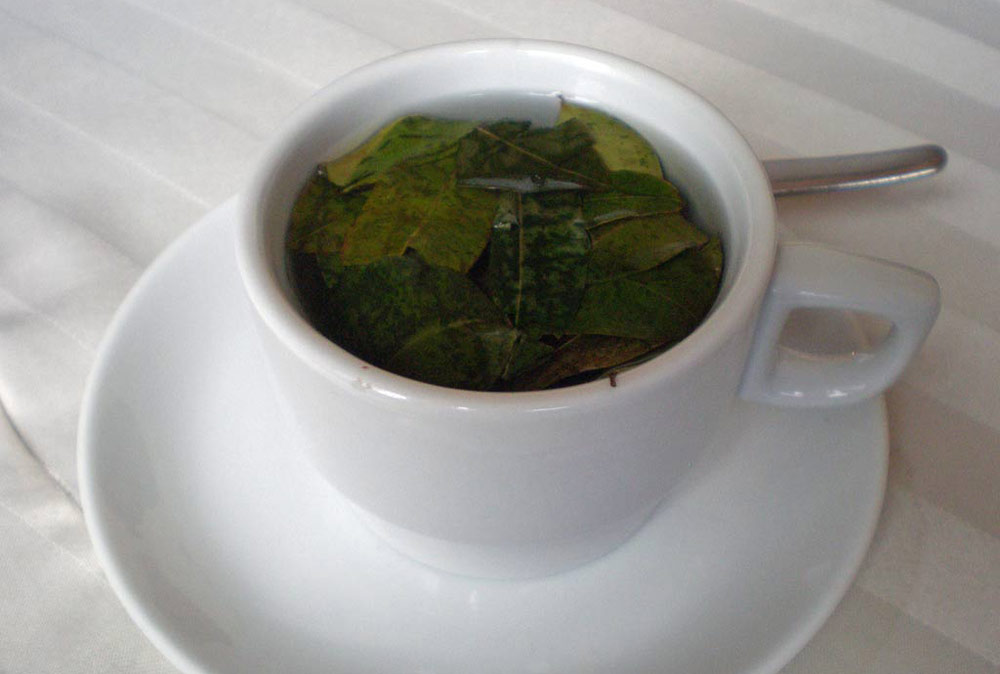
Getting to Machu Picchu from Cuzco
There are several ways to get to Machu Picchu from Cuzco.
- You can book this tour that arranges all the transportation for you (easiest possible way!).
- You can hike the Inca trail, following the route the Incas themselves took to reach the capital city. If you choose to hike, the trail is 26 miles long and trips range in length from one to four days, depending on what side trips are included. Only 200 visitors are allowed passes each day, so plan ahead, and be aware that this is a strenuous hike through a very mountainous region.
- You can buy your own tickets and take the train.

The train is perhaps the easiest way of getting there. When I went, knowing that I didn’t need to spend an enormous amount of time exploring, I chose the day trip option. The train leaves San Pedro station at 6:40am and takes about 4 hours to lumber up the mountain arriving at 10:52am in Aguas Calientes, the town at the base of Machu Picchu, where you’ll catch the bus.
You’ll arrive around 11am at Machu Picchu and have the entire day to explore before returning on the train to Cuzco in the late afternoon. If you’re the type who likes to explore every nook and cranny, you may want to arrive in Aguas Calientes the night before and stay the night to get an early start up to the ruins, which open at 6am.
Another option is from Poroy station, which is a bit further north, which leaves at 6:40am and arrives at 9:54am. The ExploorPeru tour we recommend leaves from this station (saving you an hour on the train!)
Just be sure to plan ahead if you’re visiting in high season, as tickets are limited and you wouldn’t want to be disappointed after having traveled so far. Here’s where to book the train tickets.

Arriving in Aguas Calientes
Once you’ve arrived in Aguas Calientes, the journey up to Machu Picchu begins. You’ll need to catch a bus up to the top, which involves a whole lot of switchbacks and may not be pleasant for anyone who gets car sick. Another option is to walk up, but that is reserved for only the most fit, and it will take about an hour, while the bus takes only 20 minutes.
In high season (July & August), pre-book your bus trip , or risk waiting in an atrocious line (like 2-3 hours long) or being turned away altogether. Once you’ve reached the top, you can embark on a tour of the ancient city.

» Read more: “ That Time We Had Machu Picchu (Almost) To Ourselves ” by Television of Nomads
Book a Tour
What to see in machu picchu.
NOTE: Be aware that there are no toilets in the historic area, so you should go before you enter (there’s one at the gate). If you have to leave to use the bathroom, you will not be able to get back in!
Machu Picchu Sanctuary is the designated area surrounding the famous Inca citadel of Machu Picchu in Peru. Nestled among the peaks of the Andes, this sanctuary serves as both a historical and a natural reserve, covering approximately 32,592 hectares.
It’s not just the stone structures that captivate visitors; the surrounding cloud forest is a biological paradise, hosting a variety of flora and fauna that contribute to the area’s unique biodiversity.

Though the main attraction is, of course, the ancient citadel itself, the surrounding area has a ton to explore. With the new circuits, you will be limited in what you can see based on which circuit you’ve chosen.
- Circuit 1 allows you to visit the upper and lower parts of the archaeological site. This tour goes through the main buildings as well as the area of the terraces, plus the higher up terraces where you can get an iconic photo.
- Circuit 2 includes the main buildings on the citadel, plus the upper and lower parts of the archaeological site.
- Circuit 3 allows you to visit the lower main plaza of Machu Picchu, plus a visit to the Inka House, the Temple of the Sun, the Water Mirrors and the agricultural area.
- Circuit 4 includes the lower main plaza of Machu Picchu, plus a visit to the Inka House, the Temple of the Sun, the Water Mirrors, the agricultural area, and the Sacred Rock.
Main Attractions
- The Temple of the Sun : One of the most important structures, this rounded building served astronomical and religious purposes. You’ll notice its intricate stonework, as well as windows perfectly aligned with the solstices.
- Intihuatana Stone : Also known as the “Hitching Post of the Sun,” this carved rock was used for astronomical observations. It’s situated on a small hill and offers a panoramic view of the entire complex.
- Room of the Three Windows : This structure, part of the Sacred Plaza, showcases the Inca’s mastery of masonry with its trapezoidal windows and massive stones.
- The Main Plaza : This central courtyard is surrounded by temples, residences, and storehouses. It was likely a social or ceremonial gathering place and offers some of the best photo ops.
- Temple of the Condor : This fascinating temple is designed to represent a condor, a sacred bird in Inca culture. The stone “wings” and “head” are immediately recognizable, making it a must-see.
- Agricultural Terraces : These are not just for show. The terraces were a functional part of Inca agriculture but now add to the breathtaking visual geometry of the site.
- The Watchman’s Hut : Right after you enter, you’ll find this small structure offering a classic, postcard-worthy view of the whole Machu Picchu complex. Most people stop here first for that iconic photo.
- Royal Tomb : Located near the Temple of the Sun, this area features a series of caves that were likely used for mummification or other ceremonial practices.
- House of the High Priest : This is a two-story building that might have been the residence for the spiritual leader or high priest of Machu Picchu.
- Temple of the Three Doors : Another part of the Sacred Plaza, this temple features a three-door entrance and showcases fine Inca craftsmanship.
Just remember, Machu Picchu isn’t just about ticking off the major sights; it’s about taking in the atmosphere and pondering the mysteries.
Where to Stay in Cusco
Cuzco welcomes many visitors every year, so they know how to do it right. You have a tremendous amount of choices for where to stay in this lovely city, including some pretty nice hostels. However, our days of hosteling are over, so we’re looking for an affordable luxury stay in Cuzco.
Here are our top choices, all right in the center of town for easy walking to the square, the market, and the bus/train station. You can check out prices, read reviews, or book directly through the links below.
- JW Marriott El Convento – this is a beautiful property really close to the main square and cathedral – Check prices on Expedia | Read reviews on TripAdvisor .
- Palacio del Inka – This is a Luxury Collection Hotel. It’s in the perfect location, and it’s very beautiful inside, with incredibly comfortable beds – Check prices on Expedia | Read reviews on TripAdvisor .
Where to Stay Near Machu Picchu
There are quite a few advantages to staying near Machu Picchu. You’ll have more time to explore and look around, and you’ll beat the crowds who are coming from Cuzco. Take advantage of this by booking a room for a night or two.
We recommend the following nearby hotels. If you’re adopting a “once-in-a-lifetime-experience” attitude about your trip to Machu Picchu, then you should stay at one of these two hotels:
- Belmond Sanctuary Lodge – The only hotel located right next to Machu Picchu. A great experience! Book on Expedia. Read more about it in this review .
- Sumaq Machu Picchu – Located on the river at the base of Machu Picchu. Great location, great experience. Book on Expedia
These are equally great hotels, but you won’t have to spend quite as much:
- Casa del Sol Machu Picchu – Beautiful property, very close to the train station Book on Expedia
- Inkaterra – Hotel offers eco tours. Breakfast and dinner are included in the price Book on Expedia
Pro Tip: If you choose a hotel near the train tracks (which is most of them) be sure to ask for a room on the opposite side of the hotel from the train, or you’ll hear and feel the trains lumbering by until the early morning.
Useful Tips for Visiting Machu Picchu
Here are some useful tips and things to expect once you arrive at Machu Picchu:
- Pack a sweater and/or rain jacket. The weather can change quickly from sunshine to fog, wind and rain. Choosing the best time to go to Machu Picchu can be a challenge, as you need to consider factors such as weather, crowds, and overall travel experience.
- You technically can’t take drinks or food into the site, but do take water and a snack in your bag anyway. They often don’t check your pack.
- Plan to skip lunch. Eat a big breakfast so you can avoid eating an expensive lunch on site or wasting time going back to Aguas Calientes in the middle of your day.
- Buy your train tickets and Machu Picchu tickets in advance online to avoid disappointment, especially during high season (April – August).
- You can get your passport stamped at the tourist office once you arrive at Machu Picchu, not far from where the bus drops off.
- Don’t underestimate altitude sickness. Take it easy, don’t overexert yourself.
Frequently Asked Questions
Can you visit machu picchu on your own.
Yes, it is possible to visit Machu Picchu on your own. While having a guided tour to enter Machu Picchu is not mandatory, it’s highly recommended. Guides provide valuable insights into the history and significance of the site. Guided tours can be arranged in advance or hired on the spot at the entrance. Remember to purchase your tickets in advance and check current rules and regulations, as respect for the environment and historical site is essential.
How many days do you need to visit Machu Picchu?
Ultimately, the duration of your visit to Machu Picchu depends on your interests, the type of experience you want, and how much time you have available. Remember that it’s a UNESCO World Heritage site, and many visitors find that spending more time in the area allows for a richer and more enjoyable experience. That being said, most visitors go for just one day.
How difficult is it to visit Machu Picchu?
Visiting Machu Picchu can be as easy or as challenging as you choose to make it. You can choose train and bus transportation if you prefer a more comfortable and straightforward experience. However, if you enjoy trekking and are physically prepared, you can choose one of the trekking routes. Regardless of your choice, it’s essential to plan ahead, be aware of the altitude.
What is the best month to go to Machu Picchu?
If you prioritize good weather and are okay with crowds, the dry season from May to September is the best bet for your trip. However, if you prefer quieter visits, you might consider the shoulder or rainy seasons if you’re prepared for wetter conditions. Keep in mind that weather patterns can vary from year to year, so it’s a good idea to check the latest weather forecasts and travel advisories before planning your trip.
Visiting Sacred Valley, Peru
Most visitors to Cusco and Machu Picchu like to also visit the Sacred Valley on their trip. It’s an essential experience if you’re intrigued by Inca history or just looking to witness some of the most stunning landscapes in Peru.
The Sacred Valley of the Incas is located in the Andean Highlands of Peru, not far from the ancient city of Cusco. This valley stretches approximately 60 kilometers and is framed by steep, terraced mountains.
It’s a region rich in history and culture, dotted with archaeological sites like Ollantaytambo, a well-preserved Inca urban center with a massive fortress with huge stone terraces, and Pisac, known for its impressive Inca ruins and vibrant market..
Getting to the Sacred Valley from Cusco is fairly straightforward. You’ve got several options: you could go by taxi, take a colectivo (shared van), or opt for a guided tour. Taxis offer the most flexibility, but colectivos are more budget-friendly. Guided tours usually provide comprehensive packages including transportation, guides, and sometimes meals.
Traveling in Peru is a very rewarding experience, and getting the opportunity to see Machu Picchu is one of the highlights. Take your time, look around, discover something new. Most of all, have fun!
Be Prepared For Travel Planning is the most important part of any successful trip. Do it the easy way:
🧳 Travel Packing List | ✔️ Why You Need Travel Insurance | ✈️ What to Do Before You Leave Home
- Find and book the best hotel (our favorite booking site is Expedia)
- Research flight options (our favorite tool is Skyscanner )
- Book a tour (we always use Viator to find the best tours)
- Rent a car through Discover Cars (they search the best deals for you!)
YOU MIGHT ALSO LIKE

13 Essential Foods to Try in Peru

Americans Traveling to Cuba – Your One-Stop Travel Guide

9 Food and Drinks You Must Try in Brazil

3-Day Mexico City Itinerary for Food Lovers
Like this post? Why not save it on your Pinterest board?
Quick. Check these necessities off your prep list!
- There’s no one-size-fits-all travel insurance . Get a personalized quote from Yonder .
- The right luggage can make or break your trip. These luggage sets make traveling a breeze.
- Find your rental car on DiscoverCars.com . They search all major rental companies to find the best deal.

Laura Lynch, creator and writer of Savored Journeys, is an avid world traveler, certified wine expert, and international food specialist. She has written about travel and food for over 20 years and has visited over 75 countries. Her work has been published in numerous guidebooks, websites, and magazines.
5 thoughts on “ How to Plan a Trip to Machu Picchu For First Timers ”
Great tips and awesome pictures! Thanks for sharing!
Great post and photos. My husband and I were also at Machu Picchu earlier this year. Good tips about the altitude sickness, glad we read about that before hand, we got some meds that worked like a charm. I was, just looking around to find some other opinions, glad I found your blog. Check me out too: http://www.cameraandcarryon.com
It’s a great idea to go with some meds that will help with the altitude sickness, especially if you know you don’t adapt well. We were able to pick up some from a pharmacy in Cuzco.
Great article! In my opinion the best way into Machu Picchu is via Ollantaytambo. Skipping the ruins there is a big mistake in my opinion. Train tickets from Ollantaytambo are cheaper as well! 😀 As far as I am concerned, altitude sickness should be no problem in Machu Picchu itself (tho Cusco is 1,000 meters higher and there u will need it).
I never considered the altitude sickness, and I think that not overexerting myself is a good tip. My sister and I are planning to visit Machu Picchu for the first time, and we want a unique experience. I suffer from asthma so we will need to contact a travel guide to help us customize our experience.
Leave a Reply Cancel reply
Your email address will not be published. Required fields are marked *
Save my name, email, and website in this browser for the next time I comment.
- Travel Resources

- Peru Tour Packages
- Customized Tours
- Destinations
- EN EN ES DE
- Peru: +51 932 671 370; USA: +1 (786) 329-5624
Machu Picchu Tours
- Inca Trail Tours
Salkantay Trek
- Amazon Jungle Tours
- Machu Picchu
- Sacred Valley
- Rainbow Mountain
- Humantay Lake
- Huacachina Oasis
- Huacachina & Paracas
- Lake Titicaca
- Amazon Jungle
- Machu Picchu Guide
- Peru Travel Tips
- Things to do in Cusco
- Things to do in Lima
- Peru Amazon Guide
Home » The Ultimate Machu Picchu Travel Guide
The Ultimate Machu Picchu Travel Guide
- 23 January, 2022
- by Konsti Sobon
- Reading time: 9 minutes

The Lost City of Machu Picchu is one of the most iconic archeological treasures in all of South America. Tucked away in the cloud forests of the Andes, Machu Picchu is believed to have been a royal estate or sacred religious site for Inca leaders.
Today, its mountain top location, finely crafted stonework, and ancient history make Machu Picchu Peru’s most sought-after destination.
Ready for an adventure? Here’s a rundown of everything you need to know before you head off to one of the world’s most famous man-made wonders.
Plan Your Visit
Machu Picchu is the most popular Inca site in Peru, which means that you need to plan your visit well in advance.
When planning for Machu Picchu, there are some key milestones to hit before you start packing. For an enjoyable adventure, your first steps should be focused on deciding on the best time to go and how to best adjust to the altitude difference.
Here are some pointers to help you kick-start your planning.
The ancient citadel of Machu Picchu is open all year round. Before booking, though, it’s sensible to note how much rain (and slippery paths) you are willing to handle.
Peru has two main seasons: dry and wet. The peak travel season coincides with the region’s dry season – from April to September. During this time, the Machu Picchu weather is usually milder, making it easier and more comfortable to walk the ancient paths of the Incas.

Omar Asif 5 May, 2022 at 10:22 am
This is very compact and useful! Thanks for the interesting insights and that will help us to plan our Peru trip.
Oliver from Exploor 5 May, 2022 at 1:30 pm
Thank you Omar, we’re happy to hear that the content helps! If there’s anything else you need, feel free to shoot us a message! 🙂
Jennifer Morley 13 March, 2022 at 5:26 pm
Which train company do you guys recommend, Peru Rail or Inka Rail?
Oliver from Exploor 14 March, 2022 at 9:35 pm
Hey Jennifer! We’d recommend and mainly work with Peru Rail! Feel free to check our post about the different train options . Hope this helps 🙂
Carol 28 February, 2022 at 12:33 pm
We are short on time and have around 4-6 days to visit Lima&Cusco.
Any tour recommendations or what would be the best tour itinerary for us?
Konsti from Exploor Peru 1 March, 2022 at 6:45 am
Hello Carol, thanks for reaching out to exploor! In case you are staying for only 4-6 days in Peru I would highly recommend you the following itinerary: 1. Arrival in Lima (probably afternoon) 2. Flight to Cusco (get used to the altitude) and discovering during our Cusco City tour the best sites such as San Pedro Market, San Blas neighborhood, Sacsayhuaman etc. 3. Sacred Valley 4. Machu Picchu 5. Rainbow Mountain Palccoyo or Vinicunca 6. Flight back In case you are interested to learn more about this adventure feel free to visit the tour page in addition to that you can request our guided Cusco City tour.
Let me know if you have any further questions. Best, team exploor
Josh 27 January, 2022 at 10:18 am
Veryyy interesting! This complete guide is really helpful for our trip to Peru in May. Is it possible to get assistance with finding the right hotels for Cusco and Lima?
Oliver from Exploor 28 January, 2022 at 5:52 pm
Hey Josh, glad the content is useful for you guys! Yes of course, feel free to send us an e-mail to [email protected] and we’d be happy to help you out. 🙂
Leave a comment
Related posts, the 3 best multi-day trips from cusco.
- 20 December, 2021
- by Oliver Eberlein
Machu Picchu Weather – All You Need to Know
- 10 April, 2019
- by Erik Krause
10 Things Not To Miss In the Sacred Valley of the Incas
- 28 September, 2021

Let’s plan your dream trip to Peru
All of our tour itineraries are 100% customizable . Just let us know your preferences below and we’ll get back to you within 24-48 hours.
- First name* Last name*
- Starting Date* Number of travelers* 1 2 3 4 5 6 7 8 9 10
- Hotels (Optional, multiple choices possible) Luxury Superior Best Value
- Trip Length 3-5 Days 6-8 Days 9-11 Days 12-15 Days 16+ Days Not sure yet
- Comments* 2500 characters remaining

- Posts by Date
- Posts by Location
- Wine Travel Posts
- USA Travel Posts
- Upcoming Posts & Trips
- Sign-up for our Newsletter
- Meet Stephanie & Adam
- Our Mission
- Our Travel Bucket List
- Travel Gear for Your Trip
- Travel Insurance Guide
- Media & Site Activity
- Interactive Workshops
Machu Picchu: Your Ultimate Day Trip Guide

When you think bucket lists, chances are you’re going to think about Machu Picchu. Over the last decade or so, travellers from all walks of life—from budget backpackers in their 20s to retired visitors in their 70s and 80s—have made the trip to see one of the most photographed, documented, and well-loved UNESCO World Heritage sites on the planet.
We traveled all the way to Peru to see Machu Picchu in person. Believe it or not, we briefly considered skipping it.

We had a schedule to keep; we needed to get to the train station by 6:00 AM, which meant we needed to be in a taxi by 5:30 AM. At 5:15, as I struggled to tie my shoes without laying down to take a break, I told Adam I wasn’t sure if I had the strength to face this particular day. Adam didn’t look much better than I did; his head ached, too, but he was doing a better job of staying upright. Together, we motivated each other to keep moving forward, to keep making enough progress that we might make our way to the hotel lobby to order a taxi to the train station. We had one chance to get to Machu Picchu. We had to make it.
17 hours later, back in our hotel room and scrolling through dozens of pictures as we relived our day, we both rolled our eyes at how we even entertained the idea of skipping out on the Inca’s most famous structure. It wasn’t the easiest day trip we had ever taken, but it was easily one of the best.
So how did we spend one day at Machu Picchu? Here’s what we want you to know about getting to and making the most of one of the New Seven Wonders of the World.
Know Before You Go: Machu Picchu
If you’re planning a visit to Machu Picchu, you’ll undoubtedly do some homework on the Incan citadel before you arrive.
In short, Machu Picchu was built around 1450, and it was abandoned just about a century later around the time the Spanish arrived in the area. Interestingly, the Spanish didn’t find the settlement, which means it is one of the few Incan constructions that was not plundered during conquests. In fact, Machu Picchu all but disappeared as the jungle grew around it, and while it appeared on some maps in the 1800s it wasn’t until American explorer Hiram Bingham arrived in 1911 that locals pointed the way toward the missing settlement. Restoration efforts continue to this day.
Some Notes About Our Trip
There are lots of ways to plan a trip to Machu Picchu. For us, we wanted to start and end our day in Cusco , which added hours on the train and limited our time at the site. Our reasoning was that we didn’t want to deal with transferring hotels during an otherwise short stay in Peru, but there are a few options to consider:
- Staying in Aguas Calientes . This is the largest town just outside of Machu Picchu, it’s popular and affords you more time at the ruins. Hotels are plentiful (though many get poor reviews), but the town is more or less completely devoted to tourists—don’t expect a local experience here.
- Staying in Ollantaytambo . This is also a popular option; you can take trains from there to Aguas Calientes, and because it’s closer to Machu Picchu than Cusco it can save you some time during the day.
All-Inclusive Machu Picchu Tours: Worth the Price?

Tours of Machu Picchu are easy to come by, and dozens of tour operators providing virtually the same service will be happy to make your trip easy and worry-free. If you’re thinking of taking a tour, here are a few things to keep in mind as you evaluate your options:
- What is included in the tour? Be sure tours include, at a minimum, train tickets from Cusco’s Poroy Station, bus tickets from Aguas Calientes to Machu Picchu, Machu Picchu entrance tickets, and a guided tour. Bonus points go to tours that include lunch and/or hotel pickup and drop off after your train arrives that night.
- Do some homework to understand how much each piece of your trip will cost. Even if you ended up selecting a guided tour, knowing how much you would spend on each individual ticket can help you to evaluate the value of the tour you are considering.
- Check travel review sites like TripAdvisor to learn about how reputable the tour company is. Day trips to Machu Picchu will cost hundreds of dollars per person, and you don’t want any nasty surprises should you find your tour guide doesn’t show up or your Machu Picchu ticket isn’t waiting for you on the day of your visit.
Ultimately, we compared the cost of a day tour to Machu Picchu to the amount it would cost us to book each individual piece on our own, and we decided it was best for us to build our own trip and forego a bigger, more organized tour (we saved about $250 USD per person by doing it this way!). This was perfect for our travel style, but let your preferences and comfort guide your decision!
Buy Your Tickets

Because we put together our own trip without a travel agency or tour group, we were on our own for tickets. We reserved and purchased our tickets through the official website, which is the only reputable place to get them. The website is not particularly easy to use—the Spanish version works far better than the English version, and tickets can only be purchased with a Visa card—but ultimately it didn’t take a lot of time or effort before we had our entrance tickets reserved and purchased. My minimal knowledge of Spanish was very useful in translating the instructions as I bought the tickets. Don’t forget to print the confirmation and the tickets when the purchase is confirmed! The tickets do not get emailed to you.
If you get stuck, there are several great blogs and resource guides that provide some step-by-step instructions on how to navigate the website.
More Information: MachuPicchu.gob.pe
The Scenic Route: Taking the Train
A huge part of arriving at the destination is the journey—and in this case, the journey to Machu Picchu involves three and a half hours on a train and thirty minutes on a bus.

Peru Rail is an experience in itself. The scenery as we descended from 11,500 feet above sea level in Cusco into the Sacred Valley was unbeatable; we enjoyed blue skies and lush green hills as the train navigated its way toward our destination. The food was pretty decent as well. Having felt as sick as I did the morning of our visit, I was grateful to enjoy fresh fruit, cake, and a cheese sandwich for breakfast. On the way back to Cusco we were served fruit, pizza, and a cookie. Beverages were complimentary, which for us meant coca tea was readily available to help us with our acclimation problems.
Last Leg: Taking the Bus
Our journey wasn’t over when the train came to a stop at Aguas Calientes. After we hopped off the train, we spent five minutes walking through an indoor market before we arrived at the main road, where we purchased bus tickets to Machu Picchu.
Taking the bus isn’t the only way to get to Machu Picchu, but if you opt out of the bus, be prepared for a lengthy walk from town to Machu Picchu. Much of the trek requires walking up some steep roads shared by the tourist buses, which isn’t a very attractive option, so most people quickly line up for tickets. Don’t let yourself get too delayed between departing from the train station and arriving at the ticket booth; the line can get very long very quickly, so if you’re at the end of the line you will lose valuable time that could be spent at Machu Picchu while waiting for your turn to make your purchase.
The bus isn’t cheap- about $25 USD for a round trip ticket- but you can pay for tickets with dollars, soles, or MasterCard (Visa is not accepted!). Buses depart when they are full, but we never waited more than five minutes for a bus. They seemed to leave at very regular intervals.
The ride from Aguas Calientes to Machu Picchu is slow and tedious; it took close to 30 minutes before we arrived. The roads don’t have guardrails, and when our bus passed hikers and other buses I was tempted to close my eyes so I wouldn’t bear witness to possible collisions. Even still, it was better (and quite possibly safer) than walking all the way from town!
Machu Picchu Guides: to Hire or Go It Alone
After you get off the bus, about 100 steps will separate you from the Machu Picchu entry gate—and every step is crowded with guides for hire.

If you’re planning to hire a guide, don’t be afraid to “interview” a couple before you commit to one to get a sense of their knowledge about the site and English proficiency. Some of the guides we encountered were clearly more qualified than others, and you owe it to yourself to find a guide who will meet your needs.
We opted out of an organized tour. Although one guide very persistently warned us that Machu Picchu is confusing and a waste of time without a guide, we didn’t find that to be our experience at all. Why did we skip the guide? We had a few reasons:
- We read up on Machu Picchu before we left, so we were prepared for what we were going to see. If you know the history and what landmarks to look for, a tour guide may not be able to add enough information to keep you interested.
- We wanted to move completely at our own pace. Adam especially wanted some uninterrupted time to take pictures, and walking with a guide wouldn’t have afforded us the opportunity to stop in spots for 20-30 minutes at a time to rest and photograph the site.
Would we have made the same choice in retrospect? Although we would have enjoyed some of the stories we heard guides sharing as we walked, we don’t regret having the chance to explore completely unaided. Machu Picchu is well-organized and easy to traverse without someone telling you where to go, and we didn’t have any issues getting around or understanding what we were seeing.
Guides are a personal choice; we would recommend them for most travellers, but if you decide not to hire one you’ll still have a great experience.
Things To Look For

► Machu Picchu Selfie Locations
If you’re looking for an iconic Machu Pichu selfie, you won’t have to go too far to get it. Once you enter the site and get your ticket checked and stamped, follow the signs to the Guardhouse and climb up the trail. Chances are you’ll be following the crowds (it seemed to be everyone’s first stop!), so keep an eye out for where most people seem to be headed. The first opening you come to will grant you your first view of Machu Picchu as well as a great selfie spot, but it will also be flooded with tourists. You can climb up the trail just a little further to get a similar (arguably better) panoramic view without as many people around to crowd your space.
If you’re not on a guided tour, consider staying in place while the crowds get their pictures and move along; we waited for a while and had the viewpoint all to ourselves for about ten minutes.
► Huayna Picchu
The mountain that soars above the landscape in all of those Machu Picchu photos you see online is called Huayna Picchu . You can actually hike up a trail to reach the summit (although it is heavily restricted- only 400 people may climb daily, and climbing occurs during two sessions in the morning).
► Incan Aqueduct
► the sacred rock.
Located in the lower part of Machu Picchu near the entrance to the Huayna Picchu trail, the Sacred Rock is a large, natural monolith that mirrors the shape of the Inca’s sacred mountain, Putucusi. Tourists flock to this spot for photos of themselves touching the stone. Line up the top of the rock with the outline of Putucusi in the distance for another great photo op.
► Inti Watana
The Inti Watana stone is a beautiful carved rock that was believed to have been used for astronomical and religious purposes. It was positioned to align directly with the winter solstice. This location also provides a great view of the valley for more of those epic Machu Picchu selfies.
Stay Hydrated- and Full
Machu Picchu is pretty far from Aguas Calientes—whether you have walked up or taken the bus—which means it’s not feasible to leave at lunchtime to return to the town for something to eat. One option is to schedule your visit to occur after lunch and eat before boarding the bus, but if you’re planning to maximize your time at Machu Picchu there are two options if you need to refuel after a morning of climbing, touring, and photographing: a snack bar and the restaurant.

The deciding factor for our sit-down lunch was that we received a voucher for the buffet when we purchased our Peru Rail tickets as part of a promotion. As it turned out, we were really glad to have the vouchers. The buffet had a great number of hot and cold dishes (including roast pork and roast beef), and we were able to refill our water bottles with clean, filtered water. The buffet was all-you-can-eat, and while we didn’t eat to the point of being stuffed it was nice to have the flexibility to try all of the dishes we wanted. Our vouchers also granted us access to clean bathrooms separate from those used by the general public. It was nice to spend an hour sitting in the air conditioning after a crazy morning of hiking and climbing to the point of exhaustion.
If you’re planning a day trip to Machu Picchu, consider a stop at Tinkuy for a respite from the sun; we enjoyed the chance to rest for a while. If spending close to $30 per person for lunch is more than you want to add to your budget, consider bringing your own food from Cusco or stopping for something in Aguas Calientes (you’re not supposed to bring outside food into Machu Picchu, so eat outside before you enter!).
A Few Final Tips
► take your passport with you.
Your passport will be checked before you get on the train (in Cusco and in Aguas Calientes), and it will be checked against the information on your ticket when arriving at Machu Picchu. Security is taken seriously at all turns, so your passport is among the most important items to keep with you during your visit.
► You can get a Machu Picchu stamp!
There is a self-service stamping area just outside of the entrance gate. Although it’s a little touristy to do it, we have come to love these special souvenir stamps; Machu Picchu is not the easiest destination to visit, so we feel like we have really earned those stamps! Also, it looks great next to our Easter Island passport stamp. One more reason to have your passport handy!
► Use your Machu Picchu entrance ticket wisely

► Arrive early for your train
Boarding begins 30 minutes before departure, but document checks start sooner, so we built in some extra time to be sure we wouldn’t get held up at any stage (getting stranded in Aguas Calientes was not part of our itinerary!). A bonus for us was that we had a chance to listen to a very talented local performer playing the Andean pan flute ( Video ), which added to the ambience and was pretty relaxing at the end of a very long day.
► Watch the weather and time your visit accordingly
We visited in late August, during Peru’s winter, because that is the dry season; there have been years when the Inca Trail has been washed out during the rainy summer and fall seasons, and while the weather might be warmer it’s not worth it to risk your trip by visiting during a volatile time of the year.
► Consider Travel Insurance
When planning an unguided trip to Machu Picchu, you will be managing quite a few details: train schedules and timed entrances are the obvious ones, and weather and altitude sickness might be factors to consider as they were for us. We purchased an insurance policy from World Nomads that provided coverage for the experience we planned and protected us from the unknown challenges we prepared for. It’s smart to research insurance plans and select the one that will provide the right coverage for your Machu Picchu adventure.
More Information: WorldNomads.com
Hotels Near Machu Picchu
Ready to book a room for your own Machu Picchu vacation? Cusco is a great starting point and they have plenty of options. Here are some deals to consider:
Visit Machu Picchu!
When we combined all of those pieces—our tickets, our transportation, dining options, and the visit itself—we had the makings of a truly perfect day trip to Machu Picchu. While the amount of planning might seem daunting, if you’re organized and follow through on details it’s a very straightforward adventure to plan.
If you need any more proof that Machu Picchu is worth the trip, these pictures from our visit should be enough to push this Incan treasure to the top of your bucket list!

Related Posts
Ready to visit Peru? Here are a few more posts to help you plan your trip!

Two Days in Cusco, Peru

A Day in Peru’s Sacred Valley of the Incas

8 Tips to Prevent Altitude Sickness

Share This!

The Best Time to Visit Machu Picchu, Peru
By Author Arakita Rimbayana
Posted on Last updated: 6th October 2023
The Lost City of the Incas, aka Machu Picchu, draws some 1.2 million visitors yearly to its incredible stone vestiges left behind on a remote mountain.
With visitor numbers still down on those registered pre-pandemic, now remains a brilliant time to head to the former Inca citadel located in the south of Peru.
However, weather concerns can affect your experience, which is why this article aims to help you identify the best time to visit Machu Picchu.
If I’m being honest, there’s a reason why the Peruvian Highlands are so lush and green – which is why there’s always a risk that it’s going to rain when you’re hiking to or just visiting this incredible archeological site.
But you shouldn’t let that put you! Not only does the city look much more atmospheric with a bit of cloud cover, but the weather can change quickly, meaning you’re still very likely to get a glimpse of it from the famed photography location (see the picture below).

Here are my general recommendations for the weather conditions you need to consider when planning a trip to Machu Picchu.
Click to navigate this article:
- January: This is the peak of the rainy season in Peru. Trails to Machu Picchu are wet, the air is humid and the chance of more rain is high, making it challenging to hike the Inca trail and the other routes to Machu Picchu. If you don’t mind hiking in the rain – and missing out on the views – then be our guest; alternatively, opt for the train from Ollantaytambo or Cusco to Aguas Calientes, instead.
- February: This is the wettest month of all and, as a result, the Inca trail is closed due to unsafe weather conditions and for maintenance along the path. This is definitely not the best time to visit Machu Picchu, but if you must, alternative treks, such as the Salkantay , are still open.
- March: As precipitation levels lower and the Inca trail is reopened after the maintenance break, March can be a great choice for visiting Machu Picchu – although you can still expect to get a little wet during hikes. Bring a waterproof outer shell and plenty of layers to respond to the unpredictable temperatures and weather conditions you’re likely to face.
- April: As the rainy season draws to a close, Machu Picchu remains quiet before the rush of tourists arrives later in the year. This makes April the best month to visit Machu Picchu, with the weather mostly dry but with the occasional light showers.
- May and June: As the dry season arrives, so do the visitors! Events such as Inti Raymi, the traditional ceremony of the Inca Empire, fall in June and add to the melee. Though it’s still not yet high season, if you visit Machu Picchu in May or June, you should expect large crowds at the archeological site, especially in the morning. That said, good weather makes these months a great time for hiking the Inca trail .
- July and August: The peak of the dry season is also the high season for visitors to Machu Picchu. Expect to queue to get on the bus from Aguas Calientes up to the site and through the main gate at Machu Picchu, as well as take turns at the best photo spots. If you have no other option than visiting Machu Picchu during the high season then we suggest either arriving at the site as early as possible or in the afternoon.
- September: The dry season is coming to an end, making this the tail end of the high season for visitors, although numbers are lower than in the preceding two months.
- October and November: Alongside April, October and November are the best months to visit Machu Picchu. Even though the wet season is near, you can expect more sunny days than rainy ones. October is usually busier than November due to the fact that there’s less rain and so you’ll have a better chance of avoiding downpours.
- December: As the average rainfall picks up, the number of visitors drops to almost half that of the previous few months. Expect dense fog in the early mornings and showers in the afternoon, making the weather conditions less than ideal. However, there is still the possibility of clear skies during breaks in the rain.
Planning Your Trip to Peru?
Save time, stress & money with a customized travel itinerary planned for you by a Peru expert
What previous clients have said:
Going to a new and exciting place is an adventure AND has its challenges. Being able to carve out an in-depth plan with someone that has been there and whom you can trust was extremely helpful. We felt comfortable embarking on a six-week backpacking trip with kids ages 8 and 11 with Steph on our team. Her expertise and ability to hear what we wanted gave us a great jumping point for planning. Her advice and wide array of options also allowed us to be flexible. It also gave us peace of mind knowing that we had someone we could call if our plans went awry. Every one of Steph’s recommendations panned out to be incredible pieces of our trips and we would highly recommend her!
What you need to know about visiting Machu Picchu
While the weather is a crucial factor in influencing when you should visit Machu Picchu, you should also consider the following:
- Since its reopening after the Covid-19 lockdowns, the Peruvian government has been limiting the number of visitors to Machu Picchu. Compared with pre-pandemic visitor numbers of 5,940 per day, only 5,044 people are now allowed to enter the site . As a result, it’s often necessary to purchase your Machu Picchu ticket months – sometimes up to nine – in advance. You can check ticket availability on Machu Picchu’s official website .
- Each ticket comes with a one-hour time window of entrance; 6 to 7 am is the earliest and 2 to 3 pm is the latest. You may not enter outside of your ticket’s entrance time. Arriving late means your ticket is forfeited.
- Once purchased, tickets to Machu Picchu cannot be rescheduled or refunded.
- Accommodation rates during the peak season are significantly higher than in the low season. Read our guide to the best accommodation in Cusco for some ideas of where to stay.
- Curious about the cost of visiting? Read our guide to how much it costs to go to Machu Picchu .
Which seasons offer the best weather conditions for Machu Picchu?
Weather conditions can make or break your experience of visiting Machu Picchu. For that iconic view of Machu Picchu with the towering Huayna Picchu and Machu Picchu mountains above and clear blue skies as a backdrop, visiting on sunny days is a must.
Heavy mist in the morning or afternoon can be as bad as heavy downpours, as both cause low visibility. As a result, you can forget the view: even seeing ten metres ahead can be a challenge.
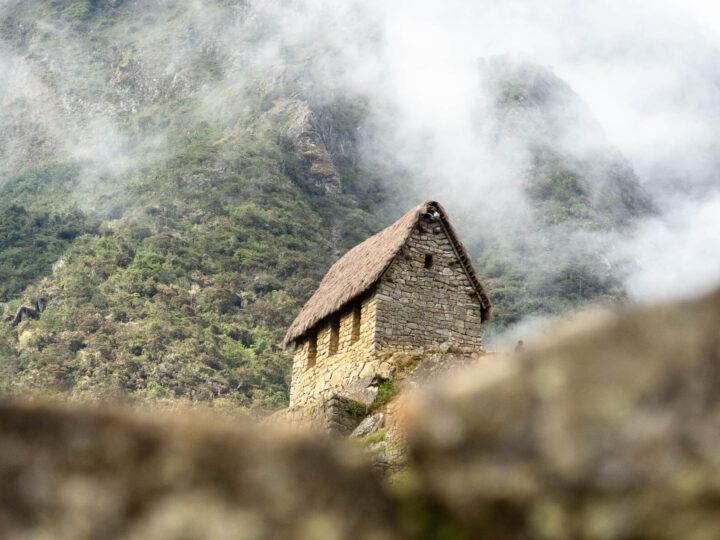
But to understand when are the best weather conditions for Machu Picchu, you must first understand the weather in Peru. While Lima may see only sunny days for weeks, Aguas Calientes – the closest town to Machu Picchu – may be inundated with rain. The weather varies considerably across Peru because of the terrain and ecosystems around this vast country and the impact of both the rainy and the dry seasons.
Machu Picchu weather by season
- December to March (rainy season)
At the Inca site, the average temperature ranges between 12 and 24°C (54-75°F). You can expect showers mostly in the afternoon. Though there is no certainty which months will experience the heaviest downpours, February has the highest precipitation level on average.
Due to safety reasons and for maintenance, the Inca trail is closed during February, while other treks (such as the Salkantay and the Lares) are at their wettest during this month. Trails in Machu Picchu itself can be dangerous during the rainy season, especially those leading up to Huayna Picchu Mountain.
Want a cheeky 5% discount on the Inca trail?
Alpaca Expeditions are not only one of the most sustainable companies offering Inca trail treks to Machu Picchu, but their guides, porters and chefs are the ultimate hosts.
They’re now offering Worldly Adventurer readers a 5% discount on all of their hikes – just mention Worldly Adventurer when you enquire!
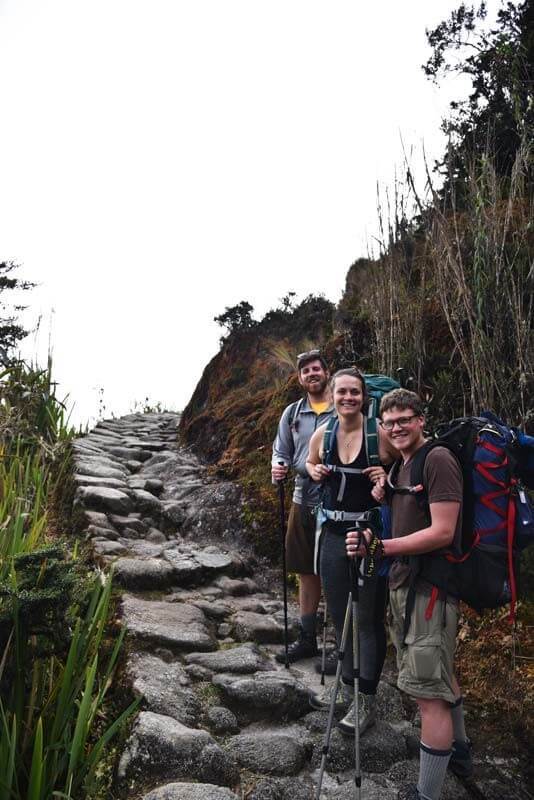
- May to September (dry season)
The average temperature ranges between 17 and 19°C (62-66°F), making these the coldest months at Machu Picchu. Unlike most tropical areas, Peru and, specifically, Machu Picchu is colder during the dry season, but you’re less likely to experience an overcast day.
As the precipitation of the rainy season has turned the landscapes lush green, the dry season offers the best views and the most photogenic conditions.
It is, for this reason, the peak season for tourism falls during July and August, which also coincides with summer vacations in the northern hemisphere.
- April, October, and November (shoulder season)
The rainy season ends in April, although rain showers are still likely during this month. It’s better to visit during the last month of dry weather (October) before the rainy season starts.
However, it’s worth remembering that even though the shoulder seasons are supposed to be dry, the weather remains a little unpredictable, with occasional downpours (but more sunshine!).
As a result, the best time of year to visit Machu Picchu according to the weather and the possibility of clear views of the archeological site is from June to July.
However, this settled, dry weather attracts the most crowds. Trekking to Machu Picchu – and most parts of the Andes mountains generally – is extremely popular during these months.
To learn more about the weather in Peru and when to visit, read our article about the best time to visit Peru .

Which months are better for avoiding crowds at Machu Picchu?
Though it’s open every day, Machu Picchu’s busyness should also influence when you choose to visit. Large crowds mean more queueing time at the entrance and more effort to get unobstructed views of the site itself.
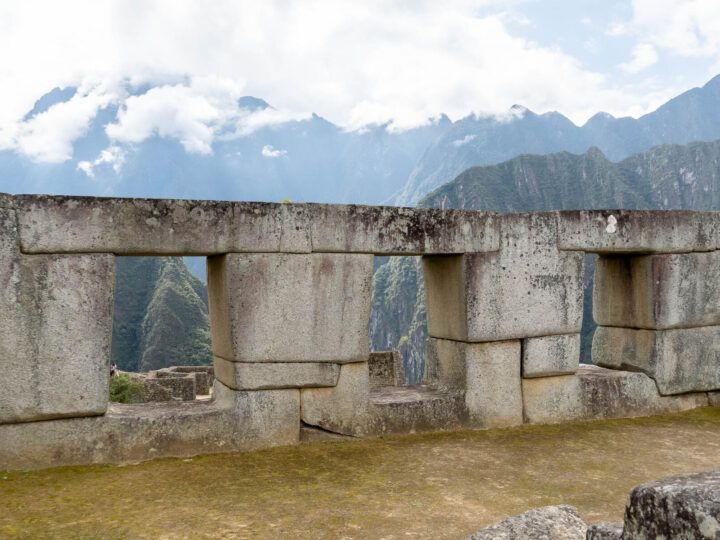
The low season – from December to March – means fewer crowds but possibly very wet weather conditions. That said, there may be one sunny day between weeks of rainy days, just like there may be a little rain during the dry season.
But it’s a big gamble since you cannot reschedule or refund your Machu Picchu tickets.
Here are the rough estimations of average daily visitors based on the number of tickets sold in 2018 , before the pandemic hit. August received the most visitors, with more than 4,800, and December was the least, with 1,900.
As you can see, even during low season, Machu Picchu still attracts many people. This should come as no surprise, considering it’s one of the things you must see in Peru’s Sacred Valley .
Daily average Machu Picchu tickets sold in 2018
- January ± 2,800 visitors per day
- February ± 2,400 visitors per day
- March ± 2,800 visitors per day
- April ± 3,200 visitors per day
- May ± 3,700 visitors per day
- June ± 3,600 visitors per day
- July ± 4,500 visitors per day
- August ± 4,800 visitors per day
- September ± 4,200 visitors per day
- October ± 4,000 visitors per day
- November ± 3,200 visitors per day
- December ± 1,900 visitors per day
So, when is the best time to visit Machu Picchu?
Considering weather conditions and crowds, the shoulder season is the ideal time for exploring the Inca citadel. The months of April, October, and November provide the opportunity to avoid the worst of the weather and the majority of other tourists.
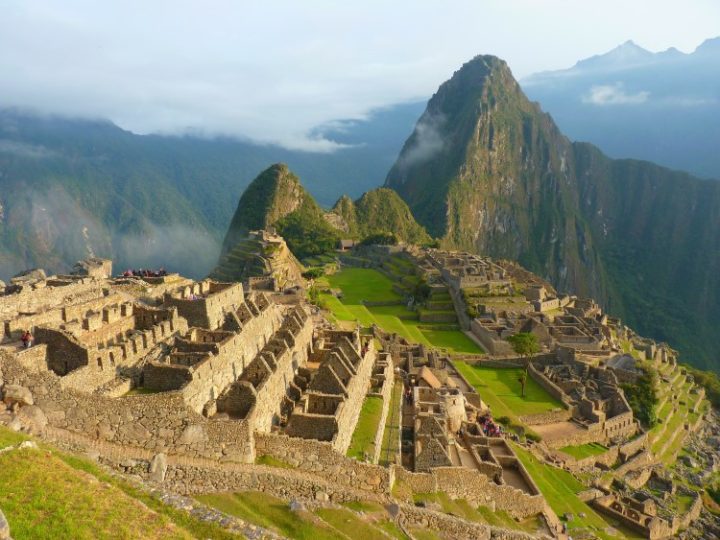
During these shoulder months, you’ll have quieter treks, as crowds are a fraction of what they are in high season. Keep in mind that even on sunny days, you can expect cold nights where the temperatures may drop below freezing.
Pack extra warm clothes and layers for your time hiking the Inca trail or the Salkantay and staying in Cusco and the wider Andes.
The best time of the year to visit is one thing, but choosing the best time of day is another. Among the nine available time slots, five are in the morning. Which of those is the one to choose?
The answer depends on how you plan on arriving: on a train from Ollantaytambo or Cusco or on foot through the hiking trails. Those interested in the former should check our recommendations about the best hotels in the Sacred Valley and, if you’re a fan of the ultimate comfort, the best luxury hotels across Peru .
If you’re taking the train to Machu Picchu
Even in low season, you’ll still be among hundreds (or even thousands) of people visiting the Inca citadel. So there may still be long lines, especially when waiting for the bus to and from the site. The most popular time is early morning, especially between 8 to 11 am.
So, if you want to avoid the busiest time, opt to go in the afternoon (12 to 1 pm, 1 to 2 pm, or 2 to 3 pm time slots).
Alternatively, you can also try to be the first one to arrive before the gate opens for the first time slot (6 to 7 am). Beat the crowds by getting on the earliest bus to Machu Picchu from Aguas Calientes; this departs at 5:30 am from Avenida Hermanos Ayar , right by the river.
Going that early in the morning means spending at least one night in Aguas Calientes (Machu Picchu pueblo) itself.
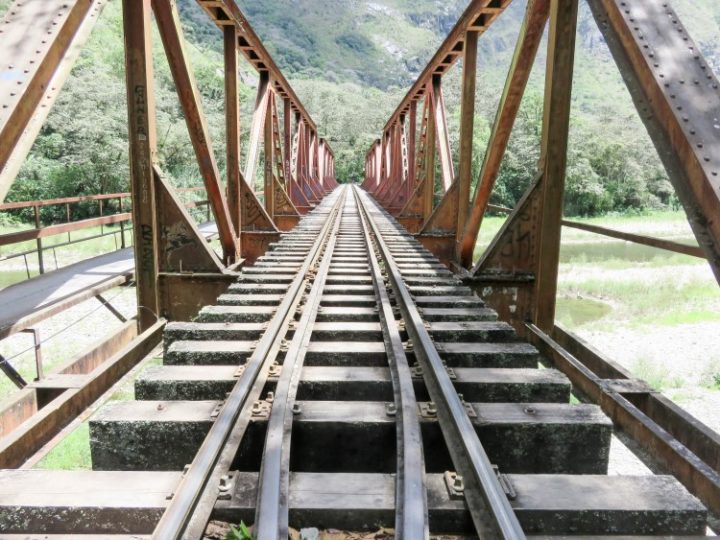
I booked my bus ticket weeks before my visit to secure my seat on that first bus. I noticed those who purchased theirs on-site had to wait for the following bus, even if they’d probably aimed for the first bus. Therefore, it’s best to book your bus tickets in advance (you can do it here ).
Another way to ensure you’ll be the first in line when the gates to Machu Picchu open is to hike from Aguas Calientes instead of taking the bus. The catch is that you will need to start early, as the hike may take around one to two hours, depending on your fitness level – and it’s all uphill.
Insider tip: You can also use these tips during the busiest months to minimize the queues – although be aware that many visitors will try to do the same. Even if you ride the earliest bus, those who hike from Aguas Calientes may get there before you.
For those hiking the Inca trail
The most adventurous trek is the Inca Trail to reach Machu Picchu . Not only is it an excellent challenge, but allows you to relive the pilgrimages undertaken by the Inca themselves.
While the Inca built many trails throughout the Peruvian Andes, the route to Machu Picchu is a part of the Qhapaq Ñan (“Royal Road”) used exclusively by Inca royalty and pilgrims.
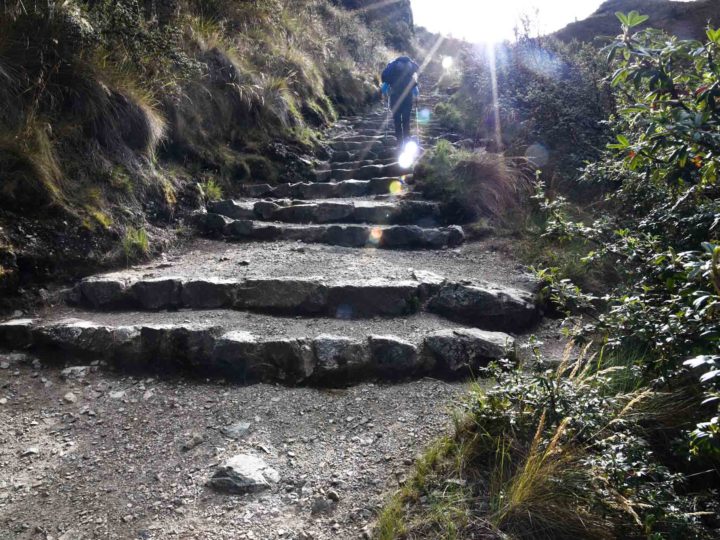
Regardless of when you trek, the end of this four-day hike is the arrival at the Sun Gate in Machu Picchu, with most reaching here at 6am to see the sunrise. If you’re a slower hiker, you may struggle to do this, however.
If you’re still keen to avoid large crowds, visiting during low or shoulder season will give you a better chance of achieving this.
Much like your ticket to Machu Picchu, your Inca trail permits must be purchased months in advance. I highly recommend trekking with the locally-owned company Alpaca Expeditions . They were brilliant when I visited Machu Picchu and they also work really hard to support indigenous communities across Cusco.

Change location
- Call us today from 9am
- 01993 838 925 01993 838 620 or
- REQUEST A QUOTE
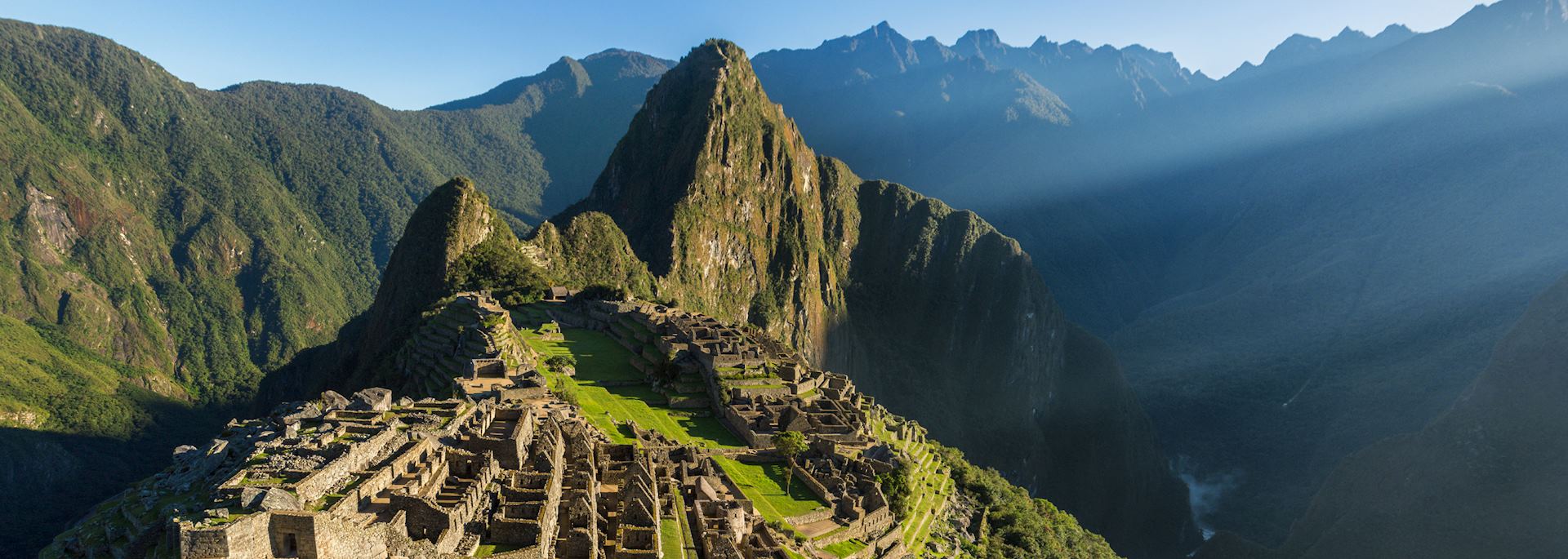
Visit Machu Picchu: A first timer's guide
- Machu Picchu
By Peru specialist Nik
Just shy of 600 years ago, a small plateau between two lushly forested peaks high in the Andes became a building site for the Inca Empire’s greatest city.
This citadel in the clouds was abandoned only 100 years later but Spanish invaders never found Machu Picchu. It was left to nature before explorer Hiram Bingham caught wind of it on an expedition in 1911 and decided to investigate. A hidden city protected by the mountains, and still wonderfully inaccessible other than by foot or train, Machu Picchu is now a New Seven Wonders of the World .
My Machu Picchu highlights
I’m often asked if Machu Picchu really lives up to its name. The emphatic answer is yes, and for two reasons.
Firstly, its buildings — the temples, palaces and houses — are in a remarkable preserved state. The Spanish never ventured up the mountains and so left it untouched.
Moreover, each time I visit Machu Picchu I’m bowled over by the setting. Out of view from the valley, you hear the roar and churn of the Urubamba River 500 m below. A protective wall of mountains surrounds you, which fades in and out of view as the mist falls and lifts. You have the distinct feeling of being high up in the world and part of a very well-kept secret.
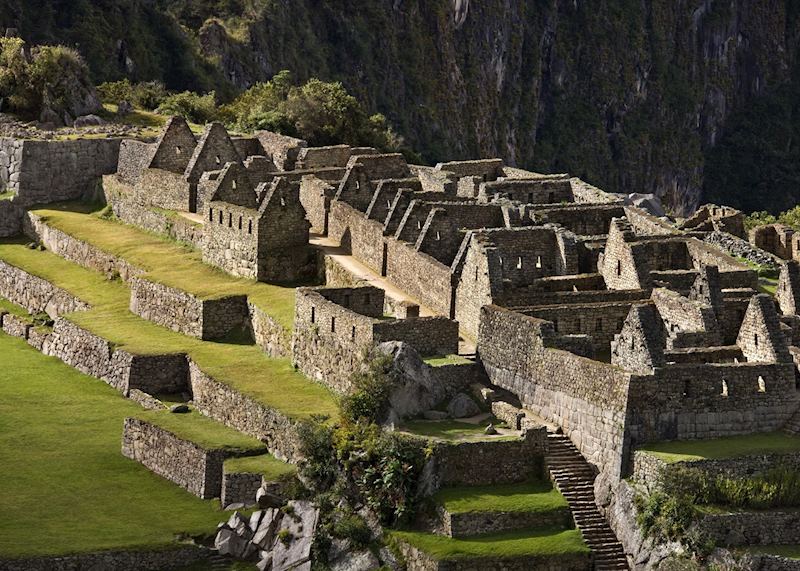
Three of my stand-out highlights
The intihuatana stone.
This carved pillar on a square stone base remains a testament to the Incas ’ knowledge and skill as astronomers. The name translates to the 'hitching post of the sun'. The corners point to the four cardinal points, and the stone still accurately indicates the positioning of the sun. If you happen to be watching at noon on either equinox, you’ll notice the stone’s shadow disappear for just a moment, as designed by its creators.
The Royal Tomb
This cave-like building is thought to be where sacrificial or burial rituals were performed, and there have been more than 100 skeletons excavated here. Just to the left of the tomb lies a series of ceremonial baths fed by a sophisticated aqueduct system — another reminder of the impressive masonry skill of the Incas.
Climb Huayna Picchu
You can climb Huayna Picchu, the witch’s hat of a mountain that stands guard behind Machu Picchu, as long as you book it well in advance as part of your admission ticket. Your ticket will show your allocated time slot to start the walk, and it takes about an hour to reach the top.
I wouldn’t recommend it if you don’t like heights — the last stretch of path narrows with no barrier to separate you from the edge. The reward comes from the view at the top, which our guides generally agree is the best place to see Machu Picchu from above. You could opt to climb part of the way to still get the knock-out view, albeit from a lower level.
Video: Our expert tips for visiting Machu Picchu

Where to stay in Machu Picchu
I’d highly recommend an overnight stay at Machu Picchu or Aguas Calientes if you want to get up to experience the ruins early the next morning.
The Machu Picchu Sanctuary Lodge is the only hotel close to the entrance of Machu Picchu, a mere stroll away. Staying here ensures you’re best placed to avoid travelling time at the start and the end of the day, though this convenience comes at a considerable price tag.
Aguas Calientes has a good range of hotels. The buses start to roll out of town up to Machu Picchu early enough for you to arrive just after the gates open, and well ahead of visitors coming by train. Staying locally also is helpful if you want to visit the site more than once. Mist clinging to the peaks can be completely bewitching, but visibility can be changeable 2,450 m above sea level. A second visit can give you a completely different set of conditions to enjoy as you explore the architecture, and time to climb Huayna Picchu.
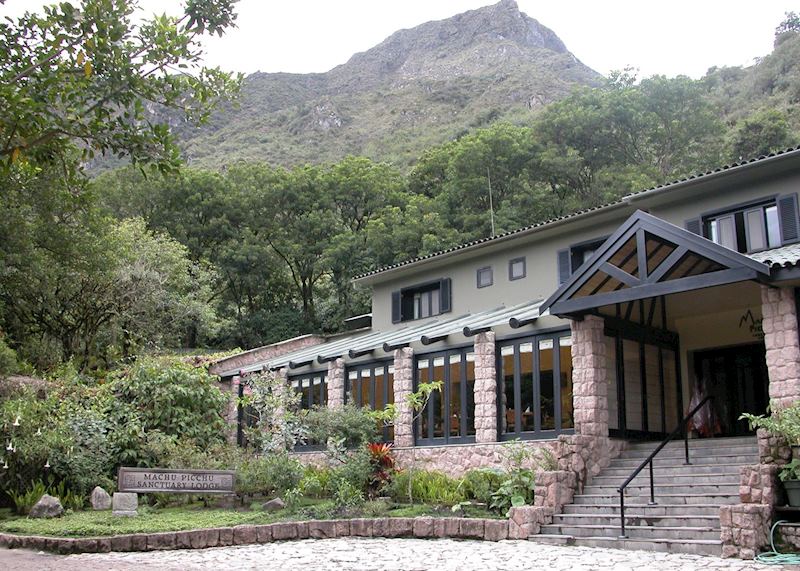
How to get to Machu Picchu
Your most common route to Machu Picchu is flying into Peru’s capital city, Lima , before transferring to an internal 1h 15m flight to Cuzco .
Cuzco sits at the base of the Andes in the southeast of Peru. It was the capital of the Incas and is the leaping-off point for Machu Picchu and the Sacred Valley , the one-time heartland of the Inca Empire. You can reach Machu Picchu from Cuzco on the train or by trekking.
A small town, Aguas Calientes, has sprung up in the valley below Machu Picchu. It serves as the disembarking point for the train or a gathering place after you’ve completed the Inca Trail and descended from Machu Picchu.
From as early as 5am buses leave here to travel up the windy road cut into the mountainside to the entry gates of Machu Picchu.
When is the best time of day to visit?
Machu Picchu is often busiest between 11am and 3pm when most train and bus visitors arrive, so the opportunity to see the site in the morning or at dusk could allow you to have a more meditative experience and better light for photography.
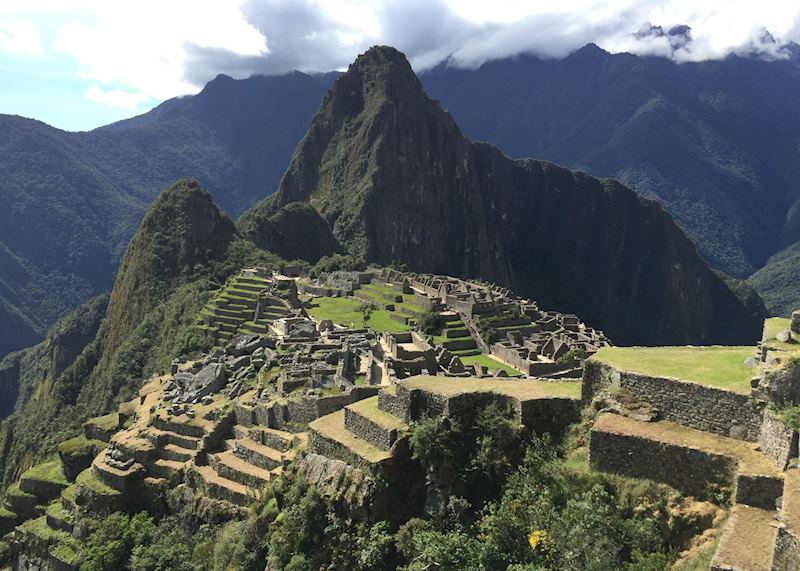
Machu Picchu by rail
The train journey from Cuzco to Aguas Calientes offers you the chance to see dramatic, natural scenery as you make your way through lush valleys and past rugged peaks, following the course of the Urubamba River.
There’s a variety of rail services, from regular carriages with comfortable seating, Vistadome services with panoramic windows through to the luxury Hiram Bingham train with fine dining and entertainment.
You can break up your journey mid-point by stopping or staying overnight at Ollantaytambo in the Sacred Valley, once an important administrative centre for the Incas. The remnants of a sturdy fortress, complete with terraces, dominates the town. You would travel into the valley by road and then take the train from Ollantaytambo to Machu Picchu.
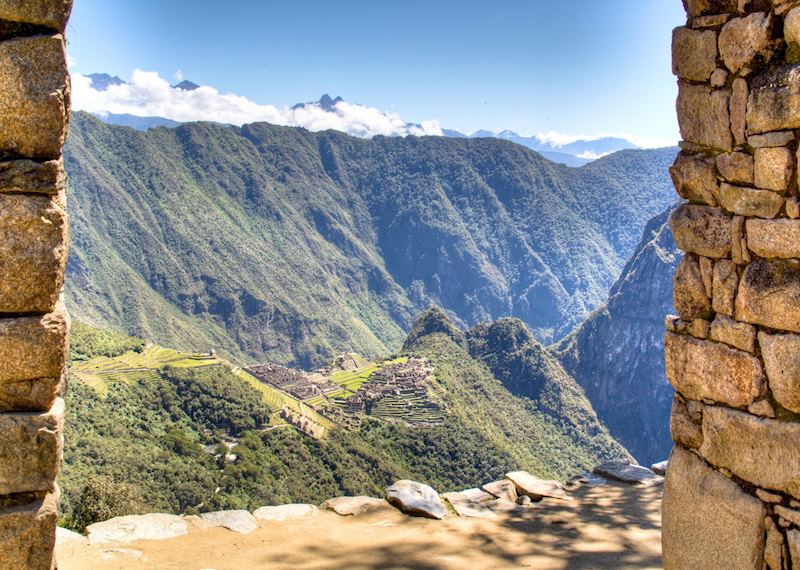
Machu Picchu by foot
Trekking holidays to Machu Picchu are ideal if you want to immerse yourself fully in the hugely varied landscape of snow-capped mountains, sapphire lakes, terraced fields and emerald-forested slopes.
Our guide on trekking holidays in Peru introduces a range of routes and distances so you can find a trip that’s tailored to your fitness level, the number of days you have available to explore and your preferred accommodation.
With group and private treks ranging from 1 to 12 days, you can cover the Inca Trail, Salkantay (known as the ‘alternative Inca Trail’) or the Mountain Lodges of Peru route at a pace that suits you once you’ve had time to acclimatise to the altitude.
There are regulations restricting the number of walkers allowed on the Inca Trail. Only 500 people are allowed to start the Inca Trail trek to Machu Picchu each day, and this includes the porters. Permits sell out notoriously far in advance, so it’s essential to plan your trip as early as possible if you want to walk the Inca Trail.
A little note on altitude
Machu Picchu stands at around 2,450 m above sea level, and Cuzco at 3,400 m. At these heights, there’s 20 per cent less oxygen in the air. In the vast majority of cases, symptoms of altitude sickness are very mild (a little sleepiness or a slight fuggy head) and wear off after a day or two, but it can make doing anything energetic feel like a struggle.
Our Peru specialists can give you personalised recommendations about how to acclimatise ahead of your trek and combat any altitude sickness during it.
Travel insurance for Machu Picchu treks
It’s important to check whether your travel insurance will cover you for treks at altitude, especially if you’ve previously bought a policy to cover you for a number of trips throughout the year. It’s possible to buy specialist trekking travel insurance, and this tends to fall into pricing categories based on the altitude and length of the trek you wish to take on.
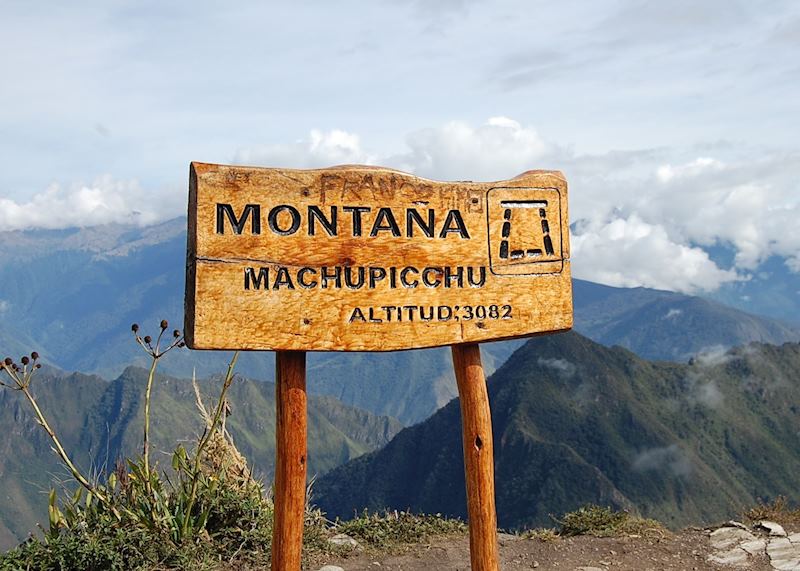
Where to eat at Machu Picchu
Aguas Calientes has a plentiful selection of restaurants to suit your tastes and wallet. One of our current favourites is Indio Feliz, an award-winning restaurant serving Peruvian dishes with a French twist tucked away in a side street.
You can also try Peruvian street food if you time it right. Every Sunday, slow cooked chicharrones (hog roast) is sold until it’s all gone. I tried it on a recent trip and the meat was amazingly succulent, with the best crackling I’ve ever tasted.
The best time to visit Machu Picchu
July and August is peak season, when the highest number of visitors are taking on the Inca Trail or wandering around Machu Picchu.
The Andean foothills are at their driest at this time of year too, with the rainy season taking place between November and March.
We favour visiting throughout the dry months of April to October, but it’s worth avoiding the July and August peak period if you’re not tied to travelling at this time.
It should be noted that the Inca Trail is closed to walkers during the month of February so restoration work can take place.
Trips to Machu Picchu
We’ve created a selection of itineraries that visit Machu Picchu as well as some of Peru's other highlights.
I’d suggest you need at least 9 days in Peru to take in Machu Picchu and the surrounding Incan ruins, with time to explore Cuzco before or after.
With a little extra travelling time you can extend your journey to cover time in the Peruvian Amazon , Lake Titicaca or the Colca Valley.
Tailor-make your trip to Peru
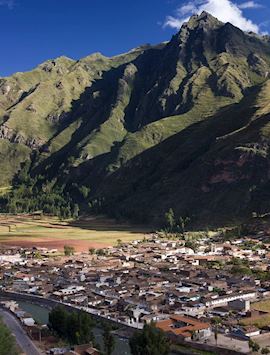
Incas uncovered: Cuzco, Sacred Valley & Machu Picchu
9 days from £3,585pp

Luxury Peru tour
15 days from £10,145pp

Icons of South America: Cuzco, Machu Picchu, Iguaçu Falls & Rio
13 days from £10,700pp
Start thinking about your experience. These itineraries are simply suggestions for how you could enjoy some of the same experiences as our specialists. They're just for inspiration, because your trip will be created around your particular tastes.
Further reading
- Trekking to and around Machu Picchu
- Peru’s Inca wonders beyond Machu Picchu
- Machu Picchu plus one: tried-and-tested South American combinations
- Video: Helen's travels in Peru
- Trekking holidays in Peru: the best hikes (that aren’t the Inca Trail)
Plan your trip
Tell us about your plans and one of our specialists will plan a unique trip for you...
Request our brochure, The World Your Way

Order your digital copy via email.
Are you sure you want to close the session?
La cuenta ya se encuentra activa
Or enter your e-mail:
Recover your offer
We will send you a 4-digit code shortly
Enter the 4-digit code and your new password
Enter your search here
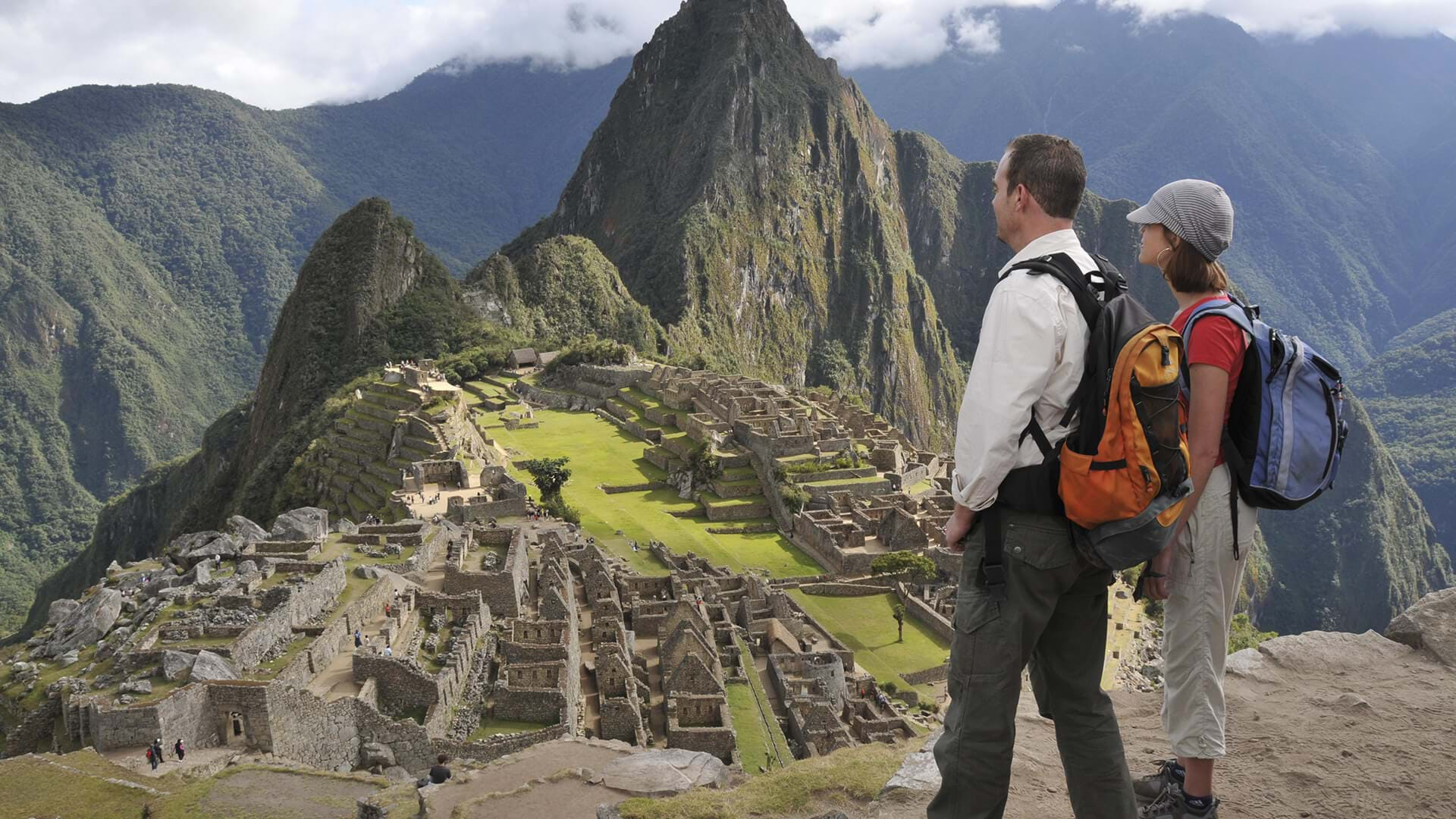
- Machu Picchu: complete guide to fully enjoy your trip
Take this recommendations so that you have an unforgettable experience.
Machupicchu, Cusco Credit: Eduardo Cayo / PromPerú
peru.travel
Reaching the most important tourist destination in Peru is not an easy task. Its special geographical location, added to the large number of people it receives daily, require some planning, and also, a a series of recommendations so that the experience is totally pleasant, without going over for any kind of setbacks.
The reason: this destination presents a wide variety of offers and packages that include all kinds of routes, accommodation and timetables, so a precise search is essential in order to choose the best option. To do this, we invite you to take a look this guide with useful tips so that you can enjoy this archaeological sanctuary to its fullest.
When to visit?
Many tourists who arrive in Machu Picchu usually coincide with sudden rains and a cloudy climate that sometimes prevents them from enjoying the wonderful view that the valley presents. To avoid this happening to you, the ideal time to visit the Inca citadel is between April and October, given that during these months the Cusco region goes through a dry season full of sunny days with temperatures ranging from 20° C during the day and 10° C at night.
Ver esta publicación en Instagram This is happiness! Such an amazing place with such amazing fluffy friends. Great picture by @sofiapozuelo // ¡Esto es felicidad! Tan maravilloso lugar con estos encantadores amigos . . . . . #PeruTheRichestCountry #PerúPaísMásRico #MachuPicchu #Cusco #llama #amazing #instatravel #MadeinPeru #bucketlist #travelgram #voyage #bestintravel #gotogether #mustvisit #mustsee #instagood #VisitPeru #Perú #DiscoverYourselfInPeru #descubreteenperu #wanderlust #explore #travediaries #travel #igtravel #travelgram Una publicación compartida de Perú (@peru) el 23 Feb, 2020 a las 2:08 PST
However, if you go between November and March, it doesn’t mean that you’ll have a negative experience. During these months you could take advantage of a smaller presence of visitors and also enjoy a great green landscape often accompanied by a shimmering rainbow.
How to get there?
There are two ways to get to Machu Picchu. The fastest and most comfortable is by train with an approximate travel time of three hours. The trains depart every morning from Ollantaytambo and arrives in Aguas Calientes (closest town to the citadel), offering all kinds of services and amenities. If you wish to acclimatize before leaving, Aguas Calientes has multiple lodgings and a craft market for those who choose to take a day of rest. Otherwise, there are minivans that would take you to Machu Picchu if you prefer to continue.
Another alternative is going on foot along the road. Many tourists reserve this route in advance for everything it represents. If you are a lover of trekking and adventure, this experience will undoubtedly leave you ecstatic. It’s about a three to five-day excursion that will demand your maximum effort but it will be worth it because of the beautiful landscapes you will enjoy.
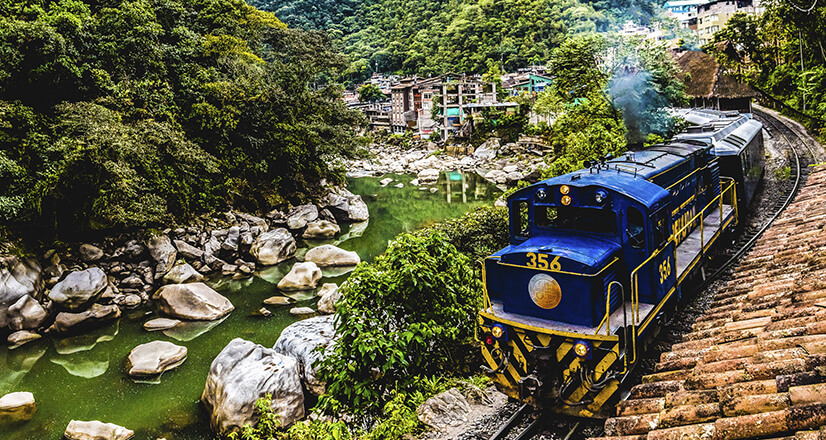
The fastest and most comfortable way to get to Machu Picchu is by train, with an approximate travel time of three hours. Credit: Shakedown Team / PromPerú.
How to hire a tour guide?
Due to the extension of Machu Picchu and in order to safeguard its integrity for visitors, it is mandatory to hire the service of a tour guide. This person not only will provide you with information you may did not know about the history of the Incas and the enigmatic origin of the citadel, but will assist you under any unforeseen event that may occur.
What to include in your backpack?
To enjoy a walk through the sanctuary, you need to take your passport or identity card with you and pack some comfortable items such as lightweight trekking shoes, a raincoat (in case of rain), sunscreen, a camera, repellent and a bottle of water that will help you cool down during and after the tour.
Be a responsible tourist
Finally, the most important recommendation for all visitors is to take care and preserve this complex. When visiting this sacred and historical place, try to comply with all the disposals and security measures without violating the warnings and prohibitions. Visitors must be aware of the cultural value that Machu Picchu represents so that future generations can enjoy and learn from its history.
Sources: El País / La Nación / Peru.com / El Mundo Ok / Boleto Machu Picchu / Guia de viajes
Follow us on social media Facebook | Instagram | Twitter | TikTok | YouTube

Find out more
6 places you can visit before arriving to Machu Picchu
Related articles
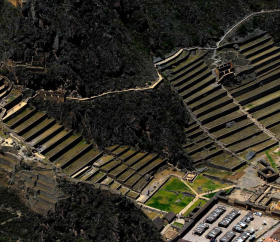
Ollantaytambo: an architectural jewel on the way to Machu Picchu
Discover this Inca fortress that impresses with its perfection.
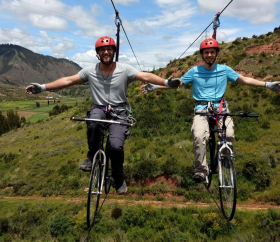
What adventure sports can you practice in Cusco?
Live the most extreme experiences in the impressive Sacred Valley.
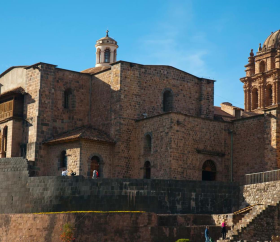
5 museums in Cusco that you should visit
Plan your trip to Cusco and start a cultural tour that will surprise you.
Protect Your Trip »
Machu picchu tours: how to get there and tips for visiting.
Here is everything you need to know to plan a trip to Machu Picchu.
How to Get to Machu Picchu

Getty Images
A hike around Machu Picchu is a must-do if you're visiting Cusco, Peru.
Note: Some of the below destinations may be affected by the civil unrest in Peru. Check with the U.S. Department of State before traveling.
Machu Picchu is thought to be one of the largest and most impressive Incan cities of its time. Today a UNESCO World Heritage Site with expansive ruins open to visitors, it sits high on a peak in the Peruvian Andes and is accessed via train or on foot. Here are some tips to help you navigate a visit to this incredible archeological site.
What is Machu Picchu? Machu Picchu is a 15th-century Incan city that was abandoned by the Incas after the Spanish conquest. The ruins feature about 200 structures that were used for religious, agricultural, astronomical and ceremonial purposes, though exactly how remains a mystery. It's believed that between 300 and 1,000 people inhabited the city and the area was devoted to the worship of the sun god.
Where is Machu Picchu? Machu Picchu is located in the Peruvian Andes within a tropical mountain forest at nearly 8,000 feet above sea level. Cusco , the nearest major city, is less than 50 miles southeast of Machu Picchu.
When was Machu Picchu built? Historians believe that Machu Picchu was built in the 15th century.
How do you get to Machu Picchu? Machu Picchu can be reached a variety of ways, including hiking the Inca Trail with a tour company, by train or by bus.
When is the best time to visit Machu Picchu? The site is located in the Amazon rainforest in Peru, where the rainy season runs from November to March. To avoid rain, travelers may want to visit during its dry season from April to October. Travelers say that June through August tends to be the busiest, so opting for shoulder months like May or October may help avoid crowds.
Know Before You Go
- What: Machu Picchu tours
- When: Machu Picchu is accessible daily with entrances from 6 a.m. to noon or noon to 5:30 p.m. During the month of February, the Inca Trail is closed for maintenance and is inaccessible to visitors.
- Cost: Entrance tickets cost approximately 152 Peruvian soles (about $45) for adults; 77 soles (around $23) for students.
- Must-know tip: To tour Machu Picchu, you must purchase your ticket online in advance and print it out as no tickets are sold at the site. Experts and fellow travelers recommend purchasing your ticket several months in advance as there only 2,500 visitors allowed per day. If you choose to visit with an organized tour company, the company will take care of reserving and purchasing the ticket for you.
- Website: https://www.machupicchu.gob.pe/inicio
When visiting Machu Picchu, you will be given a specific time you can enter the site. Key attractions include the Temple of the Sun, the Room of the Three Windows, the water irrigation system and the Royal Mausoleum. There is an additional fee to visit the mountains of Machu Picchu and Huayna Picchu, which surround the old city, should you want to hike trails there. After you purchase your ticket – either to Machu Picchu or the site with one of the mountains – be sure to print your ticket and bring it with you along with identification, such as a passport.
Restrooms are located outside the entrance and cost about 2 soles (around 60 cents) to use; there are no restrooms within Machu Picchu. There's no visitor center, but Peru's Ministry of Culture does have an office in Aguas Calientes, a town that acts as the gateway to Machu Picchu. There are also a variety of restaurants in Aguas Calienties to refuel after your trip. Be aware, you also may not be allowed to bring single-use plastics (like sandwich bags) or large bags into the site. If you do bring a large bag, there is a bag storage facility near the site's entrance where you can leave your bag for a small fee as you explore the site.
Machu Picchu is located less than 50 miles northwest of Cusco, a Peruvian city which is also a UNESCO World Heritage Site. Cusco can make a great base for your visit to Machu Picchu as many organized tours to the site begin here.
Since Machu Picchu and Cusco sit at high elevations, almost 8,000 feet above sea level, travelers should prepare for altitude sickness. Talk to your doctor before your trip to make sure your body can handle the altitude change. When you arrive, help your body adjust by getting plenty of rest for the first few days, avoiding alcoholic beverages and drinking lots of water to remain hydrated. You should also plan to wear insect repellent and plenty of sunscreen for the trek. Travelers also recommend dressing in layers and wearing pants and long sleeves, even if the weather is warm, as the mosquitos are known to be relentless.
Tour Options
Though you can opt to visit Machu Picchu (and make the necessary travel arrangements) by yourself, a guided tour can help streamline the process. Multiple tour operators offer daytrips to Machu Picchu. The majority of these tours originate in Cusco and leave early in the morning (at or before 5 a.m.). You'll be taken via bus to the town of Ollantaytambo, where groups board trains to Aguas Calientes. From Aguas Calientes, groups board a bus to Machu Picchu. Travelers generally spend approximately two hours at the site before they begin the trip back to Cusco. Exact tour prices vary, though you can expect to spend approximately $300 per person (including train tickets, bus fare and a guided tour of the site). Travelers generally enjoy the tours, extolling the knowledgeable guides, and appreciate the ease by which they could see Machu Picchu. Others caution selecting your tour company carefully as experiences can vary wildly from company to company.
Travelers can also opt to hike from Aguas Calientes to Machu Picchu on their own via the Carretera Hiram Bingham. The approximately 4-mile journey is a steep climb and can be completed in around 90 minutes. Though an option, most travelers say the walk is long, difficult and lacking in scenery.
Tourists who have ample time, or have a true adventure streak, can hike the Inca Trail to Machu Picchu. The approximately 25-mile trail takes about four days to hike and ends at Machu Picchu. To hike the Inca Trail, you must go with a tour company or hire a guide, as it is no longer permitted to hike the trail on your own. Keep in mind that the trail closes each February for maintenance. Tours can last as little as two days (for an abbreviated journey along the trail) or more than a week to experience additional Peruvian sites.
There are a variety of other attractions and ancient sites nearby Machu Picchu that you may want to add to your itinerary. Titicaca Lake, located at more than 12,000 feet above sea level, is the largest lake by volume in South America. The town of Cusco also has much to see, including cathedrals , temples and a plaza used in Incan times , along with many archeological sites. Take advantage of the Cusco Tourist Ticket (also known as Boleto Turistico del Cusco), which grants access to many of Cusco's attractions for one fee.
Getting There
You can reach Machu Picchu by foot, train or bus, though if arriving by train, your ride will end in Aguas Calientes and you will need to ride a bus or hike approximately 4 miles to access the site. You can take a train from one of several stations near Cusco to the city of Aguas Calientes and then ride a bus to Machu Picchu. (Note: Since these train stations are outside Cusco city proper, you'll need to take a bus to get to them). The train ride via Peru Rail takes about four hours and you can choose from a variety of train types, each with a different price point to accommodate any travel budget. Tickets for Peru Rail are available at PeruRail.com.
You can buy bus tickets from Aguas Calientes to Machu Picchu in advance in Cusco at the Consettur offices, which helps you avoid lines at the actual bus stop. Buses depart from Aguas Calientes approximately every 15 minutes beginning at 5:30 a.m. daily until 3:30 p.m. Visitors recommend getting in line for the bus several hours before your scheduled entrance time at Machu Picchu as lines can be extremely long. Some travelers report getting in line three hours before their scheduled entrance time. You'll also likely encounter lines to take the bus from Machu Picchu back to Aguas Calientes.
Additional tour options:
- CuscoPeru : Full-Day Private Machu Picchu Guided Tour from Cusco. View & Book Tickets »
- Viajes Pacifico : Machu Picchu Day Trip. View & Book Tickets »
- Viajes Peru : Day Tour to Machu Picchu The Inca City. View & Book Tickets »
- Machupicchu Latin America : 2-Day Tour: Sacred Valley and Machu Picchu by Train. View & Book Tickets »
- Inkayni Peru Tours : Full day. View & Book Tickets »
Looking for more information on Machu Picchu? Check out the U.S. News Travel Cusco guide .
Tags: Tours , Travel , Vacations , Peru
World's Best Places To Visit
- # 1 South Island, New Zealand
- # 4 Bora Bora
If you make a purchase from our site, we may earn a commission. This does not affect the quality or independence of our editorial content.
You May Also Like
7 best san francisco wine tours.
John Rodwan and Marisa Méndez Aug. 20, 2024

The 6 Best Chicago Walking Tours
Holly Johnson Aug. 20, 2024

The 9 Best Mexico City Tours
Gwen Pratesi Aug. 20, 2024

Best Horseback Riding in Estes Park
Gwen Pratesi Aug. 19, 2024

The Best College Town Hotels
Rachael Hood Aug. 19, 2024

The Best Rome Colosseum Tours
Laura Itzkowitz Aug. 19, 2024

The Best Sedona Tours
Amanda Norcross Aug. 15, 2024

The Best Grand Canyon Tours from Vegas
Taylore Fox Aug. 13, 2024

The Top Places to See Fall Foliage
Gwen Pratesi and Erin Vasta Aug. 13, 2024

11 Best Niagara Falls Tours
Amanda Norcross Aug. 12, 2024

Machu Picchu Tours & Treks

As the mist lifts off the mountains and over the Inca ruins, Machu Picchu evokes an otherworldly feeling
It’s one of the world’s most incredible archaeological sites, with a breathtaking location to match. With all that Machu Picchu has to offer, it’s easy to understand why so many are drawn to the visitor heartland of Peru . The ultimate decision is how to get there. Choose a trek or take the train? You could hike through cloud forests along the classic Inca Trail, fulfill your Andes experience on the Quarry Trail or challenge yourself on the Choquequirao trek – it's up to you. We don’t need to tell you why the adventure is worth your while. Our local leaders will keep you safe, informed and inspired every step of the way.
Our Machu Picchu trips
Let's create an exclusive trip for your group.
Machu Picchu highlights
Which route is right for you.
With its spectacular natural scenery and profound cultural encounters, the Inca Trail is an international beacon for trekking. Attracting thousands of hikers each year, it's a challenging yet rewarding hike that stays with you for a lifetime. Although rated moderate, the relentless uphill (and downhill) hiking is tough - the fitter you are, the more you’ll enjoy it.
For an impressive hike off the beaten path, consider the Inca Quarry Trail. This lesser-known trek offers the same magical scenery of the Andes mountains, passing through local villages and visiting three smaller archaeological sites the other trails don’t. Another bonus is that the hike doesn’t require a permit – so once you book, you’re set.
Take your boots further with a challenging eight-day hike moving through high-altitude cloud forests, over mega mountain passes and along an ancient trail leading to the well-preserved Inca city ruins of Choquequirao. This trail might be secluded and not for the faint-hearted but it's also one adventure you'll never forget, and that's a promise.
Meet our team
Why choose us.
All our guides are certified local tour guides and trained in-house on Intrepid Safety Policies. Each trekking guide also receives exclusive Intrepid training, provided by mountain rescue experts in the field.
All our guides and trek leaders have been trained by medical specialists in handling altitude illness and are proficient in first aid. Our team carries oxygen cylinders on all treks for emergency use.
Our team members live and work in the Andean region, which means revenue from all our treks benefit the local economy.
We take care of the details, so you can focus more on enjoying the journey. Our tours include all meals, with essential camping equipment and the option to hire additional hiking equipment if needed.
We are proud to have the tick of approval from the Rainforest Alliance indicating that we meet and operate at the highest standards in environmental, social and economic sustainability.
We strive to use travel as a force for good. That’s why we choose to give back to the communities we visit, carbon offset all our trips and take our social and environmental responsibilities seriously. We’ve been officially certified as the world’s largest travel B Corp, which means when you choose Intrepid Travel, you can rest assured you’re traveling to improve the planet.
Machu Picchu tour reviews
Filter by rating
Inca Trail Express
Real Peru to Bolivia
Inca Trail & Amazon Adventure
Peru Family Holiday with Teenagers
Articles of Machu Picchu
How to secure your Inca Trail permit the easy way
The joy of seeing Machu Picchu with the descendants of its builders
Machu Picchu or Chichen Itza? Which historical site should you visit?
What I wish I knew before hiking to Machu Picchu
An open thank you letter from blind athlete, Dan Berlin, to his local leader
Behind the scenes on the hardest physical challenge of my life: the Inca Trail
Why trekking the Inca Trail was the best way to celebrate turning 50
10 things you’ll only know if you’ve travelled in Peru
Machu Picchu travel FAQs
What is machu picchu.
Machu Picchu is a magnificent reminder of the power and ingenuity of the Inca civilization.
The ancient citadel, built in the 15th century, was abandoned only 100 years later, and many mysteries remain.
Listed by UNESCO as a World Heritage site in 1983 and announced as one of the Seven Wonders of the World in 2007, Machu Picchu makes a lasting impression.
Where is Machu Picchu?
Overlooking the Urubamba River, the site of Machu Picchu sits above the Sacred Valley – located in the Cusco region of Peru.
How can I get to Machu Picchu?
Many travellers fly into the capital of Cusco before taking the train or choosing a hiking tour. The stepping stone to Machu Picchu is Ollantaytambo, about 1.5 hours away from Cusco by bus.
From Ollantaytambo, the most common ways to get to Machu Picchu are:
- Hiking the Inca Trail (one way to Machu Picchu)
- Taking the equally scenic and rewarding Quarry Trail
- Trekking the challenging 8-day Choquequirao Trail
Can I still hike if I take the train?
So, you want to experience the Inca Trail but aren't quite up for the entire hike?
The one-day option takes you by train part of the way where you hop off and trek the trade highway of the ancient Inca empire.
You will arrive at the Sun Gate in the afternoon to take in the views of Machu Picchu.
Is hiking the only way to get to Machu Picchu?
On all of our trips that visit Machu Picchu, you can choose the rail journey instead of the hike – simply specify while booking that you’d prefer the train option. There's no extra cost for this, though please note fees may apply if you decide to change to the train option after your Inca Trail permit has already been purchased.
Learn more about taking the train to Machu Picchu
When is the best time to visit Machu Picchu?
You can visit Machu Picchu all year round. The most popular time, and therefore the most crowded, is in June and July.
Low cloud cover during the dry season from April to October also means cold nights on hiking trails, so you'll need thermals for a good night’s sleep.
The wet season is from November to March. Temperatures rise and the region receives heavy rainfall, so waterproofs are essential if you're hiking. If you don't mind a bit of rain, the plus side is that crowds are smaller. If you want to hike the Inca Trail, note that it closes every year in February for maintenance.
Can you get to Machu Picchu in a day?
Yes, you can. Starting with an early rise in the morning, take a 1.5-hour bus ride to Ollantaytambo, then a 2.5-hour train to Aguas Calientes, followed by a 30-minute bus to Machu Picchu.
You will have a couple of hours to visit Machu Picchu and then return to Cusco the same way.
None of our trips visit Machu Picchu this way, as we believe it doesn’t allow enough time to explore (and really enjoy) the site and the Sacred Valley area.
How high is Machu Picchu?
Machu Picchu is found deep in the cloud forest at 2440 m (7972 ft) above sea level, sitting at 1000 m (3280 ft) lower than Cusco.
What does this mean for you? In terms of altitude, you're unlikely to experience any altitude issues at Machu Picchu itself.
But be aware, trekking to Machu Picchu involves walking up and down several steep stairs, ramps and terraces at various altitudes, which can be strenuous.
Will the altitude affect me?
Most people start to feel the effects of altitude at over 2000 m (6561 ft) regardless of age, gender or fitness level. While our leaders have basic first aid training and are aware of the closest medical facilities, it is very important that you make yourself aware of the causes and effects of traveling at altitude. Monitor your health and seek assistance accordingly.
It is essential to take it easy, drink plenty of water and speak to your group leader immediately if you feel unwell.
We recommend seeing your doctor if you have health concerns before the trip, especially if you have a pre-existing medical condition or are taking any medication.
Do I need a permit to hike to Machu Picchu?
Everyone hiking to Machu Picchu via the iconic Inca Trail or the shorter Inca Trail Express requires a permit. You don't need a permit to trek via the Quarry or Choquequirao trails.
If you do the Inca Trail with Intrepid, our adventure consultants secure your permit for you so you can focus on getting excited – just make sure you have your passport details handy at the time of booking.
Permits are available on a first-come, first-served basis, so booking well in advance is critical.
We endeavor to purchase your permit within two working days of receiving all necessary information.
What should I pack for Machu Picchu?
For a day trip exploring Machu Picchu, we recommended taking a small backpack with the essentials: sunscreen, hat, water bottle (filled before departing), a few snacks and mosquito repellent. It helps to wear breathable pants, a long shirt and a waterproof jacket – since the UV index is higher in the Andes and the site is prone to rainfall.
If you plan to trek before visiting Machu Picchu, read our detailed packing instructions in your Essential Trip Information.
What is Wayna Picchu?
Wayna Picchu (also known also as Huayna Pichu or Wayna Pikchu) means ‘young peak’ in Quechua – although the mountain appears anything but young, towering behind Machu Picchu.
Known as the ‘stairs of death’, the hair-raising climb takes about three hours to return. More recently, a cap of 400 people a day has been introduced on the number of visitors allowed to climb.
Can I climb Wayna Picchu with Intrepid Travel?
We have performed risk assessments on all our optional activities, and unfortunately, we don't consider climbing Wayna Picchu a safe activity at this stage.
Reaching Wayna Picchu involves climbing steep, narrow and exposed sets of stairs, and we just can't guarantee your safety.
Our leaders are specifically prohibited from assisting you in visiting Wayna Picchu.
What are the toilet facilities like at Machu Picchu?
There are public toilets located at the main entrance of Machu Picchu and none after entering the site – so make sure you time your stop before heading off to explore.
Take some coins with you as there is a small fee to use the toilet facilities.
What does the Rainforest Alliance tick of approval mean?
The Rainforest Alliance is a non-profit organization. It is working to build strong forests, healthy agricultural landscapes and thriving communities.
The green frog seal shows that an enterprise has been audited to meet environmental, social, and economic sustainability standards.
The Rainforest Alliance recognizes Intrepid as one of Peru's top certified tourism businesses.
Can I visit Machu Picchu if I have a disability?
Yes, but of course it will depend on your level of disability, fitness and what support will be available to you.
People who are visually impaired have completed the Inca Trail (with the right support crew, of course).
Contact us to discuss your particular circumstances and we can assess it from there.
Does my trip support The Intrepid Foundation?
Yes, all Intrepid trips support the Intrepid Foundation. Trips to this country directly support our global Intrepid Foundation partners, Eden Reforestation Projects and World Bicycle Relief. Intrepid will double the impact by dollar-matching all post-trip donations made to The Intrepid Foundation.
Eden Reforestation Projects
Eden Reforestation Projects are helping to mitigate climate change by restoring forests worldwide; they also hire locally and create job opportunities within vulnerable communities. Donations from our trips support restoration across planting sites in 10 countries around the globe. Find out more or make a donation World Bicycle Relief
World Bicycle Relief provides people in low-income communities with bicycles to mobilize school kids, health workers, and farmers in far-out areas – giving them access to vital education, healthcare, and income. Donations help provide Buffalo Bicycles – specifically designed to withstand the rugged terrain and harsh environment of rural regions – to those who need them most. Find out more or make a donation
Visiting Machu Picchu On A Budget: 7 Insider Tips

Your changes have been saved
Email is sent
Email has already been sent
Please verify your email address.
You’ve reached your account maximum for followed topics.
- Book local flights for Cusco to save time and money.
- Opt for collectivos over trains to Aguas Calientes for a cheaper transportation option.
- Hostels in Cusco and Aguas Calientes can provide budget-friendly lodging.
When you think of Peru, you probably envision Machu Picchu. This instantly recognizable destination is one of the top attractions in Peru, and as someone who's visited, I can tell you how to do it on the cheap.
If you want to experience even more of Peru and see some off-the-beaten-path attractions , make sure to check out these archeological attractions and incredible ruins in Peru's Sacred Valley .
8 Things I Wish Tourists Knew Before Visiting Lima, Peru, From A Local
Lima, La Gris (the grey) is an awesome destination. Here are a few things locals wished visitors knew before they set foot into this gorgeous city.
7 Book A Local Flight From Lima To Cusco
Local flights are generally less expensive.
Cusco is the logical place to start your Machu Picchu journey, with its fantastic culture, stunning colonial architecture , and ideal spot right in the center of the Sacred Valley. If you're traveling from the United States, you'll likely land at Lima's International Airport .
Although you can technically take land travel from Lima to Cusco, you'll have to go over the Andes, which makes the trip long. Instead, grab a local flight, which costs as little as $38 .
6 Use A Collectivo To Get To Aguas Calientes
The train is expensive, so go the local way.
While there's a lovely train that runs between Cusco and Aguas Calientes, the city at the base of Machu Picchu, there's another way to get there if you want to save some cash. Local collectivos , or shared transportation, regularly depart from Cusco to the hydroelectric plant near Aguas Calientes. You'll still have to walk down the railroad tracks, but it's a flat path and a lovely little hike.
My One-Day Tour of Lima's Malécon
Lima feels like my second home, and one afternoon, I decided to traverse the Malécon. Here's what you can see along the coastline.
5 Stay In Hostels In Aguas Calientes And Cusco
Enjoy a sense of community and save money.
If you want to save some serious money, it pays off to stay in hostels. Hostels are generally much less expensive where you can meet fellow travelers and get a more authentic experience. You'll have your choice of hostels in Cusco, but you might want to book ahead in Aguas Calientes as it's a smaller town.
4 Book Your Tickets For Machu Picchu Mountain And Huayna Picchu In Advance
Make sure that you book your spot well in advance.
There's a limited amount of tickets available for Machu Picchu mountain and Huayna Picchu so it makes sense to book early to get better deals and ensure that you have your spot. I reserved my space about 3 weeks in advance and had no problem, but many people got turned away because they waited until the last minute to book their tickets.
3 Research Your Trek Options In Advance
Trekking to machu picchu is an epic adventure.
Taking the train or a collectivo are two options, but many people want to trek from Cusco to Machu Picchu. When I arrived, the only trek I'd heard of was the Inca Trail, but you can also do the Huchuy Qosqo Trail, Lares Trail, or Salkantay Trail. Give yourself several options, and you'll be able to find the one that's right for you, your fitness level, and your budget.
If you want to make the journey shorter and save a little extra money, you can start in Ollantaytambo . Take a collectivo to Ollantaytambo and pick up the trail there.
Pacaya-Samiria National Reserve: Visit The Largest Peruvian National Park Of The Amazon Rainforest
Peru boasts the second-largest share of the Amazon Rainforest and visitors can enjoy the ultimate eco-experience deep in the jungle.
2 Bring Your Own Snacks
Having your own fuel is always a cost-saving option.
Stock up on food in Cusco, and you'll be sure to save some money and stay satiated on the trail. I like to bring a mix of nuts, chocolate bars, and water. Eating a big breakfast before your trek and rewarding yourself with a delicious and hearty lunch afterward is smart too, and will give you something to look forward to.
Huacachina: Visit The Most Stunning Oasis In Peru
Huacachina is the only desert oasis in South America and is famous for its excellent sand dunes.
Save cash by not getting a guide
While it's well worth reading up on Machu Picchu before you go , you don't necessarily need a guide when you're there. Instead of buying a package, book your own tickets online and travel to Aguas Calientes in a low-cost way. You'll still have an excellent experience, and your wallet will thank you.
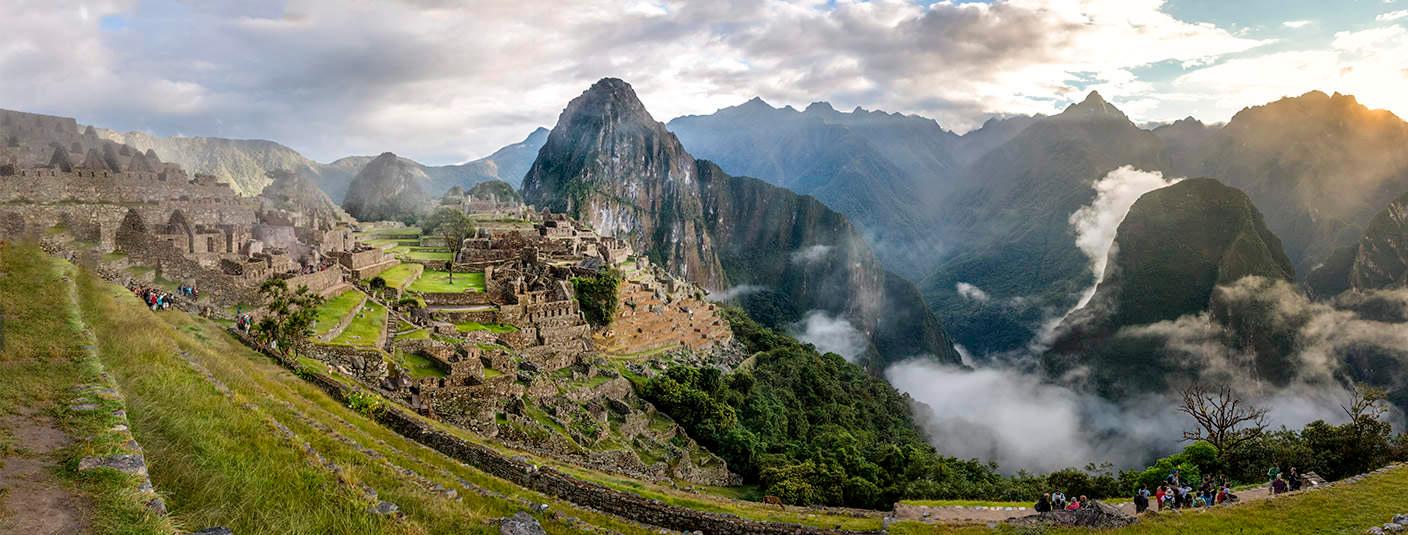
Luxury Machu Picchu Tours
Experience one of the world's greatest wonders exactly how you want to with our private Machu Picchu tours. Hidden in a dramatic landscape where the Andes mountains meet the Amazon basin, the ancient city of Machu Picchu is waiting for you. Shrouded in mystery and built to perfection by the Inca Empire over 500 years ago, your luxury Machu Picchu experience will include a train ride or an unforgettable trekking expedition through the scenic Sacred Valley. Step foot into this UNESCO World Heritage site with an expert, local, English-speaking guide and discover its fascinating oral history.
Personalized service
Private tours that cater to you.
Handpicked hotels
Luxury hotels with superior attention.
5000+ testimonials
20+ years of amazing reviews. Read them here .
Fully Customizable Tours
Your personal Peru travel advisor is dedicated to customizing your Machu Picchu trip how you prefer. Browse our wide selection of luxury Machu Picchu tours below, all feature a visit to the iconic Inca citadel and tour of Machu Picchu. Contact us to plan your Machu Picchu experience complete with luxury accommodations, private transfers, and local, English-speaking guides from start to finish.
Book With Confidence
Postpone your trip at no cost up to 30 days prior with zero fees with open dates. Learn more.
Machu Picchu Tours
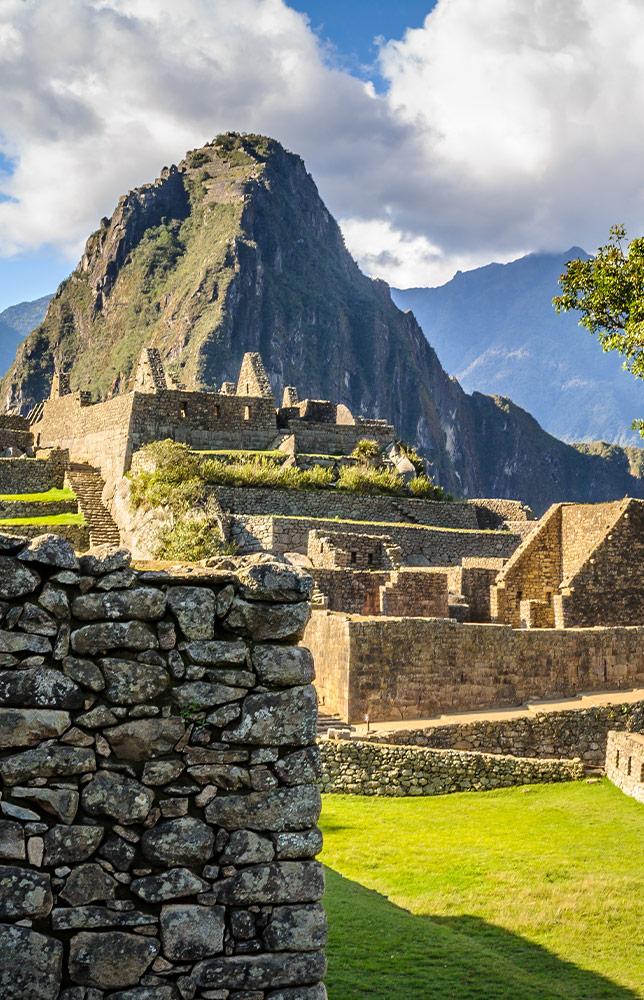
Machu Picchu Classic
Cusco, Sacred Valley & Machu Picchu
Immerse yourself in the history of Cusco, the lush scenery of the Sacred Valley, and the ancient Inca ruins of Machu Picchu with one week in Peru.
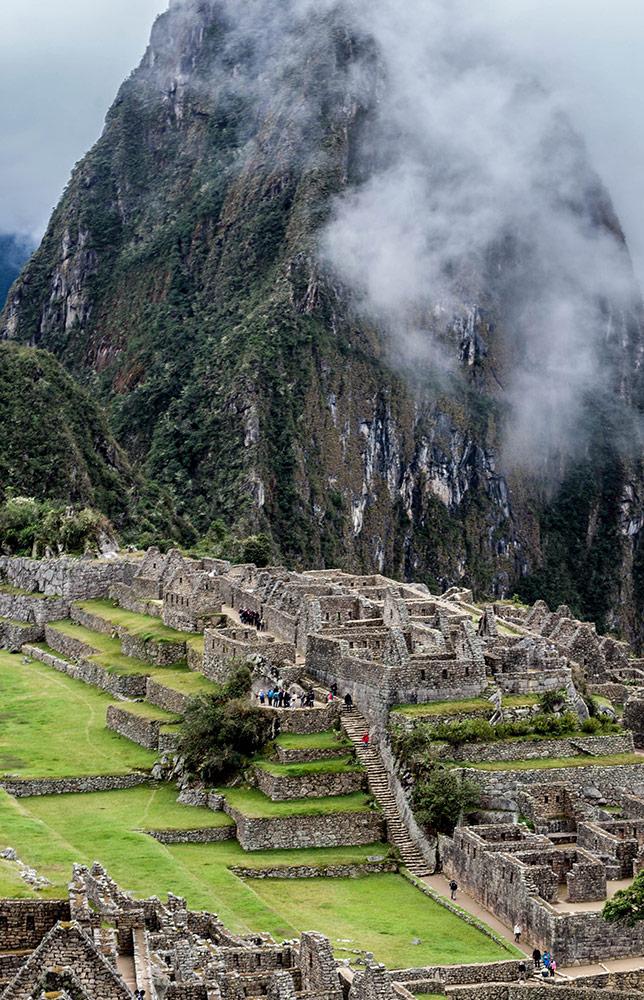
Machu Picchu Express
See the world heritage sites of Cusco, the Sacred Valley, and tour Machu Picchu on this expedited version of our Machu Picchu Classic.
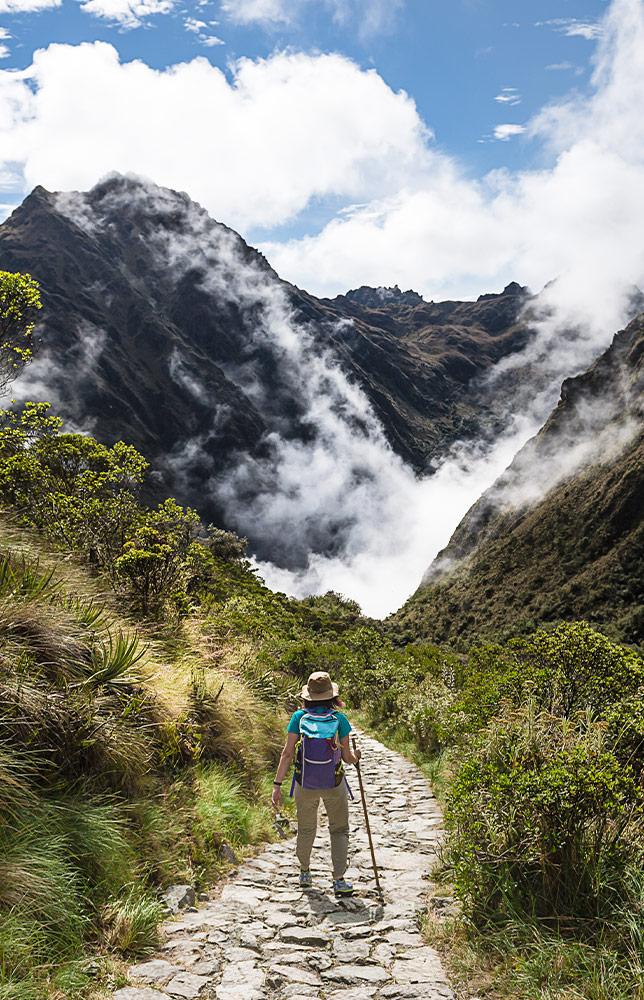
Cusco & Classic Inca Trail
Cusco, Inca Trail, Sacred Valley & Machu Picchu
Travel in the footsteps of history by hiking the iconic Inca Trail to the UNESCO world heritage site of Machu Picchu.
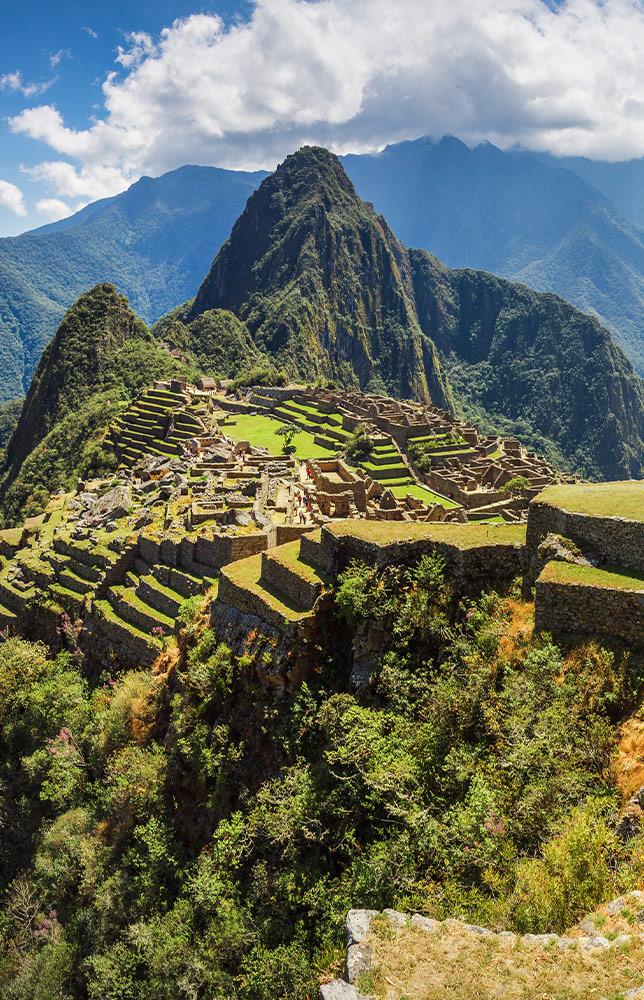
Andean Highlights
Colca Canyon, Cusco, Lima, Machu Picchu & Titicaca
Experience the highlights of the Peruvian Andes by visiting ancient ruins, colonial cities, and floating islands on Lake Titicaca.
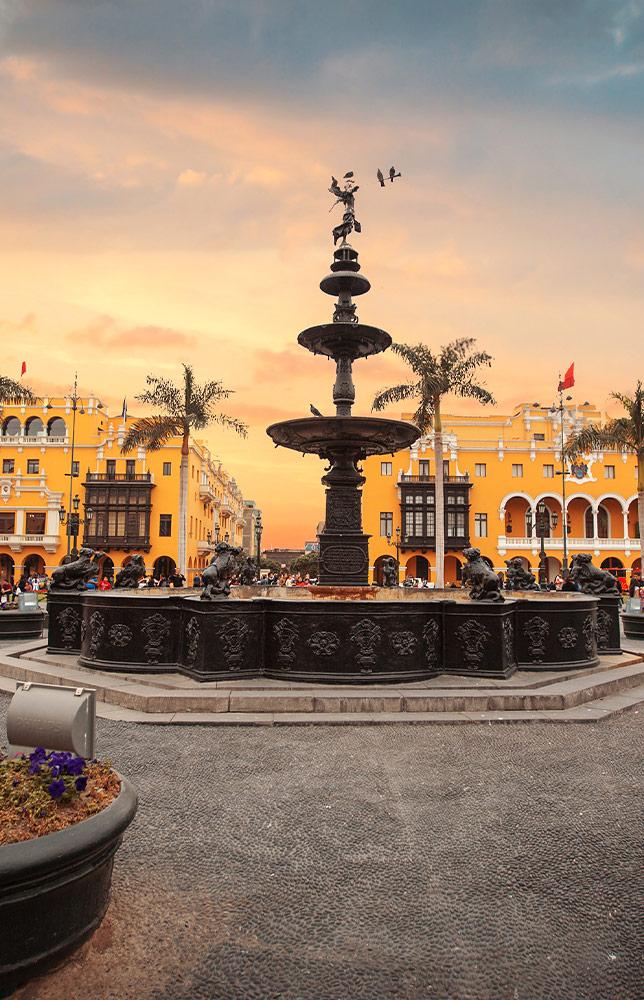
Cusco, Machu Picchu & Lima
Cusco, Sacred Valley, Machu Picchu & Lima
Explore Lima's UNESCO sites and iconic attractions, then journey to the ancient Inca citadel of Machu Picchu. Marvel at stunning architecture and rich history with this unforgettable tour.
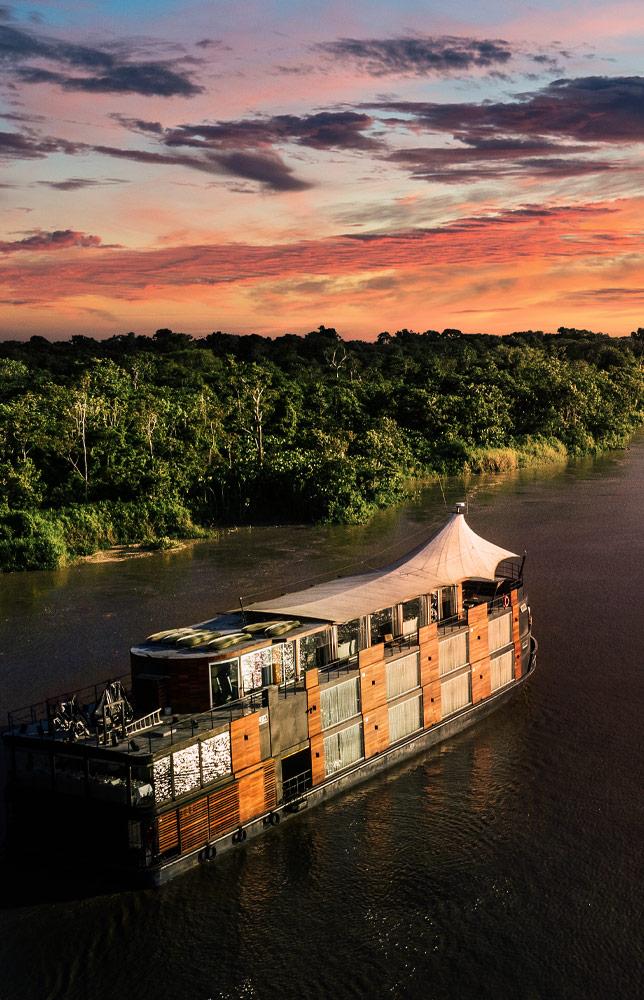
Luxury Amazon Cruise and Machu Picchu
Cusco, Sacred Valley, Machu Picchu & Amazon Cruise
From the clouds forests of Machu Picchu to the weaving Amazon River, this itinerary will show you Peru's best natural and ancient sites.
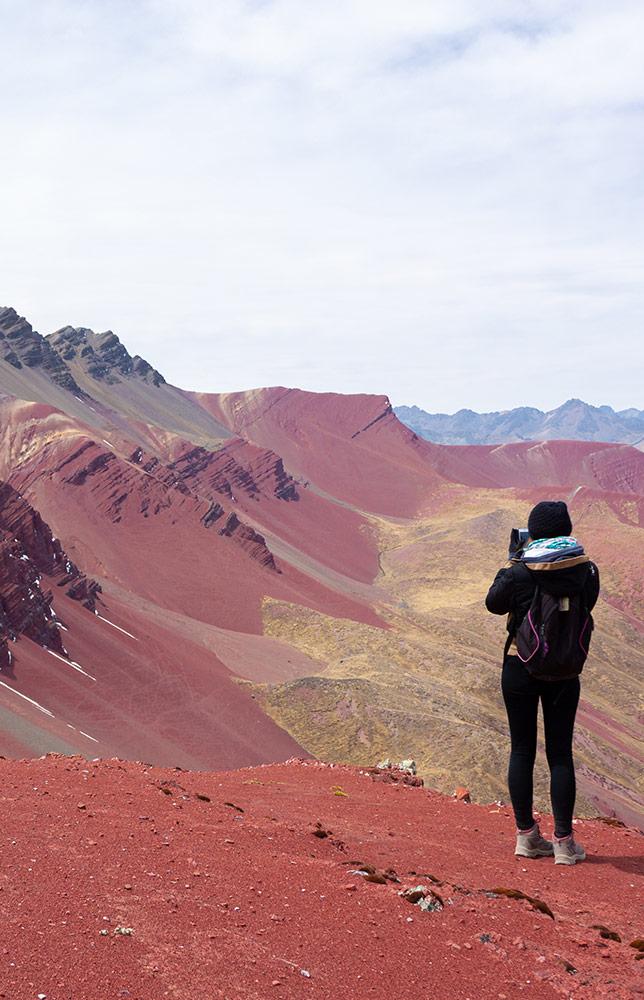
2-day Inca Trail and Rainbow Mountain
Cusco, Sacred Valley, 2-day Inca Trail, Rainbow Mountain & Machu Picchu
Walk along the famous Inca Trail and watch the sunrise over Machu Picchu. Then take a private tour to Vinicunca, also known as the beautiful Rainbow Mountain.
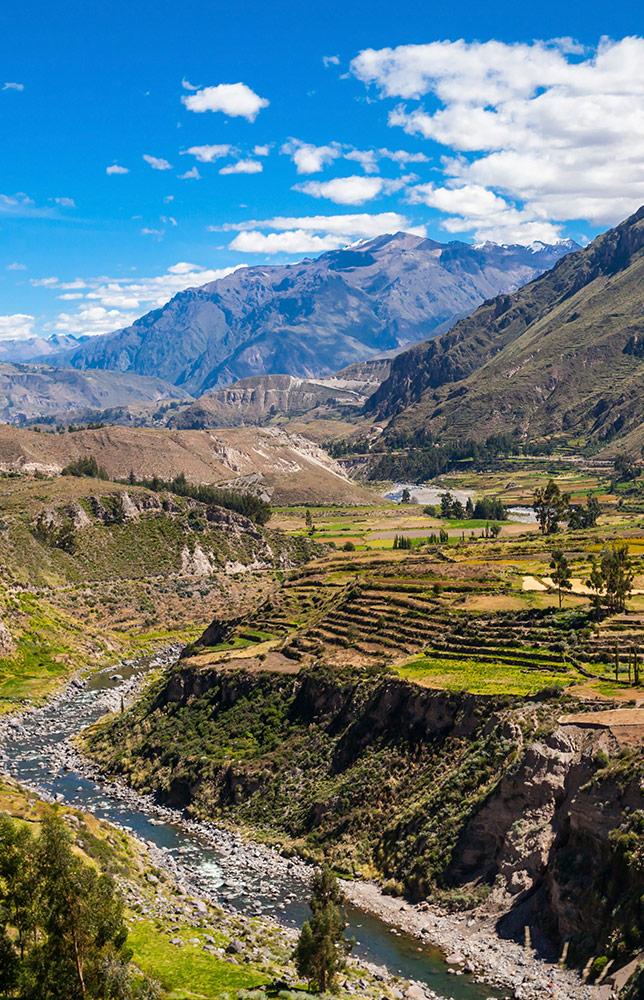
The Great Regions of Peru
Amazon, Colca Canyon, Cusco, Lima, Machu Picchu, Nazca & Titicaca
Experience the full breadth of Peru and Machu Picchu in our most complete Peru tour package. Travel through multiple national reserves, visit world heritage sites, colonial cities, the Amazon rainforest, and the capital city of Lima.
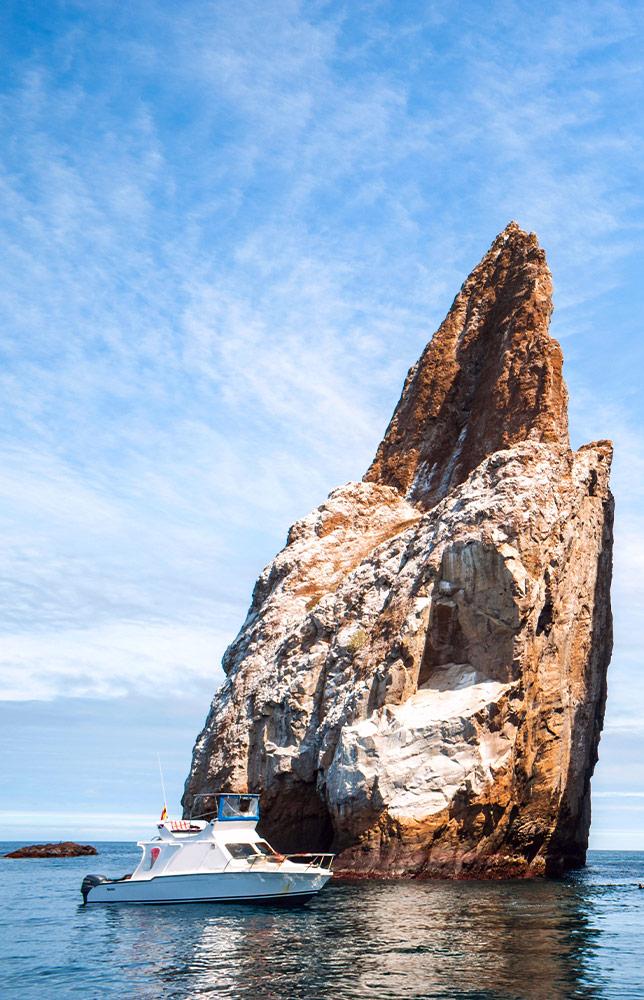
Galapagos & Machu Picchu
Galapagos, Cusco, Sacred Valley & Machu Picchu
Our Machu Picchu and Galapagos Tours allow you to explore two UNESCO World Heritage sites in one phenomenal trip. Explore unique wildlife on a luxury Galapagos cruise, then visit must-see places in Peru.
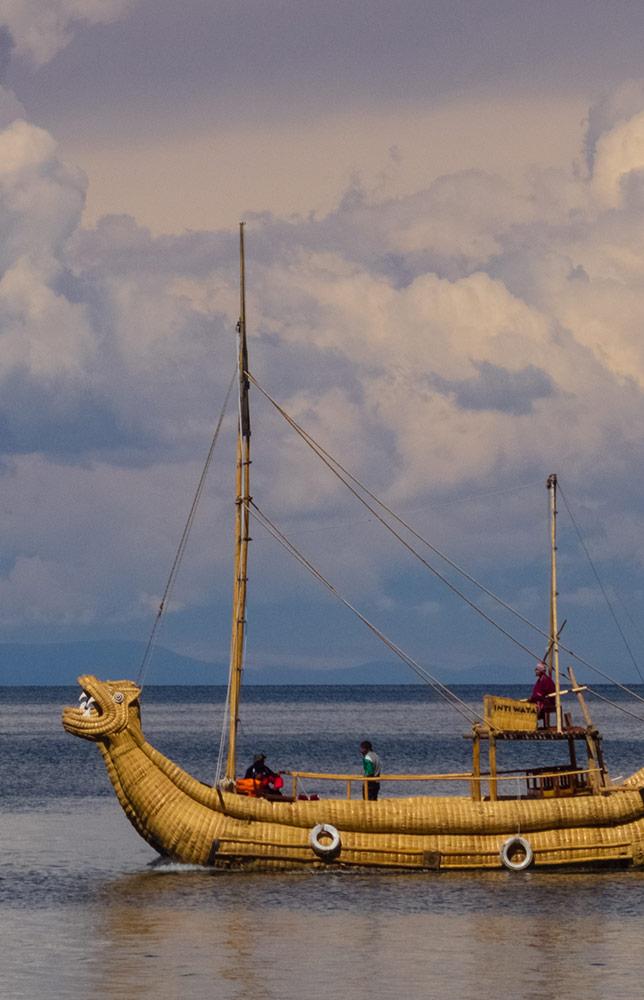
Titicaca & Machu Picchu
Cusco, Sacred Valley, Machu Picchu & Titicaca
Explore the archeological sites of the Andes. Start in Cusco and the Sacred Valley, then visit the citadel of Machu Picchu. Finish at a luxury lodge on the breathtaking Lake Titicaca.
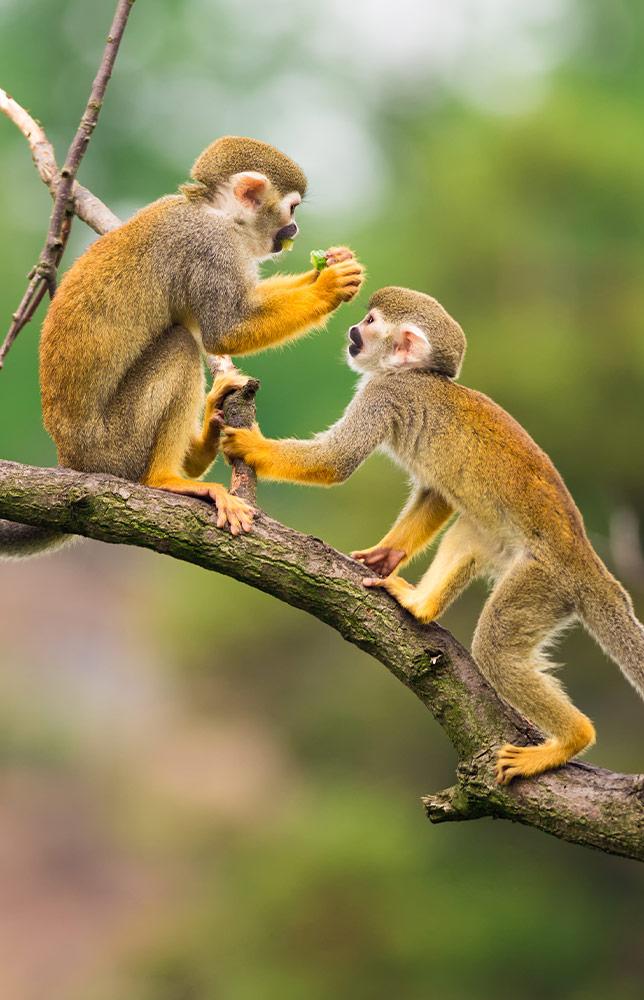
Amazon to Machu Picchu
Amazon, Cusco, Sacred Valley & Machu Picchu
Tour through the Peruvian Amazon rainforest with a naturalist guide then explore Cusco, the Sacred Valley, and the famous Machu Picchu.
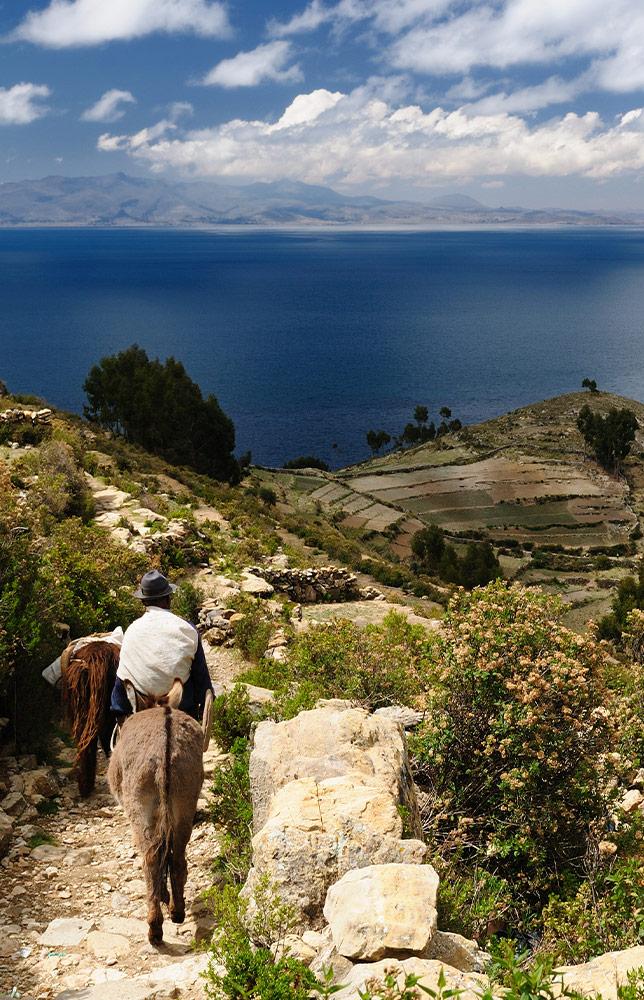
Mystic Amazon & Andes
Amazon, Cusco, Sacred Valley, Machu Picchu & Titicaca'
Explore the Amazon rainforest in Puerto Maldonado before flying to Cusco to discover Machu Picchu for yourself. Then, admire the scenery and cultures of Lake Titicaca.
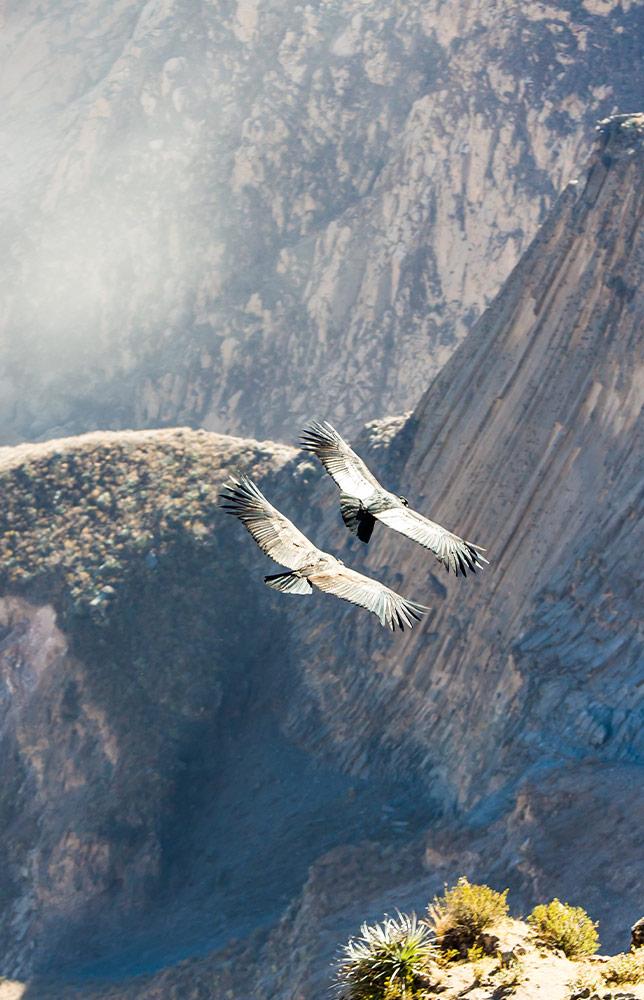
Colca Canyon & Machu Picchu
Arequipa, Colca Canyon, Cusco, Lima & Machu Picchu
Immerse yourself into both the natural and city life of the Andes. Explore Arequipa, soak in hot springs in Colca Canyon, take a train ride through the lush Sacred Valley to Machu Picchu, and discover ancient ruins in Cusco.
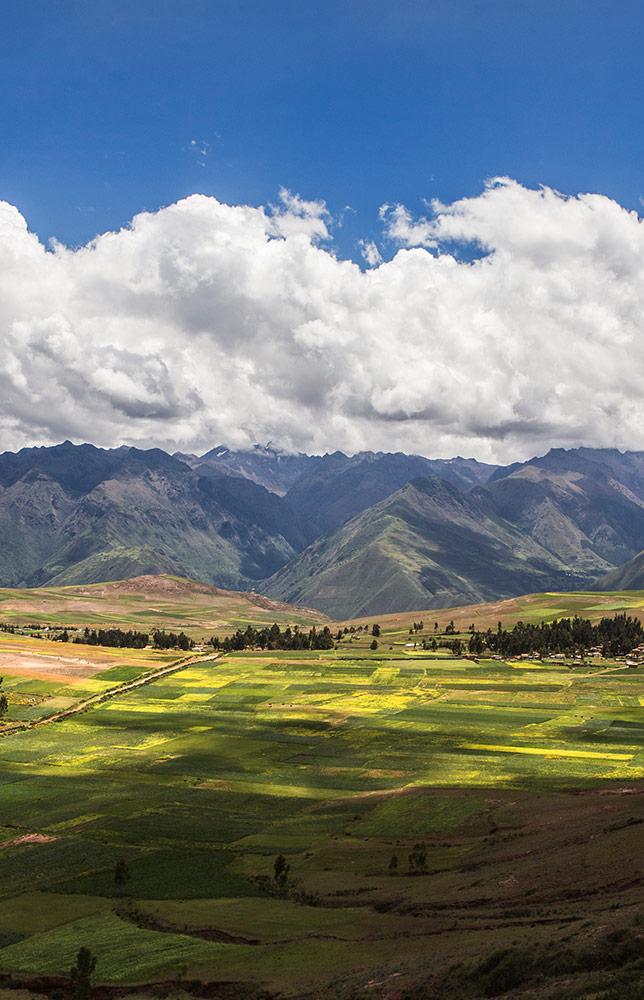
Sacred Valley highlights & Machu Picchu
Enhance your time in the Andes with 2 consecutive days of Machu Picchu tours. Explore the UNESCO world heritage site in detail after visiting the highlights of Cusco and the Sacred Valley.
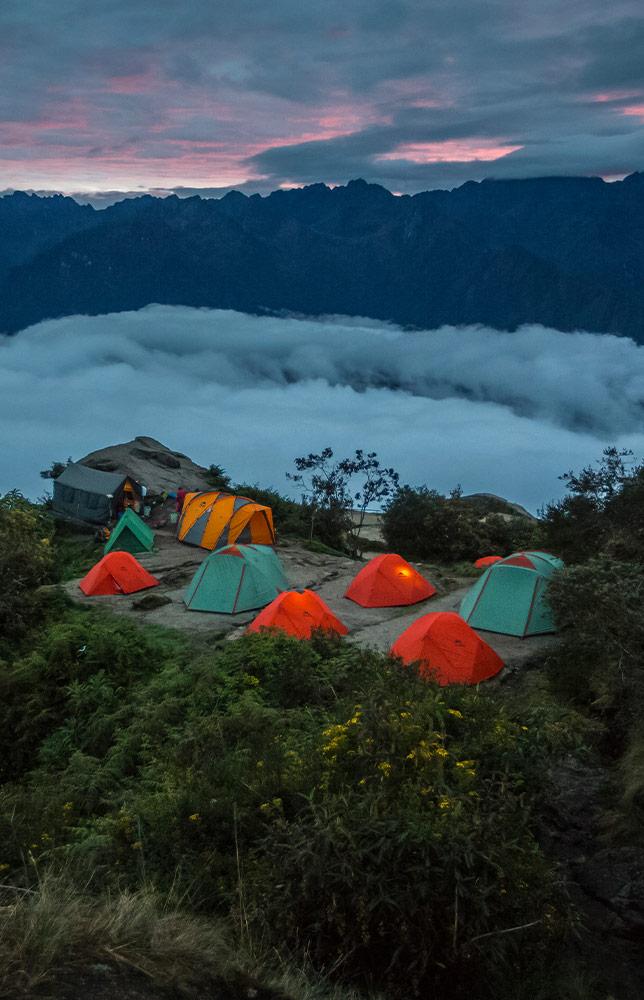
Inca Trail & Machu Picchu
Trek the Classic 4-day Inca Trail to Machu Picchu in comfort with a guide, chef, and porters.
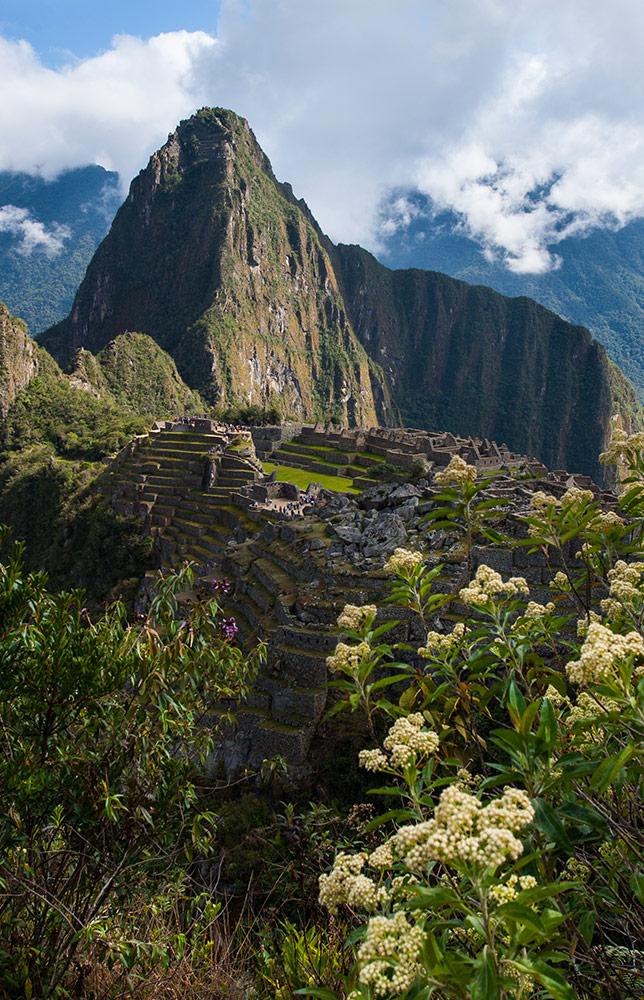
2-Day Inca Trail to Machu Picchu
Hike the Inca Trail to the Sun Gate at Machu Picchu in less time than the Classic 4-day Inca Trail. Spend the night in a luxury Machu Picchu hotel instead of overnight camping.
What to see in Machu Picchu
Discover Peru's most emblematic landmark, the “Lost City of the Incas”. You'll learn about the history, Incan mythology, and the mystery that surrounds this breathtaking Inca ruin atop the mountains: Machu Picchu.
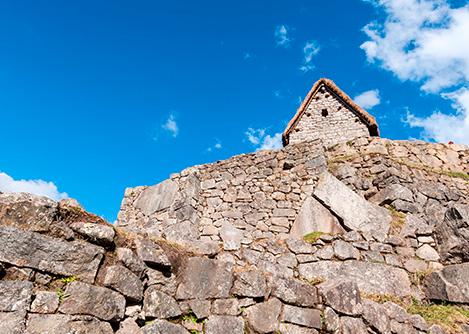
The guardhouse is one of the first attractions you’ll visit on your Machu Picchu tour. This thatched-roof hut was once used by soldiers for its advantageous viewpoints. Travelers today will find this to be one of the best spots to snap their first panoramic photos of Machu Picchu.
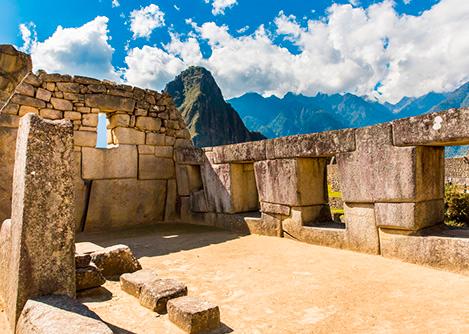
Temple of The Three Windows
The Temple of the Three Windows is composed of three trapezoidal-shaped rock windows. The sunrise would shine through these perfectly engineered windows, illuminating the main square or “Sacred Plaza” in golden light.
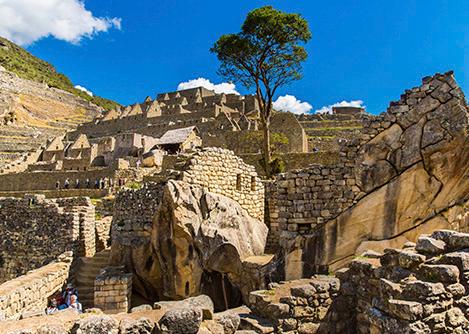
Temple of the Condor
With a little bit of imagination, you’ll stand before the Temple of the Condor and see how the carved rocks look like the outstretched wings of an Andean Condor.
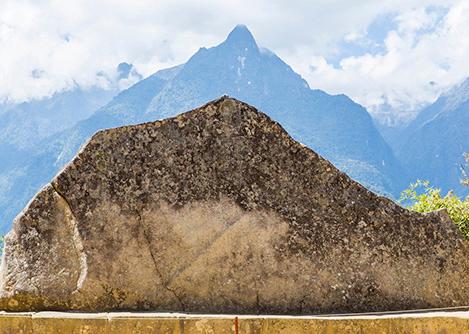
Sacred Rock
Stand before the Sacred Rock during your Machu Picchu tour and see if you can match the contours of the distant mountains with the ones carved into the boulder before you. Maybe you’ll feel its energy, maybe you’ll admire the view, or maybe you’ll continue onwards to the checkpoint for a Huayna Picchu hike.
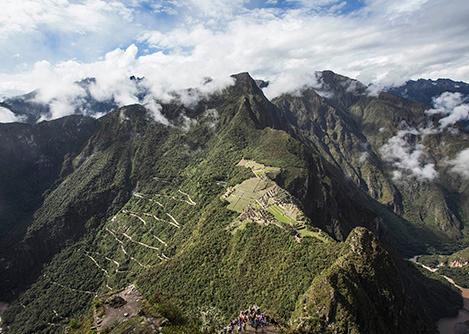
Huayna Picchu
For unbeatable views of Machu Picchu from above, hike Huayna Picchu and also explore an additional set of ruins on your way to the summit. Entrance to Huayna Picchu requires a special pass, so be sure to book in advance before they sell out.
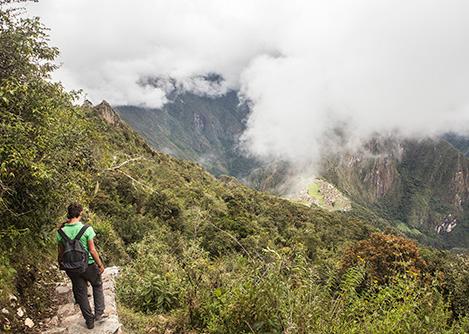
Machu Picchu Mountain
A popular alternative to hiking Huayna Picchu, the hike up Machu Picchu Mountain will also reward you with stunning overhead views of Machu Picchu and the surrounding landscapes. Like Huayna Picchu, entrance to Machu Picchu Mountain also requires a special pass so be sure to book in advance before they sell out.
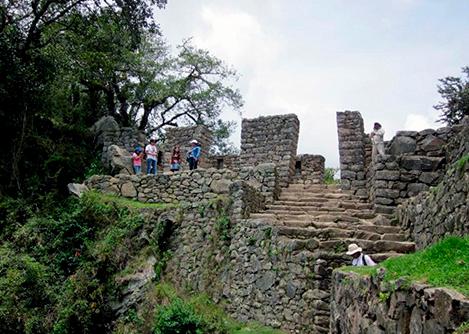
The Sun Gate or Inti Punku is the original entrance to the Machu Picchu citadel and is the one through which hikers on the Inca Trail enter. In days of old, guards would stand sentry at the Sun Gate to welcome the royal visitors into Machu Picchu. On the solstice, the sunrise lines up perfectly with the Sun Gate making it not only an impressive lookout point to Machu Picchu but also an example of the Incas’ ingenious engineering.
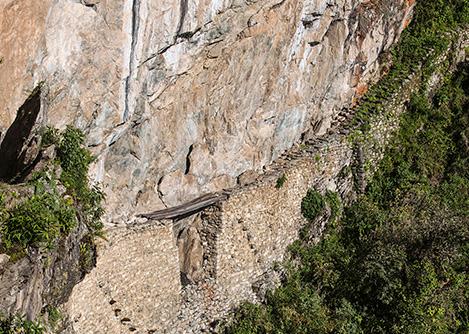
Inca Bridge
The Inca Bridge is a site located within the Machu Picchu citadel. Designed as a secret exit (or entrance) for the Inca army, a narrow stone pathway leads to a wooden plank bridge that can be removed. Below, the path falls into a 1,900-foot pit that would be sure to halt any foes attempting to gain access to the Machu Picchu citadel. Today, you cannot cross over it but, with additional time at Machu Picchu, you can hike, see it first hand, and understand why the “Lost City” remained undiscovered by the Spanish conquerors.
Customize Your Trip
Adventure tours.
Ask your Inca Expert travel advisor how you can make your journey to Machu Picchu even more adventurous by reserving a spot on the iconic 4-day or 2-day Inca Trail to Machu Picchu, or one of the on-site hikes at the citadel. Aerial views of the UNESCO World Heritage site from the peak of Huayna Picchu Mountain and Machu Picchu Mountain will be the highlight of your trip on these epic half-day hikes.
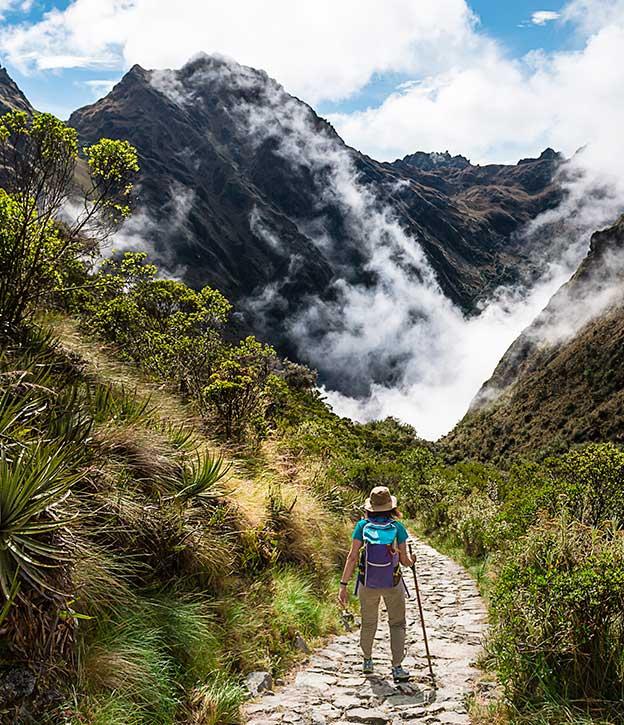
Our Inca Expert travel advisors will help you plan a trip that is perfectly tailored to your interests and preferences.
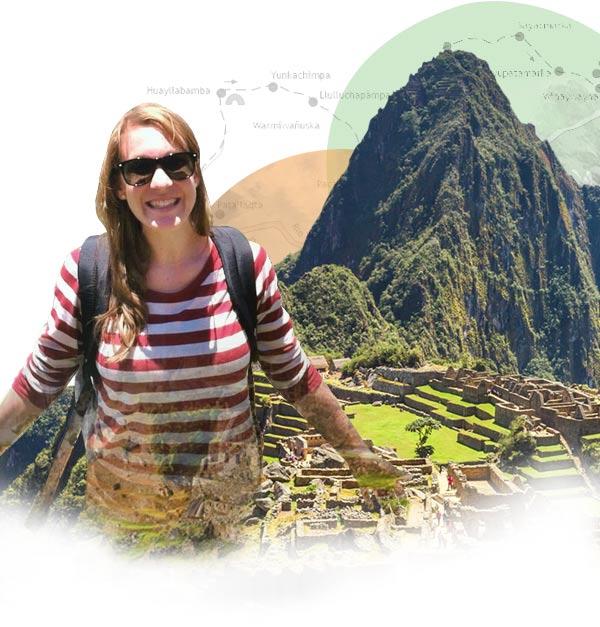
Peru Highlights
Amazon rainforest.
The Amazon Rainforest is the largest jungle in the world. You’ll see species of plants, birds, fish, mammals, and insects as you relax in a comfortable all-inclusive lodge near the Tambopata Research Center in Puerto Maldonado. Luxury Amazon River cruises from Iquitos are an alternative option for jungle exploration done in style.
Hike the famous Inca Trail to the Sun Gate at Machu Picchu. This 26-mile hike through idyllic Peruvian landscapes only permits 500 people per day, so talk with your Inca Expert travel advisor today to book in advance.
Visit Cusco, the capital of the Inca Empire and gateway to Machu Picchu. Tour through historical sights and Inca temples or delight in gourmet food at some of the top restaurants in Cusco.
Lake Titicaca
Lake Titicaca is a cultural and natural wonder in Peru. For impressive sunsets, a visit to the Uros and Taquile floating islands, and relaxing luxury hotels, head to Lake Titicaca.
Sacred Valley
The Sacred Valley has unending sites to behold and things to do. Visit the Maras Salt Mines, Ollantaytambo ruins, Pisac market, begin the Inca Trail, or simply relax at your scenic Sacred Valley hotel with unmissable views.
It’d be a mistake to miss out on Lima’s top restaurants and UNESCO World Heritage sites. The capital city is home to the most exclusive restaurant in Peru: Central. You can also tour through museums, art galleries, and more in the vibrant city of Lima.
Nazca Lines
The mysterious Nazca Lines are giant geoglyphs drawn into the desert floor. Soar above them to see the hummingbird, the astronaut, the spider, and many more!
Arequipa is a refreshing mix of colonial architecture, Peruvian history, and natural beauty. Visit the historical center, Santa Catalina Monastery, or various lookout points in the city for views of El Misti Volcano. Then, spot Andean condors soaring through Colca Canyon as you continue your tour through scenic Peru.
Machu Picchu Hotels
Your Inca Expert travel advisor will customize your itinerary so that you’re fully rested for an unforgettable day discovering Machu Picchu. Our Top Machu Picchu Hotel recommendations include:
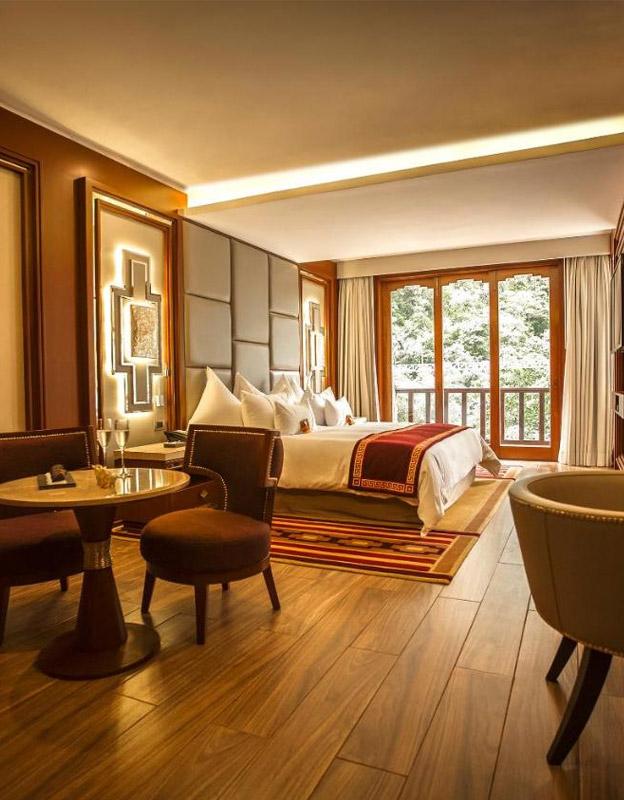
Avenida Hermanos Ayar Mz 1 Lote 3, Aguas Calientes
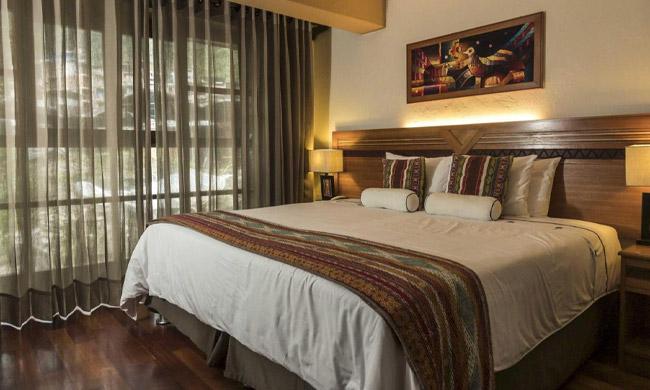
Avenida Imperio de los Incas 608, Aguas Calientes
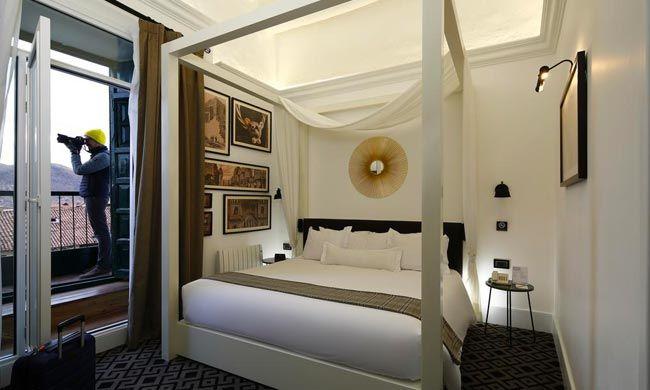
Prolongacion Imperio de Los Incas E - 34, Aguas Calientes
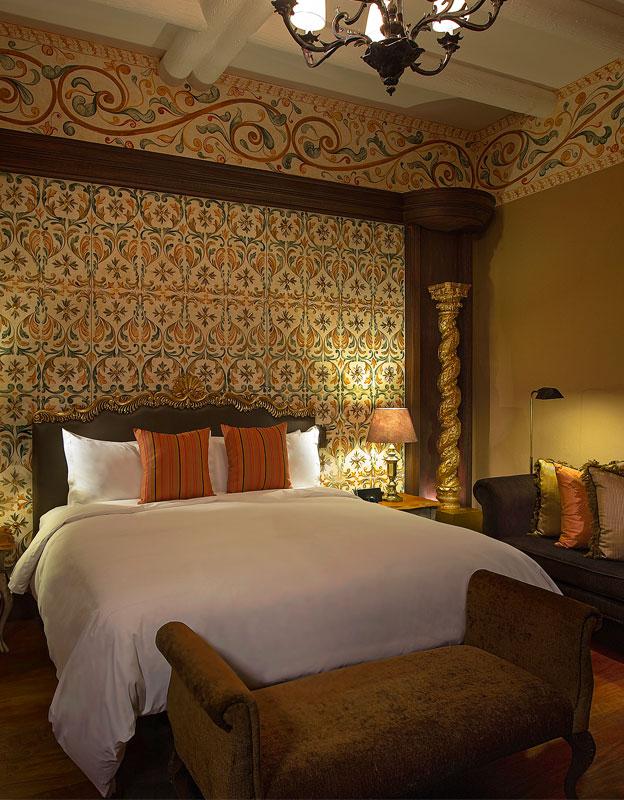
Premier properties with character
What our clients say.
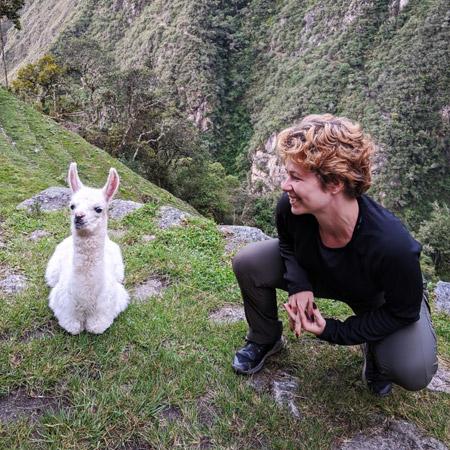
" All in all we had an absolutely amazing time and the trip completely blew my expectations out of the water. The hotels were all fabulous with beautiful views. Thank you sincerely for the trip of a lifetime! "
Aggie Szymanska CA, USA Traveled to: Lima, Paracas, Cusco, Machu Picchu, Sacred Valley
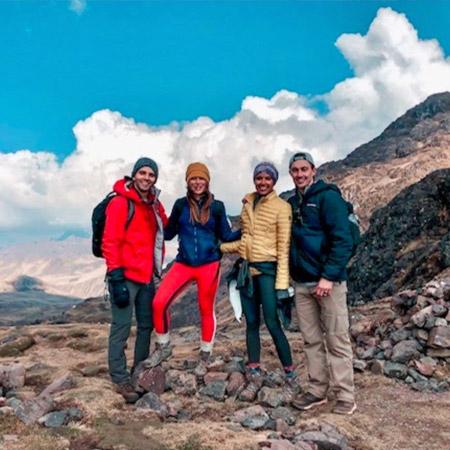
" We wouldn’t stop talking about how well executed and planned everything was. I personally loved the Inca trail addition and I am so glad you gave that to us as an option. The hike to Huayna Picchu was also a group favorite. "
Natasha Mehta & friends NY & PA, USA Traveled to: Cusco, Lares + 2-day Inca Trail Trek, Machu Picchu
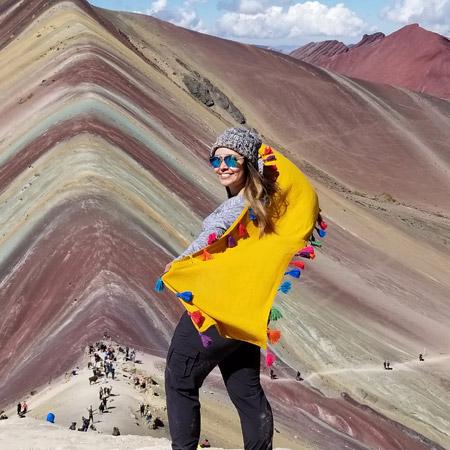
" It exceeded my expectations and I loved the people I met there. The hikes were so well organized, food was amazing, and the guides were super caring even getting the cooks to make a cake for me on my birthday on the Lares trek. "
Araceli Gutierrez MO, USA Traveled to: Lima, Cusco, Lares, Machu Picchu, Rainbow Mountain
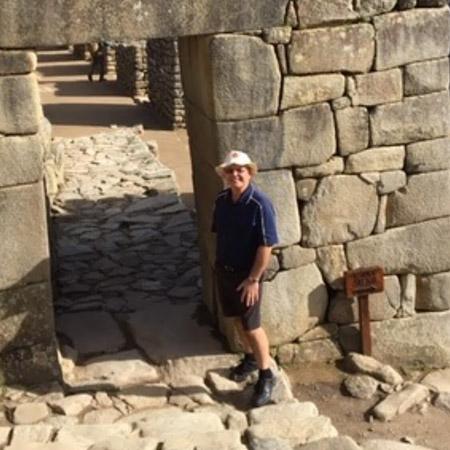
" Based on the trip you organized, the historical knowledge, the people, the food, the culture and the natural beauty of Peru, it was simply the best trip I’ve ever taken. This trip will forever be in my memory. "
Gilles Verrier MB, Canada Traveled to: Lima, Puerto Maldonado, Cusco, Sacred Valley, Lares Trek, Machu Picchu
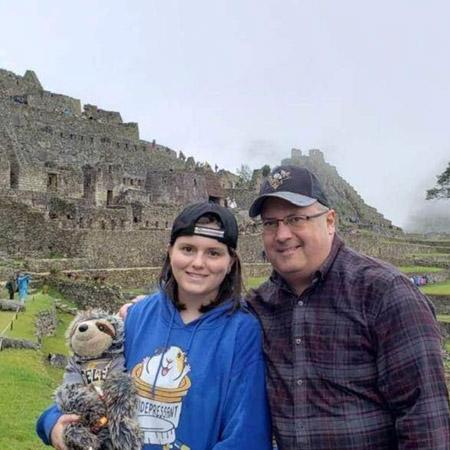
" Our trip to Peru was nothing short of magnificent. As for our favorite part, we loved it all. Machu Picchu was everything we thought it would be and more. We had a wonderfully successful trip to Peru! "
Steven Kopelic PA, USA Traveled to: Amazon, Sacred Valley, Machu Picchu, Cusco
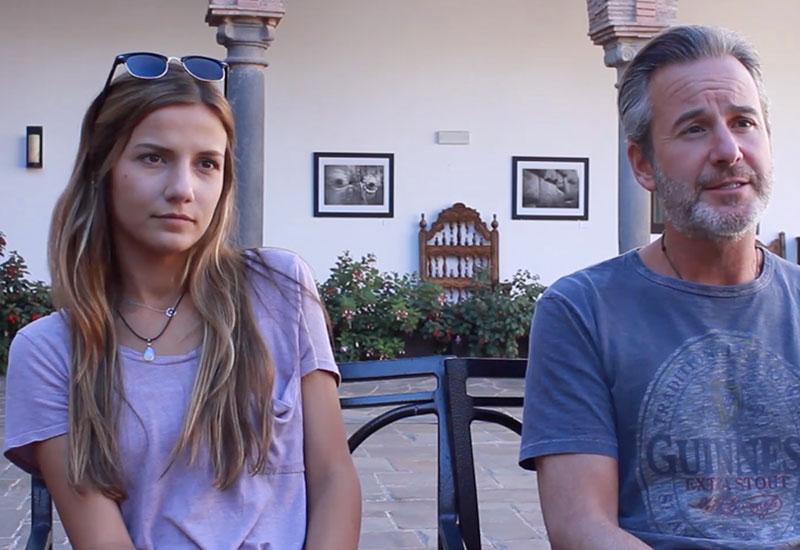
Do I have to hike Machu Picchu?
No. Most travelers arrive at the Machu Picchu citadel by way of the train from Cusco or the Sacred Valley. The train takes you to Aguas Calientes, a town at the base of Machu Picchu. Here, a short bus ride brings you to the main entrance. Your tour will be a walking tour of the site.
What are Machu Picchu's hours of operation?
The Machu Picchu ruins are open from 6:00 a.m.-5:30 p.m. Monday-Sunday including holidays.
What are the best hotels near Machu Picchu?
Machu Picchu hotel options are abundant in Aguas Calientes, the gateway town to Machu Picchu. Our Top Machu Picchu hotels are:
- 5-Star Inkaterra Machu Picchu Pueblo Hotel
- 4-Star El Mapi
- 3-Star Casa Andina Standard Machu Picchu
How many days should I spend at Machu Picchu?
1-2 days at Machu Picchu is the ideal amount of time to see the archaeological site. Leisurely travelers can opt for two days and one night by arriving into Aguas Calientes by train, staying overnight in a Machu Picchu hotel, and touring the ruins the next day before returning to Cusco. Those short on time can do a 1-day Machu Picchu tour starting and ending in Cusco, but allot 16-17 hours this day for your whirlwind adventure.
What is the duration of a guided tour of Machu Picchu?
Your privately guided Machu Picchu tour will be 2 hours long. The Machu Picchu archaeological site operates on a one-way circuit that leads visitors to the exit of the ruins at the completion of the tour. Re-entry is not permitted with a Machu Picchu general entrance ticket.
What points of interest will I see on my Machu Picchu tour?
Your private tour of Machu Picchu will introduce you to the Guardhouse, agricultural zone, fountains, main gate, temple zone, tower, Temple of the Three Windows, astronomical observatory, Sacred Rock, Group of Three Doorways, royal enclosures, Temple of the Condor and storage area. Views of the west agricultural zone and main square will be viewed while walking through the site.
When is the best time to visit Machu Picchu?
The best time to visit Machu Picchu is in the months between April and September. The dry season in the Andes lasts from May to August, offering sunnier skies, drier weather, and the best views of the Machu Picchu ruins. Shoulder seasons in April/May ad September/October offer views of Machu Picchu with fewer crowds and good chances of pleasant weather.
Do I need a tour guide for Machu Picchu?
Yes. As of 2019, it is compulsory to enter the Machu Picchu citadel with a guide.
How long is a Machu Picchu tour?
The duration of a Machu Picchu tour is approximately 2 hours. The ruins operate on a one-way circuit that leads from the entrance to the exit of the ruins. Contact your Inca Expert travel advisor to customize your trip with more time at the ruins by including an additional entrance ticket or hiking permit.
How strenuous is a Machu Picchu tour?
Easy-Moderate. With well-marked paths for visitors to follow and railings where there are steep steps, touring the Machu Picchu citadel is doable for most able-bodied travelers. All visitors must walk up and down stone steps and along uneven paths, so those with disabilities and/or joint pain should let their Inca Expert travel advisor know ahead of time of any bodily limitations. Elderly and disabled visitors can use hiking poles with protective rubber tips.
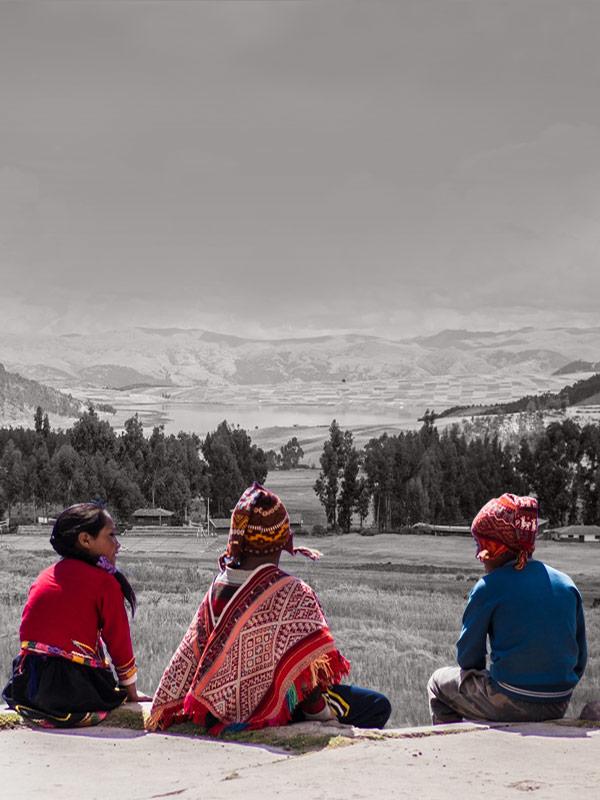
Not quite sure? Explore all our best selling packages
Book with confidence.
Postpone your tour with zero cost up to 30 days prior to arrival with open dates

Animals At Machu Picchu - What To Look Out For On Your Visit
There are some great chances of seeing animals at machu picchu, this guide will help you know what to look out for.
Nestled high in the Andes, Machu Picchu is more than just a UNESCO World Heritage site and one of the New Seven Wonders of the World. It has always been high on my list to hike the Inca Trail to Machu Picchu. So when we finally got to do it, I was beyond excited.
Visiting Machu Picchu and hiking the Inca Trail was a dream come true.
It’s also home to lots of wildlife that has adapted to the stunning, rugged terrain of this ancient Incan city. Powdery stone and dirt paths wind amidst the ruins, trails that are used by curious visitors and the many four-legged residents that call this place home.
Here’s a sneak peek at the animals you might cross paths with when you visit!
What Animals At Machu Picchu Might You Be Able To See
Before we get into the specifics, it’s worth noting that Machu Picchu is normally visited from Cusco. It’s quite easy to get to Cusco after flying to Lima.
Each visit to Machu Picchu is already a unique experience. The possibility of encountering its varied fauna adds a thrilling layer to your adventure.
While standing at the Temple of the Sun, a soaring Andean Condor might draw your gaze upwards, reminding you that Machu Picchu’s wildlife is as much a part of its allure as the ruins themselves. These memories are the best souvenirs to take home .
Before you pack your bags:
Let’s talk about an important part of your trip: insurance. Finding the right travel insurance can be challenging. This is where SafetyWing comes into play, offering insurance products for nomads, remote workers, digital nomads, and travellers alike.
SafetyWing introduces a refreshing take on travel and health insurance, designed with the flexibility and coverage needed by those who live their lives on the move.
Animals At Machu Picchu – Mammals
From the smallest critters to the more sizable, each mammal has adapted in ways to be able to live in the diverse ecosystems of the Andes. Keep your eyes open and your camera ready, as you never know when you’ll have an encounter with these creatures.
Llamas and Alpacas
You’re very likely to encounter these woolly wonders within the ruins. They are the iconic emblems of Andean culture, and their presence adds a sense of timelessness to the experience.
Whether they are grazing or just strolling by, take a moment to appreciate their serene beauty and the important role they play in local culture.
Imagine a rabbit had an unexpected but delightful meeting with a chinchilla, and the result was a Viscacha. These photogenic creatures are a joy to spot as they frolic among the stones. They are active during the day, so keep an eye out for them as you explore.
Sleek and shy, agoutis are known to forage around the site’s lush flora, blending in nearly perfectly with their surroundings. But their distinctive orange teeth stand out, giving away their presence. If you’re lucky, you may spot one scurrying by with a tasty treat in its mouth.
Spectacled Bears
They are Machu Picchu’s biggest residents, and while they keep to themselves, knowing they’re around is just incredible. These adorable bears are named for the distinctive white markings around their eyes, and spotting one can be a rare occasion. Keep your camera ready, as you never know when you might get lucky.
Although sightings are very rare and usually a fleeting shadow across the rocks, the presence of these big cats adds an element of wild mystique. Keep your eyes peeled and your camera ready, as you never know when you might catch a glimpse of these elusive creatures.
Andean Foxes
They are elusive but not impossible to find. A bit of patience during quiet moments might reward you with a glimpse. These small, bushy-tailed foxes are known for their curious nature and can be quite entertaining to watch as they go about their day. These are some of the animals at Machu Picchu I would’ve loved to encounter.
More sociable than their fox counterparts, coatis often roam in small groups. They’re remarkable climbers and can make for some entertaining viewing. Be careful, as these cheeky things love stealing stuff from your bags. These are animals at Machu Picchu you’re likely to spot.
Andean Deer
Later in the day, these majestic creatures might be seen grazing along the slopes or peering curiously from denser areas. As the day cools and the crowds thin, you may catch a glimpse of these graceful animals in their natural habitat.
River Otters
Look out for these playful creatures in the waters around Machu Picchu. They bring a touch of whimsy to the inspiring scenery. If you keep an eye out, you might just catch them floating lazily downstream or splashing in the pools. It’s a reminder that nature is full of surprises and delights, even in the most unexpected places.
Planning a trip? These are our favourite Travel Resources .
Animals at machu picchu – reptiles.
Some find them fascinating, some find them creepy. I personally can’t decide what to think of reptiles. Anyway, here are the reptiles you may come across.
Andean Jergon Snake
This non-venomous snake sometimes sunbathes on the rocks. With its striking black and gold patterning, it makes for an interesting sighting. Don’t worry, it’s not interested in humans and will slither away if you get too close. Keep a respectful distance, and admire its beauty from afar.
Coral Snake
These snakes are highly venomous, but also incredibly shy. They’re very unlikely to be spotted and even rarer to be disturbed. Keep an eye out for them, but remember to keep your distance and let them go about their business undisturbed.
It’s a reminder that every creature at Machu Picchu plays an important role in the delicate balance of this ecosystem.
Spiny Whorltail Iguanas
Their names are as intriguing as their appearance. This is a rare species that would be a thrilling find for any reptile aficionado. With its spiny crest and vibrant colours, it’s a wonder to behold.
Keep an eye out for them sunbathing on the rocks or darting through the undergrowth.
Animals At Machu Picchu – Birds
While wandering in this fascinating area, don’t forget to look up. There are some awesome birds you might be able to see!
Andean Condor
With wingspans that can reach an astonishing 10 feet, these majestic birds are a sight to behold as they catch the thermal updrafts above the ruins. Keep an eye out for them soaring high above, or look for them perched on the highest points of the ruins.
A symbol of freedom and power, seeing an Andean Condor in flight is truly unforgettable.
Giant Hummingbird
The name says it all. It’s like a regular hummingbird, but big. Adding a delightful dash of colour and movement to the air. It’s one of the largest hummingbird species in the world, and its iridescent purple and green feathers make it a dazzling sight. Keep your eyes peeled for these tiny giants as they flit from flower to flower.
Andean Cock of the Rocks
This bird, which is also named Tunqui, is like a walking firecracker, with plumage that sports the brightest red you’re likely to see in the wild. They are known for their elaborate courtship rituals, and if you’re lucky, you may catch a glimpse of one performing its dance in hopes of attracting a mate. Keep an eye out for these fiery feathered friends on the forest floor or perched on low branches.
Masked Trogon
Their striking black-and-white masks add a layer of mystery to this already charismatic bird. With vibrant green and blue feathers, they are a welcome splash of colour in the green landscape. Keep an eye out for them perched high up in the trees, looking ever so regal.
Torrent Duck
Named for its preference for fast-flowing mountain rivers, this stocky waterfowl is also a part of the Andean landscape. Its bright plumage and unique beak make it stand out in the rushing waters, as it dives and swims against the current. Keep an eye out for this resilient and adaptable bird on your next river adventure.
Book A Tour To See Machu Picchu
While it is possible to visit Machu Picchu without a guide, I’d highly recommend one. Guides will tell you all about the fascinating history, and explain details you won’t pick up on by yourself. You might have already decided to add a Machu Picchu tour to your Peru itinerary.
An organised tour is a perfect way to learn all about the site with someone taking care of the logistics.
Check out THIS tour from Cusco, which includes all necessities.
Tips To Help You Spot More Animals At Machu Picchu
Sometimes wildlife is right in front of us, but we don’t see it because we’re not looking up, down, behind us, etc. Also, timing is everything. The early hours and late afternoons are typically when animals are most active.
- Stay Silent: The quieter you are, the more likely you are to witness the majestic creatures going about their day. Remember, we’re guests in their home.
- Follow Guide Instructions: Your guide knows best. They’re not only there to ensure your safety but to make sure you get the most out of your visit without disturbing the wildlife.
- Wear Earth Tones: Animals are less likely to be startled by natural, muted colours that blend into the environment.
- Keep Movements Minimal: Sudden gestures can scare animals away. If you spot something fascinating, try to contain your excitement and move slowly.
- Respect Animal Space: Even if an animal approaches you, it’s vital to keep your distance and avoid the temptation to touch or feed them. This is for their safety and yours.
- Stay Alert: Keep your eyes peeled and constantly scan the surroundings. You never know what you might see!
Ethical Considerations To Keep In Mind
You’re a visitor in their world, and the golden rule applies. Seeing wildlife is incredible, but watch with respect . Here’s a checklist for ethical wildlife encounters:
- Don’t touch: Whether it’s furry, scaly, or feathered, wildlife should never be handled unless it’s necessary for their conservation.
- Do not disturb habitats: That rock might look like a rock to you, but to a snake or a visiting puma, it might be home. Respect their spaces.
- Don’t feed wildlife: It can be dangerous for the animals, and it makes them expect food from humans, which can change their natural behaviour.
- Don’t leave anything behind: Litter is a hazard for many animals, and even a candy wrapper can lead to unintended implications for their health. Leave nothing but footprints and take nothing but memories.
- Be mindful of noise levels: Loud noises can easily startle animals and disrupt their natural behaviours. Keep your volume low and avoid screaming or shouting.
- Always follow the rules: Park regulations are put in place for a reason, to protect both you and the wildlife. Always adhere to them for a safe and ethical experience.
Animals At Machu Picchu – Final Thoughts
Your visit to Machu Picchu is not just a window into history or a challenge to tick off a bucket list. It’s an opportunity to witness the wonder of nature in a unique ecosystem. Engaging with wildlife responsibly adds to the experience.
Visiting Machu Picchu at the right time of year makes for a better overall experience.
To stand somewhere the past meets the present, and the human and natural worlds blend into a seamless whole, is unforgettable.
Take your time, keep your eyes peeled, and be ready for the magic that happens when you watch quietly and respectfully. Whether it’s the Andean condor soaring against a backdrop of clouds or the agile coati exploring the ruins, every species you encounter is a chance for a deeper connection to this extraordinary place.
Your encounter with the animals at Machu Picchu has the potential to foster a bigger appreciation for the delicate balance between conservation, exploration, and the beauty of the natural world.
For this and all the other wonders it offers, Machu Picchu remains a destination that not only captures your heart but also expands the horizons of your mind. Whether you are a seasoned traveller or an intrepid first-timer, this sanctuary of history and nature is an experience that will resonate within you long after you’ve left its mystic, cloud-topped heights.
The post Animals At Machu Picchu – What To Look Out For On Your Visit appeared first on Counting Our Footsteps .

Russia Travel Blog | All about Russia in English
- About our blog
- RussiaTrek.org
Sidebar →
- Architecture
- Entertainment
- RussiaTrek.org News

- Leave a tip to support us
- Support RussiaTrek.org via Boosty
- Support RussiaTrek.org via Hipolink
- Travel Guide to Ukraine
- Comments RSS
← Sidebar
Khanty-Mansi Autonomous Okrug from above
No comments · Posted by Sergei Rzhevsky in Nature , Photos , Regions
Khanty-Mansi Autonomous Okrug or simply Yugra is located in the heart of Russia – in the north of Western Siberia. It is the main oil and natural gas region of the country and one of the largest oil producing regions in the world (about 60% of Russian oil).
Yugra climate is equivalent to the climate of the Far North. This region is the native place of indigenous peoples of the Khanty and Mansi. Photos by: Slava Stepanov .
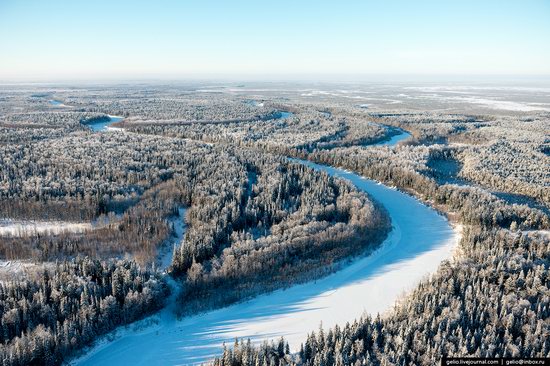
The confluence of the Irtysh River in the Ob.
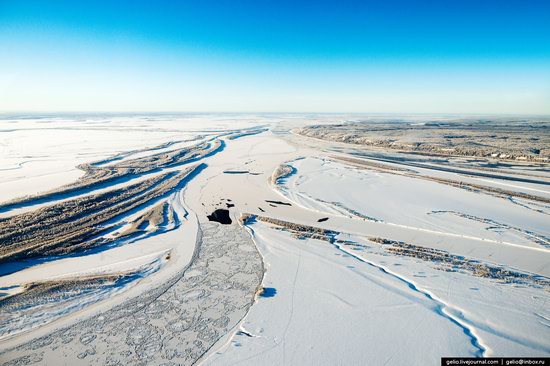
The Ob is the longest river in Russia and the second longest in Asia.
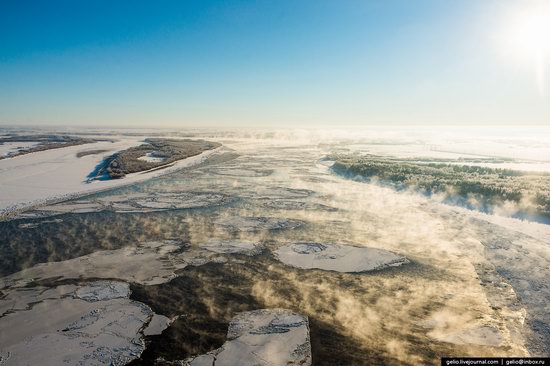
The Nazim River.
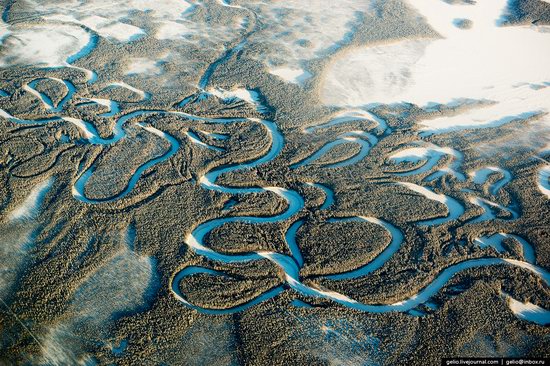
Swamps occupy about one third of the region’s area.
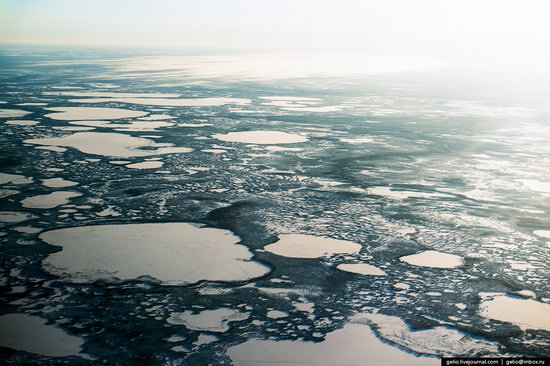
Khanty-Mansiysk – the capital of Yugra.
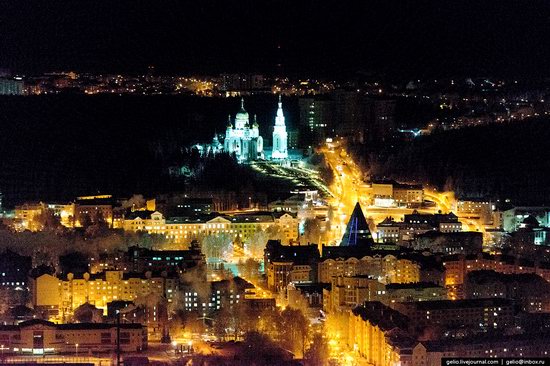
Surgut – the largest energy center in Russia, one of the first Russian cities in Siberia, founded in 1594. Surgut GRES-2 is Russia’s largest thermal power plant.
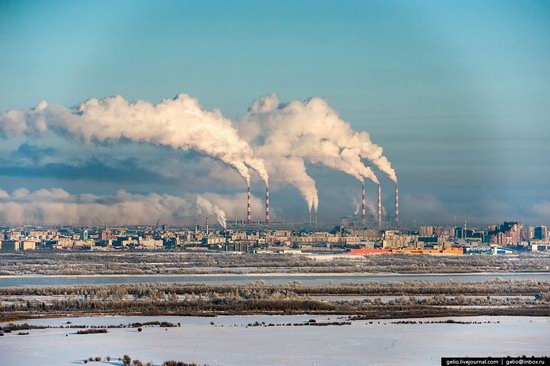
Yugra cable-stayed bridge across the Ob River – one of the longest in Siberia.
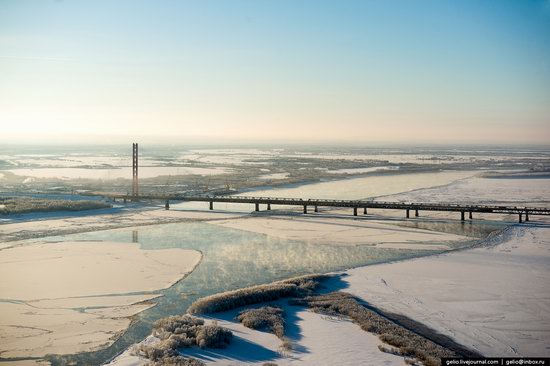
Nefteyugansk – the third largest city of the autonomous region.
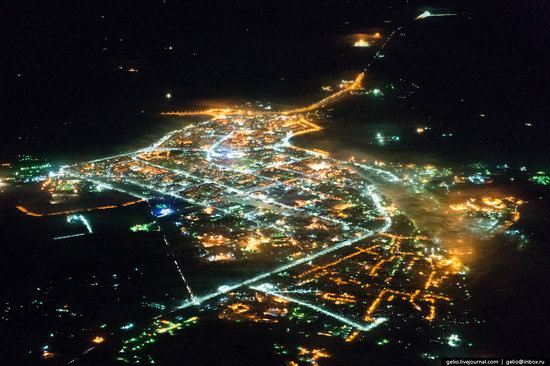
Tags: Khanty-Mansi okrug
You might also like:

The amazing beauty of Lake Akkem
The Museum-Reserve Peterhof at the time of flowering tulips >>
No comments yet.
Leave a reply.
XHTML: You can use these tags: <a href="" title=""> <abbr title=""> <acronym title=""> <b> <blockquote cite=""> <cite> <code> <del datetime=""> <em> <i> <q cite=""> <s> <strike> <strong>
- August 2024
- February 2024
- January 2024
- December 2023
- November 2023
- October 2023
- September 2023

Share ×

Scan the QR code and open PeakVisor on your phone
❤ Wishlist ×
See all region register, peakvisor app, khanty-mansiysk autonomous okrug – ugra.
Welcome to the land of sheer silent whiteness. Its vast expanses are filled with fresh Arctic air, howling winds, and the spirit of true adventure. Come with us to the lands of the ancient Khanty and Mansi tribes that survived in this harsh climate of the Nether-Polar Urals . See the mountains that defy any logical or geological reason for their existence. Experience the wonders of this sparsely populated land where you can hardly see a human trace. Welcome to Yugra!
Flora & Fauna
Water resources, landmarks and tourism, major mountains, mount narodnaya, mount zaschita, mount neroyka, the pyramid mountain, samarovskaya mountain, ski and sports facilities, protected sites, reserves, national and natural parks, rivers and lakes, major cities, khanty-mansiysk.
The Khanty-Mansiysk Autonomous Area – Yugra (KhMAO) is located in the central part of the West Siberian Plain, stretching from west to east from the Ural Range to the Ob-Yenisei Watershed. The vast areas of this plain, as well as the Lower Priob region, are considered one of the most recently inhabited areas.
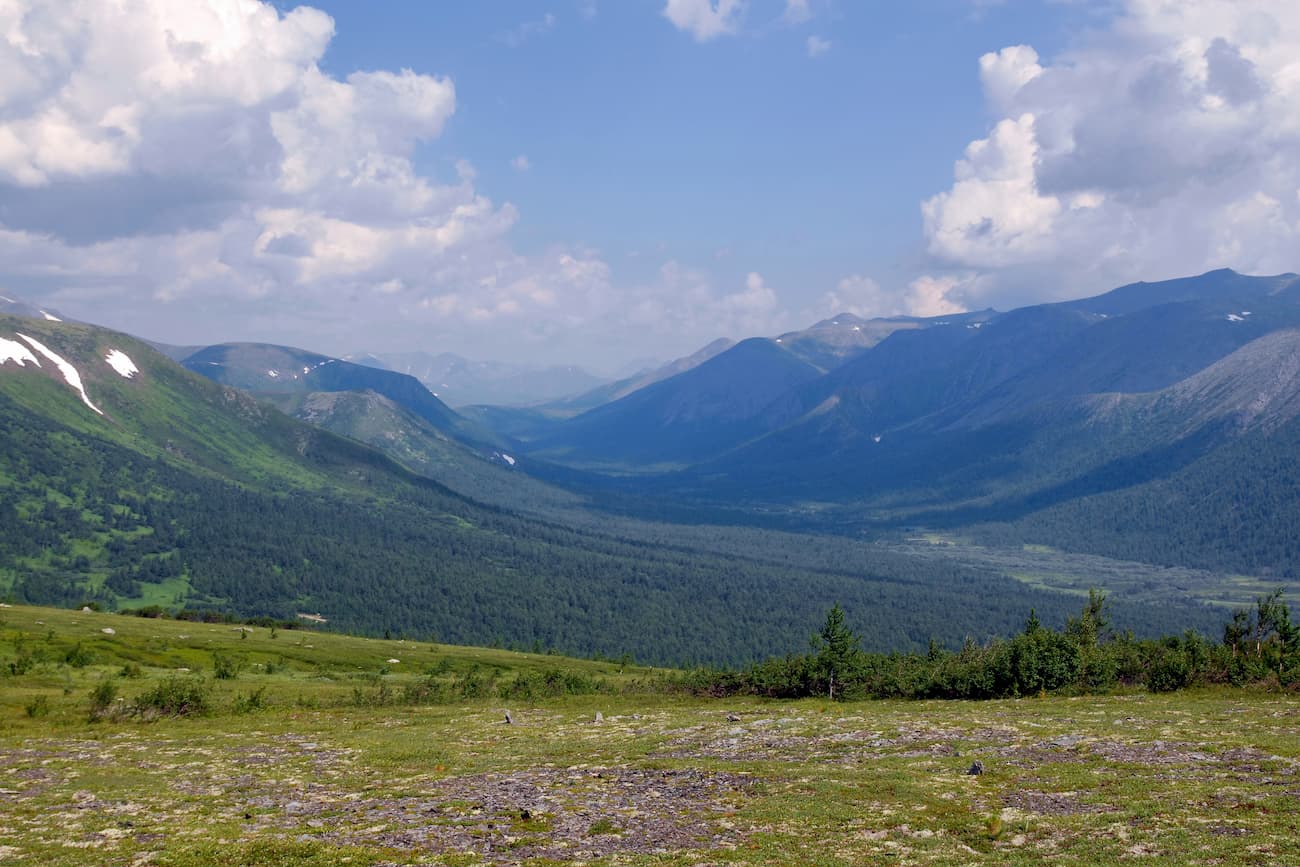
The Khanty-Mansiysk Autonomous Area (KhMAO) was established in 1930. Its name comes from two main northern indigenous peoples – the Khanty and the Mansi. From 1944 it was legally part of the Tyumen Region , but in 1993 the Area received autonomy and became a full-fledged territorial entity of the Russian Federation. It is a part of the Urals Federal District. The administrative centre is the city of Khanty-Mansiysk , whereas the largest city is Surgut. The word Yugra was introduced to the name of the Khanty-Mansiysk Autonomous Area in 2003 to pay tribute to the old name used by the locals to call the territories lying beyond the North Urals.
The KhMAO borders the Komi Republic in the north-west, the Yamalo-Nenets Autonomous District in the north, the Krasnoyarsk Area and the Tomsk Region in the east and south-east, the Tyumen Region in the south and the Sverdlovsk Region in the south-west.
The area of the territory is 534,801 sq.km, the length from north to south is 800 km, from west to east is 1400 km. The population of this huge territory is 1,674,676 people as of 2020, which is the same amount as people living in Barcelona or Munich.
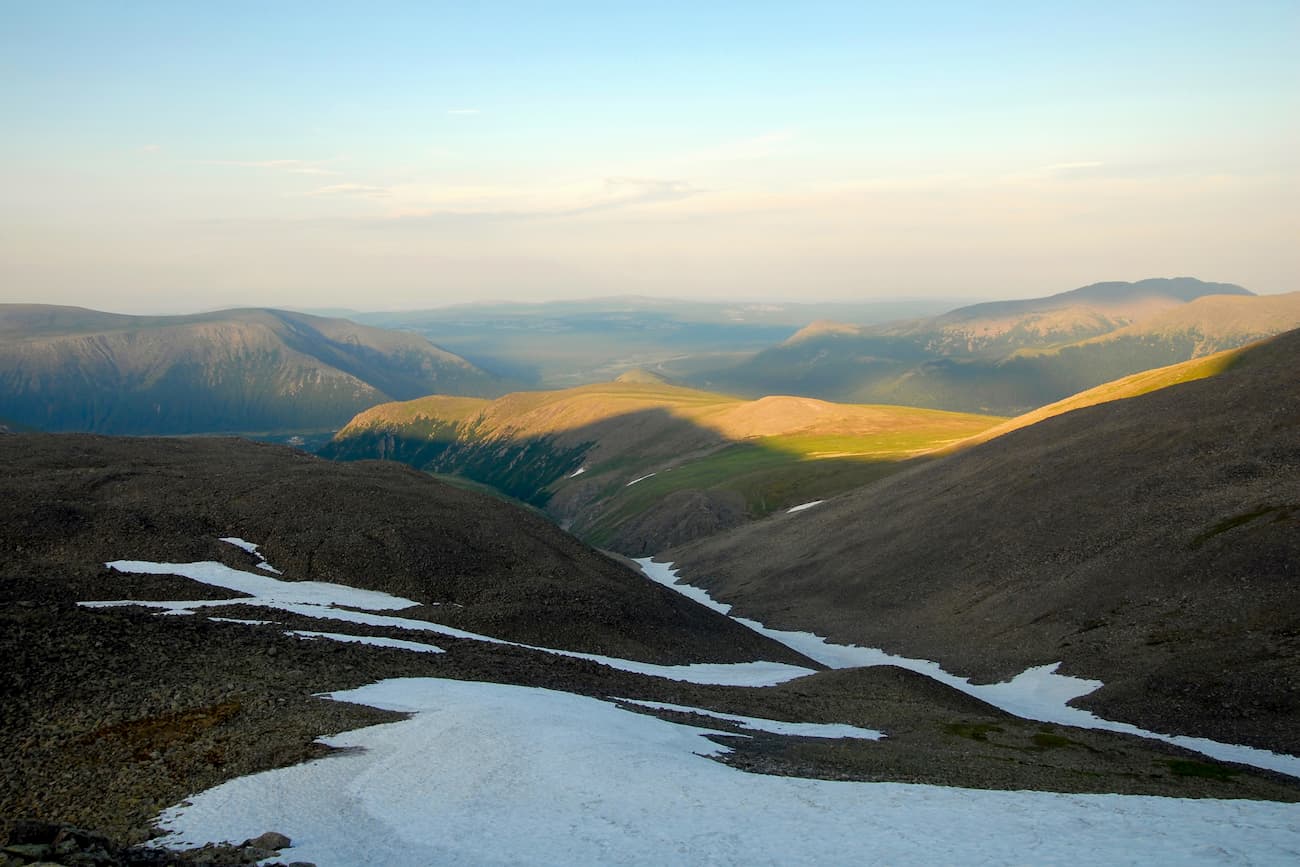
The main part of the territory is a huge, poorly dissected plain where absolute elevation marks rarely exceed 200 meters above sea level. The western part of the KhMAO territory is characterized by low and middle mountainous terrains with some Alpine relief featured in the Subpolar Urals. Here are ridges and spurs of the mountain system of the North Urals and the Subpolar Urals. The maximum absolute elevations are on the border with the Komi Republic . Mount Narodnaya (1,895m) is the highest peak.
More than 800 species of higher plants grow in the Khanty-Mansi Autonomous Area . Almost the entire territory is covered by taiga forests that occupy about 52% of the area. Spruce, fir, pine, cedar, larch, birch, alder grow here. In the northern parts of the area, the composition of the vegetation is greatly influenced by perennial permafrost. Light lichen grasslands which are used as deer pastures are widespread there. Tundra dominates in the mountainous and hilly areas. River floodplains and lowlands are characterized by meadow vegetation, the so-called water meadows. High floodplains of large rivers are mainly covered with woods that mainly feature willows, birches and aspens. Forests and swamps are rich in berries and various valuable plants, most of which are used in traditional indigenous medicine.
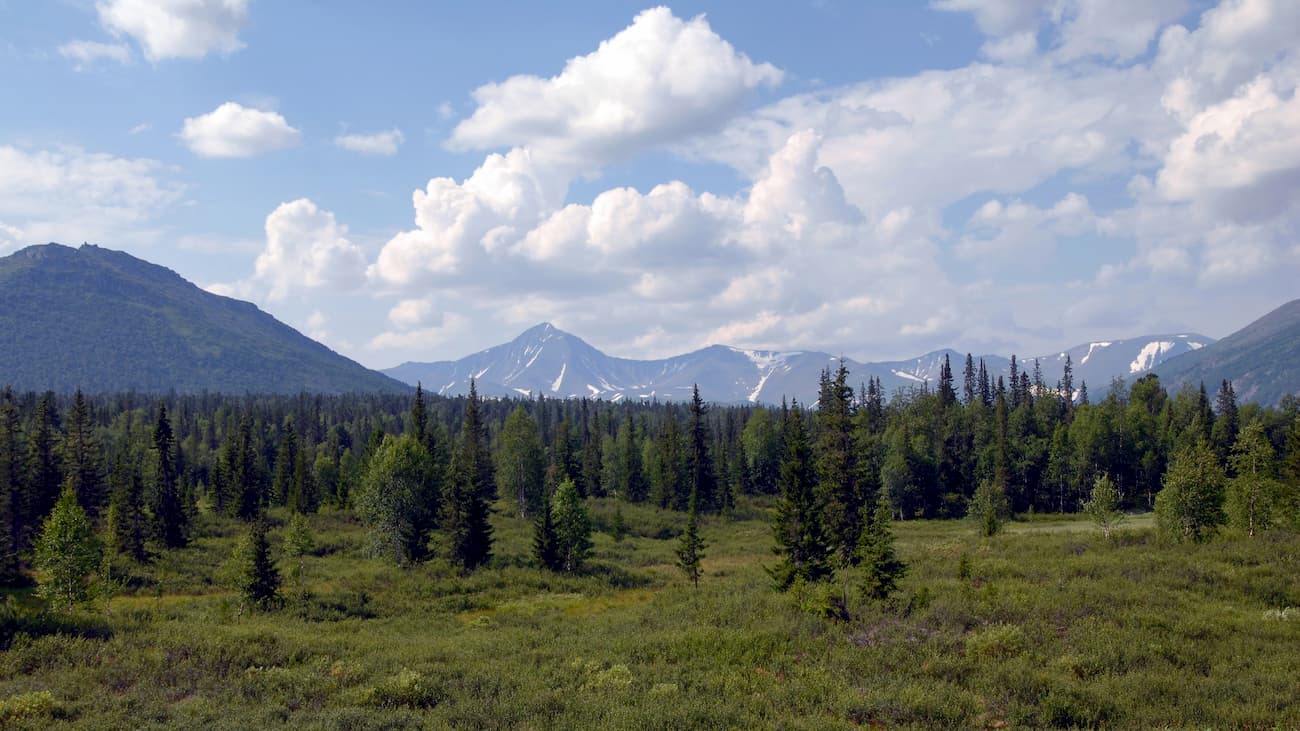
The animal world is typical for the Russian taiga zone. There are 369 species of vertebrates. Mammals are represented by 60 species (28 of them are commercial species). The most common and valuable of them are wild reindeer, elk, fox, sable, fox, squirrel, marten, ermine, Siberian weasel, polecat, mink, weasel, otter, hare and others. Wolverine and West Siberian river beaver are included in the Red Book of Russia.
There are 256 bird species in the region, including 206 sedentary and nesting species. Some rare bird species are listed in the Red Book. There are 42 species of fish in rivers and lakes. Of these, 19 species are commercial, among them are starlet sturgeon, lelema, muksun (whitefish), pelyad, chir, lake herring, wader, tugun, freshwater cod, pike, ide, roach, bream, fir, perch, ruff, golden and silver crucian carp, carp (carp is grown in the cooling ponds of the Surgutskaya and Nizhnevartovskaya hydroelectric plants). Sturgeon is listed in the Red Book. There is an abundance of mosquitoes and gnats in the area, the greatest activity of which is in the second half of summer.
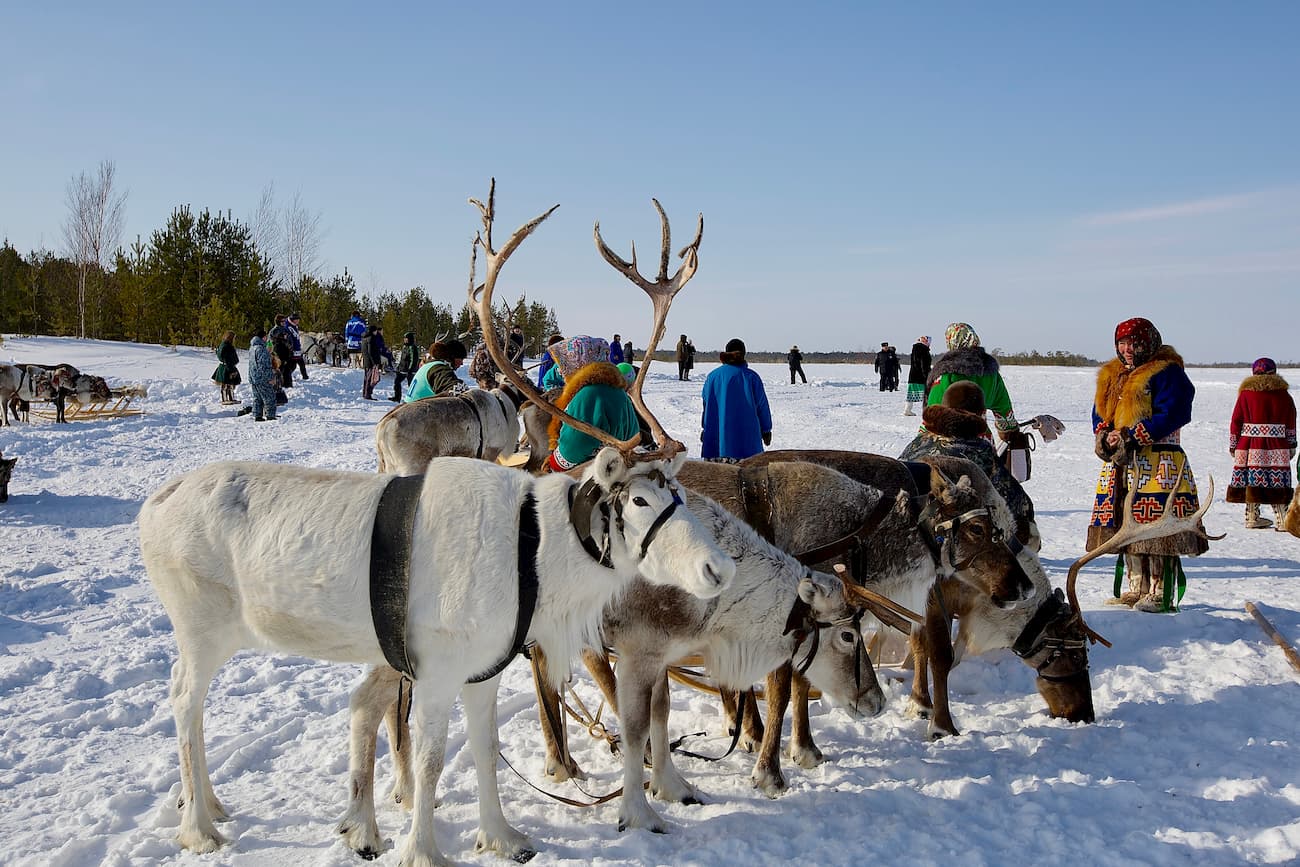
Yugra can boast of over 2 thousand large and small rivers, the total length of which is 172,000 km. The main rivers are the Ob (3,650 km), the Irtysh (3,580 km). These are some of the largest rivers in Russia. Other significant rivers include the tributaries of the Ob (the Vakh, Agan, Tromyogan, Bolshoy Yugan, Lyamin, Pim, Bolshoy Salym, Nazym, Severnaya Sosva, Kazym rivers), the tributary of the Irtysh (the Konda River) and the Sogom River. Ten rivers are over 500 km long. All the Yugra rivers with the exception of the rivers in the Ural part of the region are characterized by rather slow currents, gentle slopes, some surge wave phenomena, spring and summer floods. The Ob River basin extends over a distance of 700-200 km from the mouths of its tributaries. Such abundance of water facilitates the appearance of floodplain swamps and seasonal lakes.
The region's swamps are predominantly of the upper and transitional type. Those water basins occupy about a third of the region. About 290,000 lakes with the area of more than 1 ha are surrounded by swamps and forests. The largest lakes are Tursuntsky Tuman, Levushinsky Tuman, Vandemtor and Trmemtor. The deepest lakes are Kintus (48 m) and Syrky Sor (42 m). However, most of the lakes (about 90%) are modest and quite small and have no surface runoff.
The area is rich in resources of fresh, mineral and thermal underground waters, which are still insignificantly used.
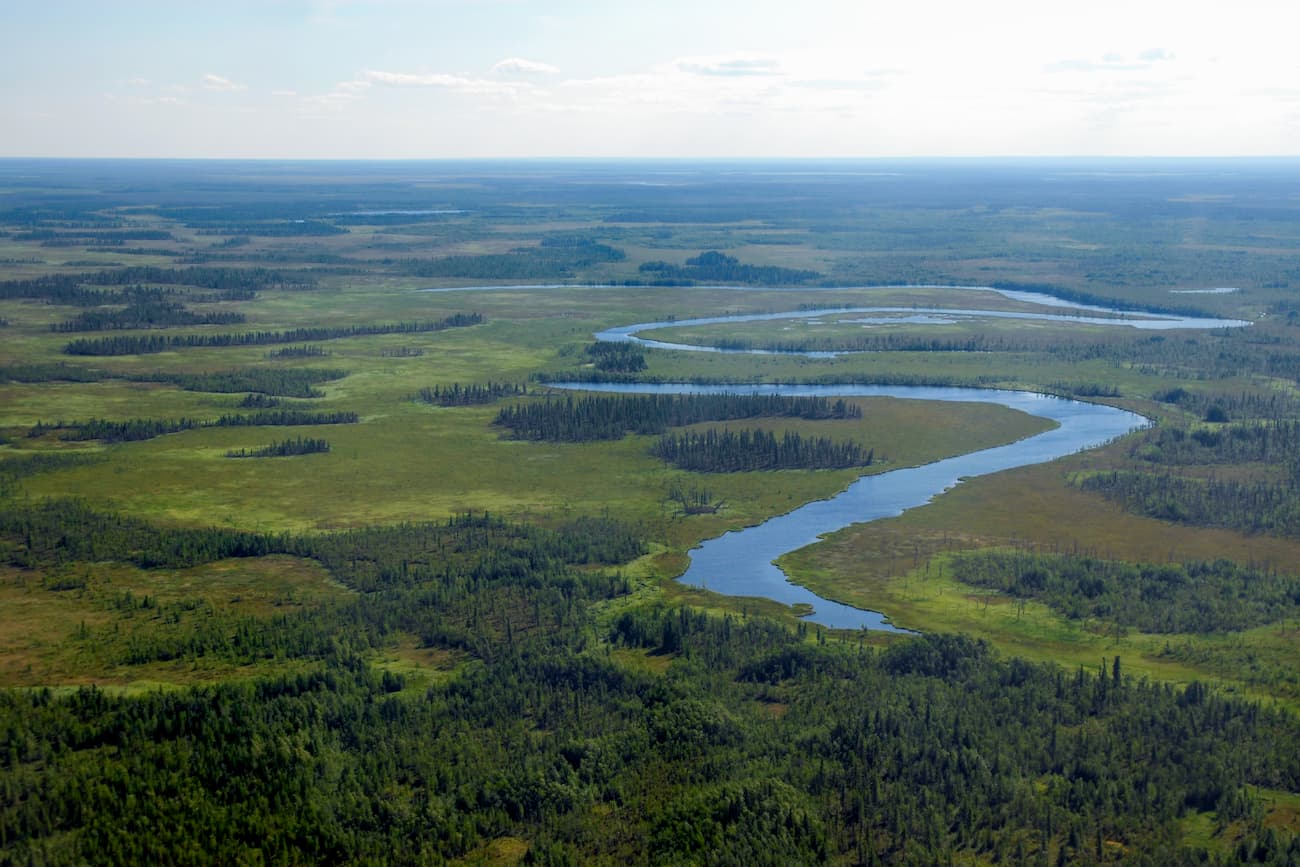
The climate is moderately continental. Winters are harsh, snowy and long, and summers are short and relatively warm. The territory is protected from the west by the Ural Mountains but its openness from the north has a significant impact on the climate formation because cold air masses from the Arctic freely penetrate the area. The flat character of the terrain with a large number of rivers, lakes and swamps also has its impact. Most of the precipitation falls during the warm seasons. But even with a small amount of precipitation, their evaporation is very low, which as a result contributes to the formation of the zone of excessive moisture throughout the Yugra. The snow cover is stable from late October to early May, its height varies from 50 to 80 cm. The region is characterized by a rapid change of weather conditions, especially in transitional seasons (autumn and spring), as well as during the day. Late spring and early autumn frosts are rather frequent and can happen even until mid-June. Average January temperatures range from -18ºC to -24ºC (0 F to -11 F) and can reach -60ºC to -62ºC (-76 F to -80 F) when the northern cold air masses break through. The average temperature in July, the warmest month of the year, ranges from +15ºC to +20ºC (+59 F to +68 F) and on very rare days can reach a maximum temperature of +36ºC (+97 F). The prevailing wind direction is north in summer and south in winter.
The weather in the mountains is quite changeable and cool even in summer. The best time to visit the region's mountains is between July and mid-August.
The Yugra of the Khanty-Mansi Autonomous Area has a huge natural resource potential. These are oil and gas deposits, forests, gold and iron ore deposits, as well as bauxites, copper, zinc, lead, niobium, tantalum, brown and hard coal deposits, rock crystal, quartz and piezo quartz, peat deposits, etc. The region has plenty of natural resources. In terms of natural gas reserves, the Yugra ranks second in the Russian Federation after the Yamalo-Nenets Autonomous District .
The industry is dominated by oil and gas production, power generation and processing industries, including woodworking except for pulp and paper production.
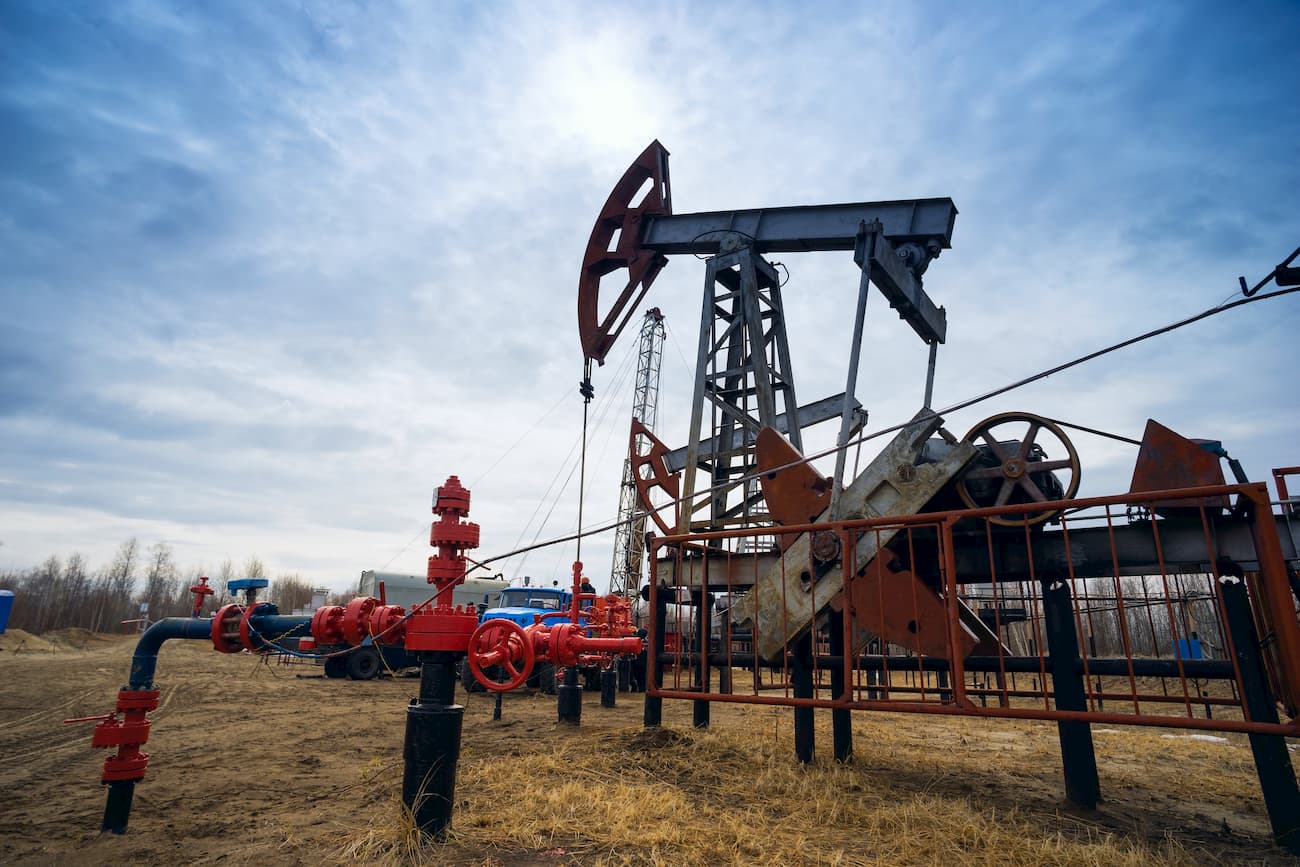
The Khanty-Mansi area has very developed tourism of all kinds. There is a modern infrastructure for cultural exploration as well as for active recreation.
Fans of sports and eco-friendly tourism will be able to conquer majestic mountains and raft down picturesque rivers, enjoy the beauty of nature in nature reserves and natural parks. The hills and mountains of this area open up endless opportunities for skiing and snowboarding.
The mountainous part of the Subpolar Urals located on the territory of the Khanty-Mansi Autonomous Area is very beautiful. The highest peaks of the Ural Mountains are situated here.
Being the highest point of the whole Urals, Mount Narodnaya (1,895 m), also known as Naroda and Poenurr and translated as People's Mountain is territorially situated in the Subpolar Urals, on the border of the Yugra Area and the Komi Republic . It is the highest point in European Russia outside the Caucasus. This leads to its large topographic prominence of 1,772 metres (5,814 ft).
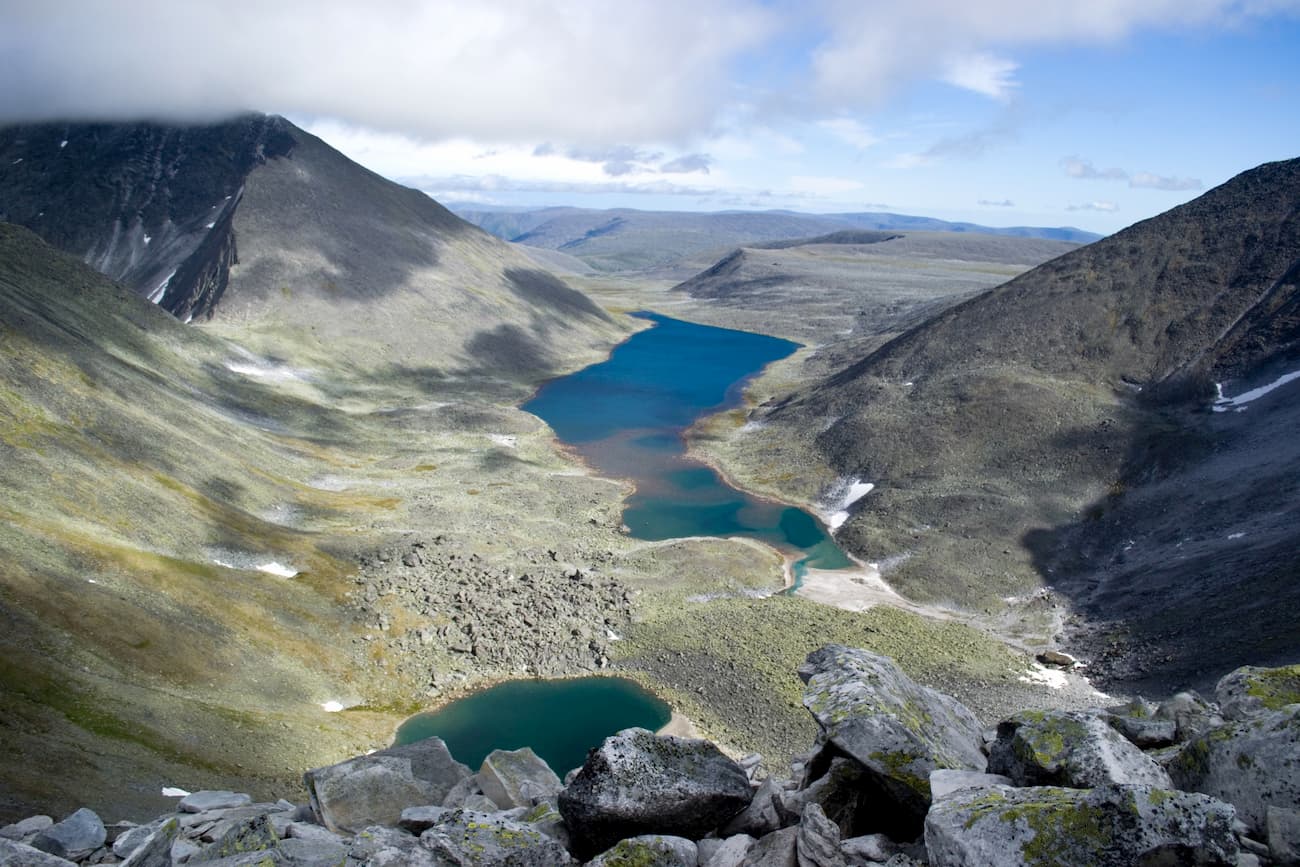
The top of the mountain is half a kilometre from the border towards Yugra. As for the name of the mountain, scientists could not come to a common opinion for a long time, so there are two versions. According to one version, in the Soviet years, an expedition of pioneers gave the mountain a name in honour of the Soviet people - Narodnaya (the stress is on the second syllable). According to the other version, even before the arrival of the first Soviet tourists, the peak was named after the River Naroda (the stress is on the first syllable) flowing at the foot of the mountain. The Nenets peoples called the River Naroda Naro, which means a thicket or a dense forest, and the Mansi peoples called it Poengurr or Poen-urr, which translates as the top, or head. The maps used to refer to it as Mount Naroda or Mount Naroda-Iz. Nowadays, it appears everywhere as Narodnaya.
In the 1980s, someone set a bust of Lenin on the top of the mountain. Its remains can be found there to this day. There is one more symbolic relic there – some Orthodox believers erected a worship cross on top of Mount Narodnaya after a Procession of the Cross.
The slopes of the mountain are steeper in the north-east and south-west and there are many steep rocks on them. The south-eastern and northern parts of the mountain are more gentle but they are also covered with scree. Be vigilant and careful when climbing! On the slopes of the mountain, there are many not only boulders but also caverns filled with clear water as well as ice. There are glaciers and snowfields. From the north-eastern part of the mountain, you can observe Lake Blue near which tourists and travellers like to make bivouacs.
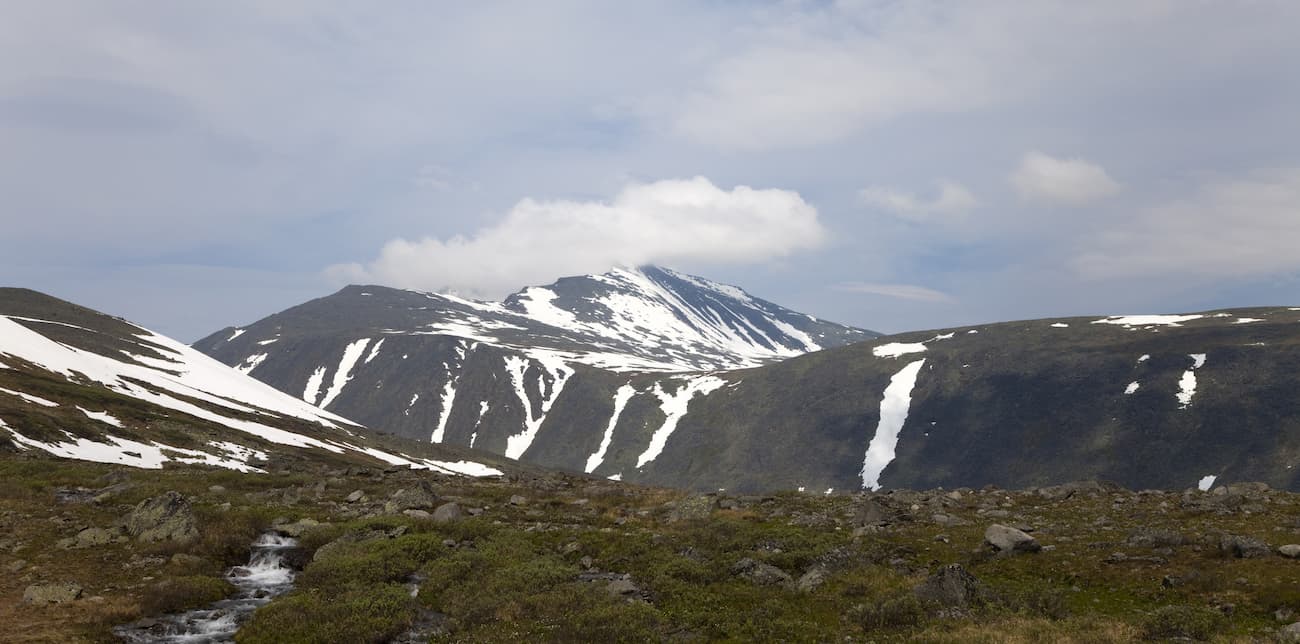
Mesmerizing with its beauty and inaccessibility, it attracts many tourists and fans of active recreation. This majestic mountain is quite remote from the settlements, so getting to it is not an easy task. The mountain is located in the Yugyd Va National Park , so it is necessary to register in advance and get a visit permit from the park administration. How to get to the park administration and get a permit, read the article on the Yugyd Va National Park .
Mountain Zaschita (1,808 m) is the second-highest peak in the Ural Mountains, after Mount Narodnaya . Mysteriously, the name of the mountain, which roughly translates as Defense or Protection Mount, does not correlate in any way with the Mansi names of the nearby mountains and rivers. The origin of the name is unknown. There are some speculations but we will consider just one of them. On the map of the Northern Urals which was made by the Hungarian researcher Reguli the closest peak to Mount Narodnaya was called gnetying olu. Its location coincides with that of the present-day Mount Zaschita . The name gnetying olu in the Mansi can be deciphered as a mountain on which there is some help from ice. The mountain is believed to protect deer grazing on glaciers from mosquitoes. So, early topographers called the mountain more briefly – Mount Defense. Indeed, the slopes of this mountain are covered with a lot of snow and glaciers (the Yugra, Naroda, Kosyu, Hobyu glaciers and others). And it is here that the Mansi shepherds bring their deer which can rest on glaciers and snow. Summarizing all the above, we can say that Zaschita Mount is to some extent protection for deer from mosquitoes. The very name Zaschita appeared on maps with the beginning of hiking tours in the Subpolar Urals.
Mount Neroyka (1,645 m) is 100 km from Neroyka village, the closest tourist base to this peak. In the 1950s, people who were engaged in quartz mining near the mountain worked and lived in this base. Later, a gravel road was built from the village of Saranpaul to the mountain for large-scale development of the quartz deposit. In recent years, the road has not been much used and is practically not cleaned from snow in winter. There has been a plant built 20 km down from the mountain for primary processing of quartz with the use of nanotechnologies. There is an annual big camping event near the mountain. It is organized by the Tourism Department of the Khanty-Mansi Autonomous Area. You can have a 1-hour helicopter ride to the mountain from the village of Saranpaul. Should you wish to fly from the city of Khanty-Mansiysk , be prepared to fly over the taiga for 2.5-3 hours.
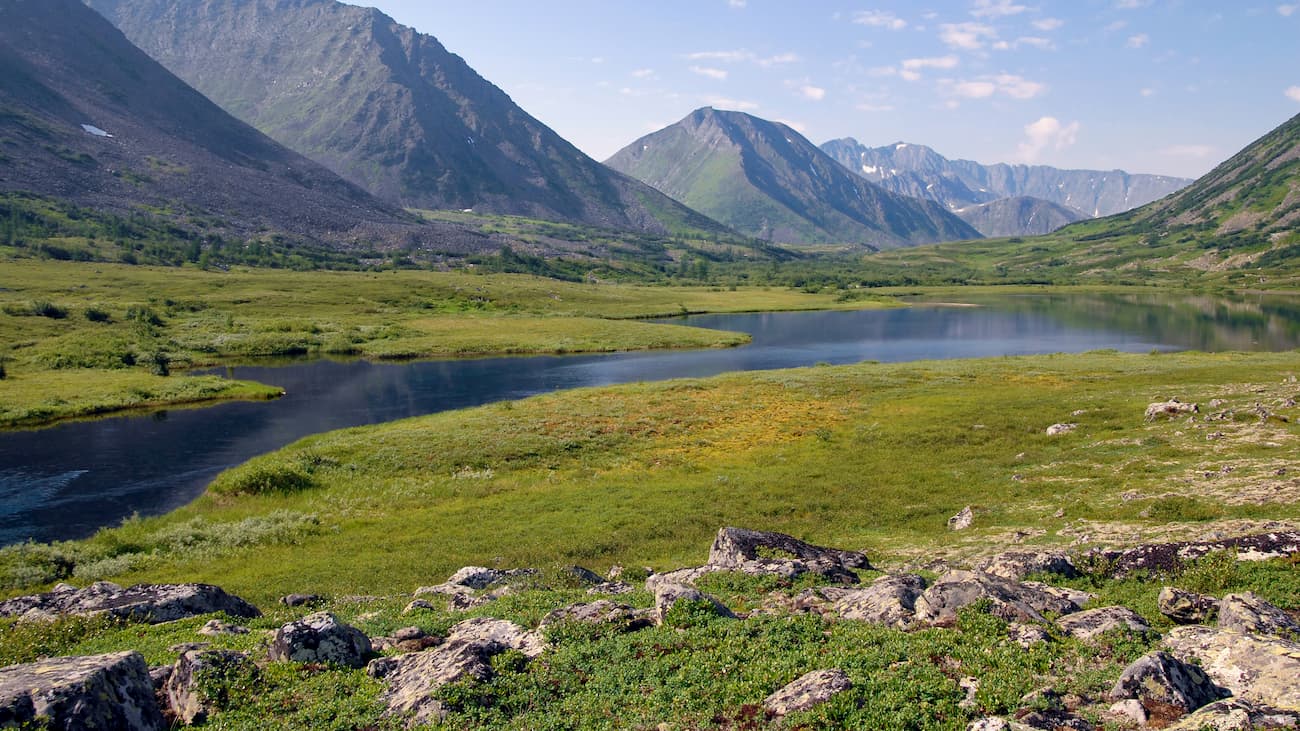
Quite inquisitive tourists happened to discover, by a lucky chance, a Pyramid similar to that of Cheops but four times bigger. It is located on the territory of the Narodo-Ityinsky Ridge. The closest to the pyramid is the village of Saranpaul. The sizes of the found pyramid are as follows: the height is 774 m, in comparison to the Egyptian pyramid which is 147 m; the length of a lateral edge is 230 m whereas the Egyptian pyramid is 1 km. The pyramid is located precisely according to the cardinal directions, there is not a single degree deviation at that. The origin of the pyramid is unknown, scientists are still making assumptions. No traces of human activity were found near the pyramid. The only way to get here at this time is by helicopter.
Samarovskaya Mountain is another wonder that is baffling many people. It is dividing the city of Khanty-Mansiysk into northern and southern parts. Few now living residents know that in the old days the highest part of the modern city used to bear a plural name of the Samarovsky Mountains among which there were Mount Palenina, Komissarskaya, Miroslavskaya, Filinova, and Romanova. Originally, there was a village called Samarovo amidst these mountains. Until now, many issues bewilder both residents and scientists. How could a mountain form in the middle of the West Siberian Plain? What is inside it? Won't the weight of the buildings erected on the top of the mountain affect its height? The uniqueness of Samarovskaya Mountain is that it consists of numerous large stones, boulders, rocks that are absolutely foreign to this area. Scientists have not yet come to a consensus on the mountain’s origin.
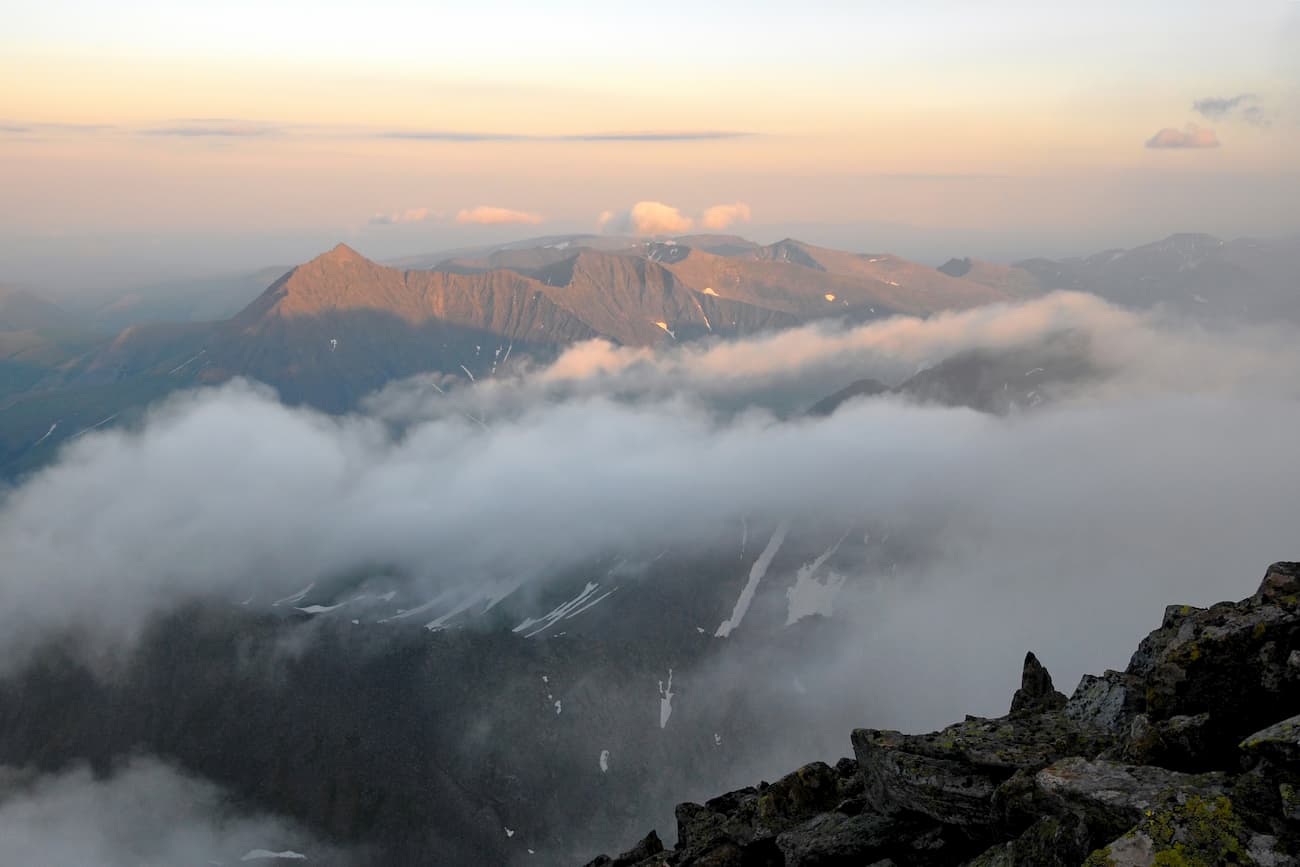
The Yugra is very famous for its ski resorts, the main of which are:
- The Cedar Ravine ski resort (Surgut city, Naberezhny Ave. 39/1)
- Three Mountains (Trekhgorie) ski resort (30 km from Nizhnevartovsk, Ermakovsky settlement)
- Stone Cape (Kamenniy Mys) ski resort (near the city of Surgut)
- Pine Urman ski resort ( Khanty-Mansiysk , Sportivnaya Str., 24)
The far-away lands of the Yugra are the blessed sanctuaries for many animals as the area is rather hostile to a human There are reserves, natural parks, wildlife sanctuaries here that aim to protect the national treasures of the lands. Having visited these regions once, you would crave for coming back again and again to feel that unique sense of unity with nature, to forget about the urban fuss and and hustles whatsoever. The harsh but beautiful nature of this extraordinary area leaves an indelible trace in the soul of every person.
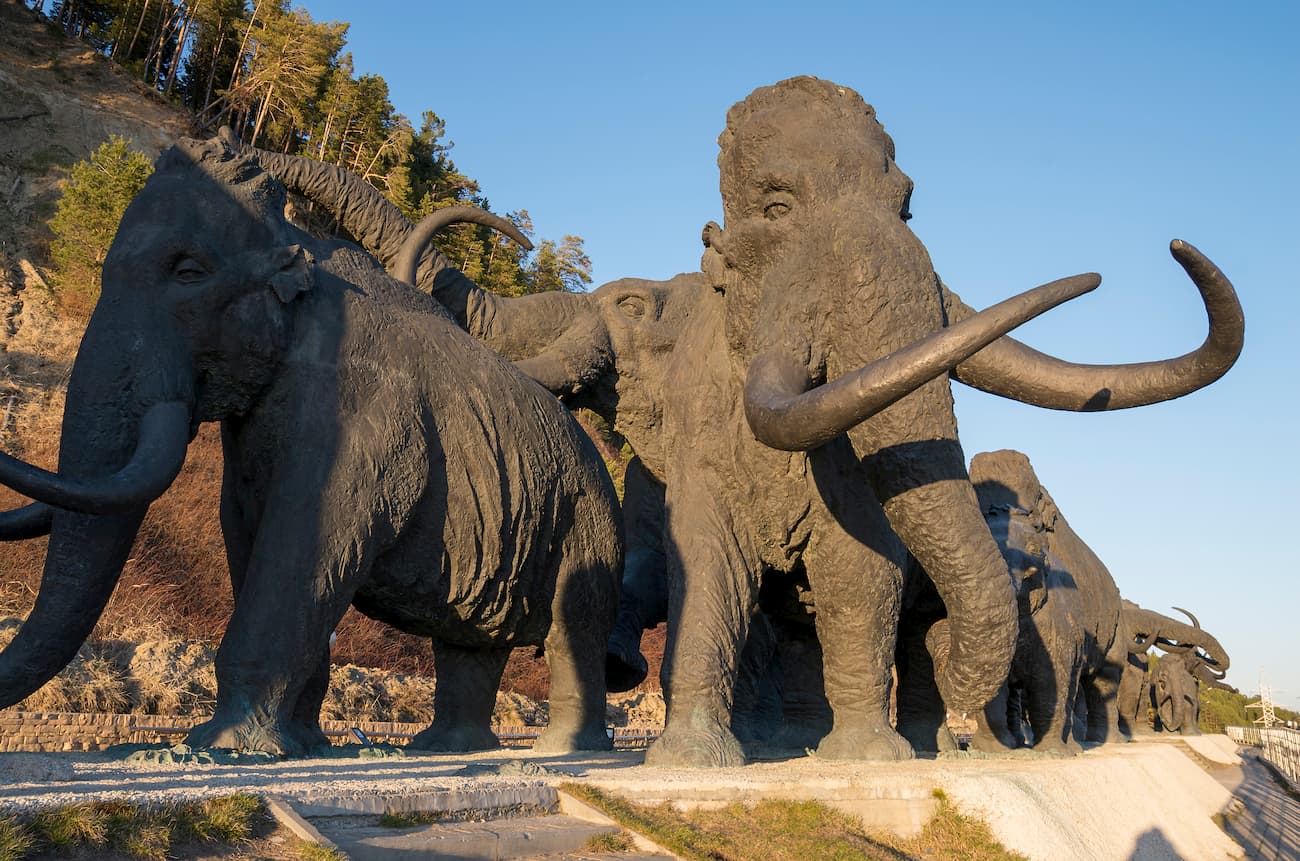
On the territory of the district there are 25 specially protected natural areas, the most famous of them are:
- The reserves are two: the Malaya Sosva Reserve and the Yugan Reserve, the latter was established in 1982 as the largest reserve of taiga landscapes. The purpose of the reserves was to study unobtrusively and carefully preserve the endemic flora and fauna without disturbing natural processes. Hunting and economic activities are prohibited here, which is important for the preservation of natural ecosystems.
- The natural parks are the Samarovsky Chugas Nature Park, the Siberian Sloping Hills (Uvaly), the Numto (also called Lake Numto), and the Kondinskie Lakes.
These reserves and natural parks offer tourists their own excursion programs to make visiting their territory much more enjoyable and educational.
The Samarovsky Chugas Nature Park is located in the center of Khanty-Mansiysk , on a small hill between the Ob and Irtysh rivers.
The territory of the Siberian Sloping Hills (Uvaly) natural park is 350 km away from the city of Khanty-Mansiysk . You can get there by helicopter or by plane. The office of the park is located at 7a Pionerskaya Street, Nizhnevartovsk.
The Kondinskie Lakes Natural Park is located 380 km from Khanty-Mansiysk . Half of the park is covered with swamps, but there is also a recreational area. There you can rest, swim, do some amateur fishing, picking berries (cowberries, cranberries) and mushrooms is permitted. There is only one independent walking route here, it runs for 3 km in the deep forest. It is a cool place for kids since the park is equipped with sports grounds, a pool and a small zoo where the kids can interact with brown bear cubs. What else, try the TaiPark, it is a rope course running at the height of 2.5 meters, having 15 stages, the full length is 125 meters. There is an opportunity to order water walking tours in the town of Sovetsky, which can be reached by train from Khanty-Mansiysk .
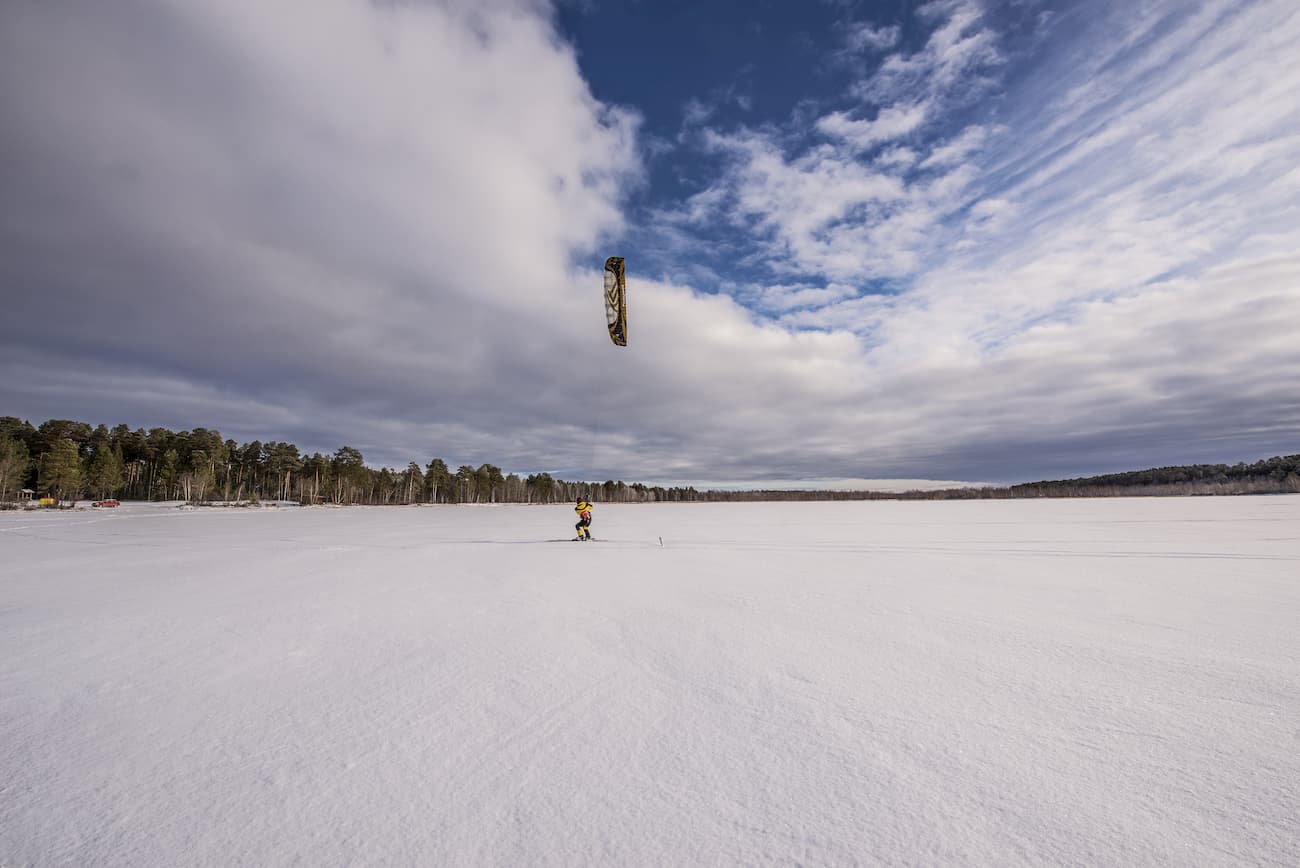
The Numto Nature Park is located almost in the center of the West Siberian Plain, in the Beloyarsk district of the Khanty-Mansi Autonomous Area, 300 km from the city of Surgut and 200 km from the town of Beloyarsk. It is located on the border of Yugra and Yamalo-Nenets Autonomous Area. The administration of the park is located at 2, Beloyarsky micro-district, 4a. The territory of the natural park is a treasure trove of archaeological and ethnocultural monuments. As of today, there have been discovered 20 architectural monuments, including fortified and not fortified settlements, places of worship abandoned by the peoples who lived here from the Stone Age to almost the present day. Researchers have also found 65 monuments of ethnic value, the main of which are worship objects, sacred places and cemeteries.
The Malaya Sosva Reserve includes several subordinated territories and sanctuaries, including Lake Ranghe-Tour. The reserve offers a 4-km walking guided route that gets the visitors introduced to the typical features and characteristics of flora and fauna of the region. The route is called Bear Trail and you can spot bears there (don’t come close though, we’ve already written how to behave if you meet a bear in the wild). Also, you will see the River Malaya Sosva, some marshes, ancient cultural monuments and other nice sights. Permission to visit the reserve can be obtained from the administration of the reserve at Lenina Str. 46, town Sovetskiy.
As to the Yugan Nature Reserve , it is inaccessible to common hikers who are afraid of flying since there are no roads to it. The only way to get there is taking a helicopter ride. You also must obtain a permit in the administration of the reserve, go accompanied by employees of the reserve, and only on special transport of the reserve (motorboat, snowmobile). The central manor of the Reserve and the administration are located in the village of Ugut. To get to this village, you should first go to the town of Surgut, then go to the town of Pyt-Yakh, and from it there is a road to the village of Ugut. It is about 100 km from Ugut to the southern border of the reserve i, and another 25 km to the nearest cordon. The administration works from Monday to Friday. You can request a permit via mail at [email protected] , order a guided tour at [email protected]
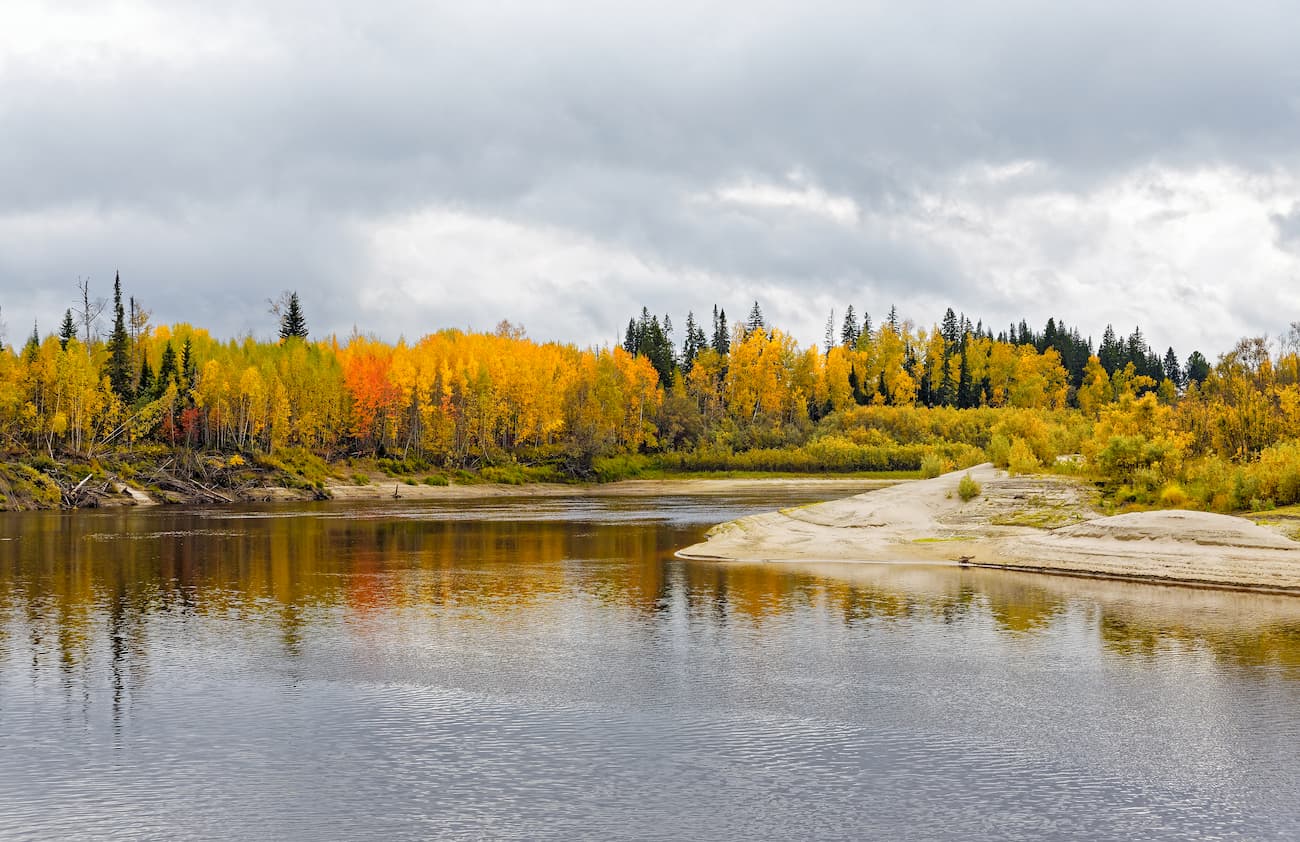
The Yugra lands are heaven for water sports aficionados. They can have some awesome fishing or go rafting along such rivers as: the river Naroda, the Deep Sabun, etc.
The Naroda River is 140 km long. It is the left tributary of the Manya River located in the Ob River basin. The river has its origin on the south-western slope of Mount Narodnaya . It is a mountain-taiga river with rapids, swifts, numerous rolls, which attracts interest among water tourists. However, it is usually not rafted very often.
The Deep Sabun River flows through the territory of the Siberian Sloping Hills Nature Park. The park has developed multi-day water routes. It is possible to raft along the river in summer and to go skiing along it in winter.
The Kondinskie Lakes are a system of lakes along the left bank of the Konda River. The largest lake is the Arantur, with pine forests on the northern side and sandy beaches well equipped for a nice relaxing me-time. The water heats up well in summer. The small river Okunevaya and the river Maly Akh flow into the lake. The Maly Akh comes in on the west side and connects lake Arantur with Lake Pon-Tour. This lake is the richest in fish, and there is also a parking lot for fishermen here. The streams connect Pon-Tour with small lakes Krugloe and Lopukhovoye. When you look at Lopukhovoe lake, you feel as if you have found yourself in a fabulous place: more than half of its surface is covered with white lilies, as well as yellow flowers of the water-beans. Then the river Big Akh, which flows into the river Konda, connects all the lakes into a single system. Along the river there are many archeological monuments such as forts and settlements which have paths to them. The southernmost lake of the park is Ranghe-Tour.
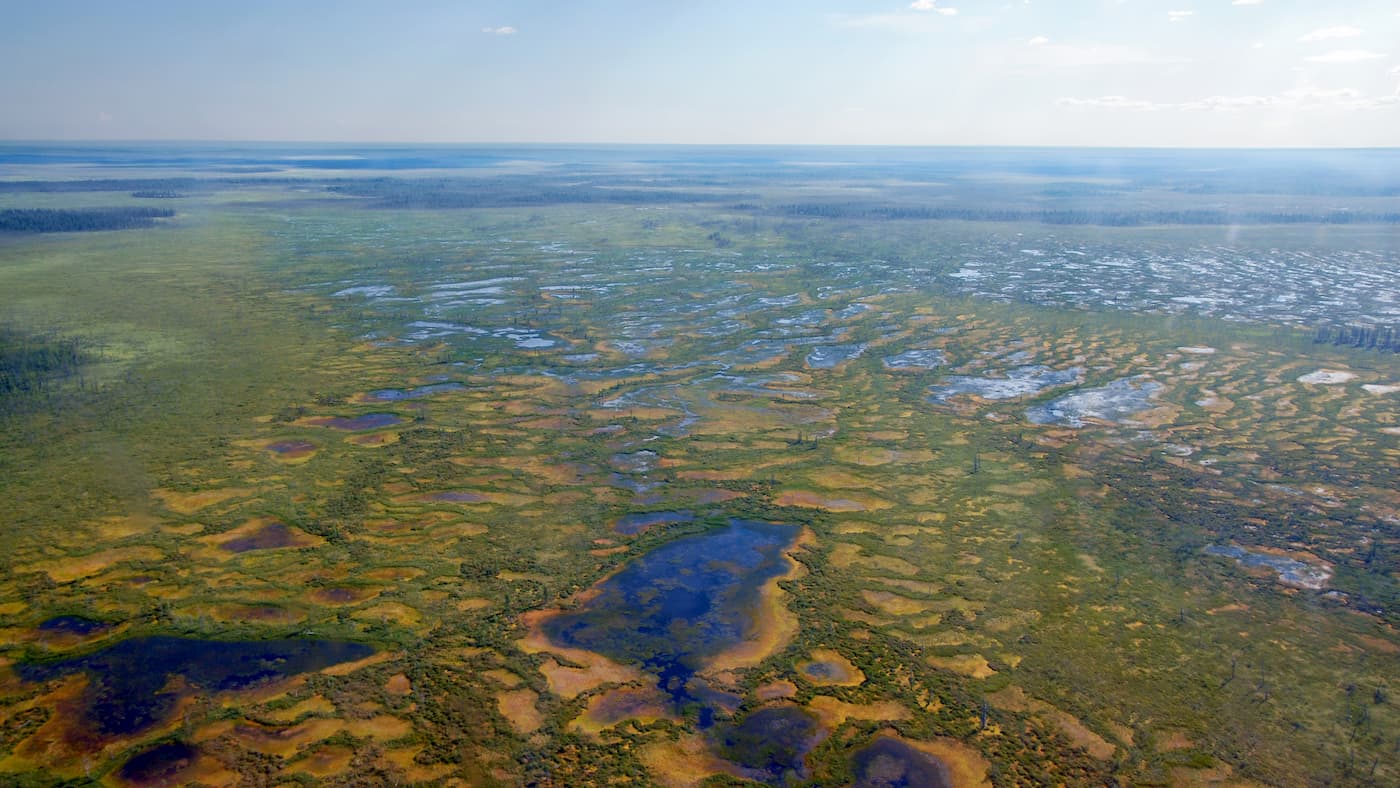
Yugra is not the easiest destination and not the most accessible, but the effort is well worth it. You should first get to the capital of Khanty-Mansiysk Autonomous Area – the city of Khanty-Mansiysk either by air or by train.
Khanty-Mansiysk is based on the premises of the former village Samarovo founded in 1582. It used to be the territory of the Khanty people and a pit stop for coachmen who rode their wagons across the country. The village was founded by Russian Count Samara, thus the name Samarovo. The modern city actually began to develop in 1930 because amidst the Siberian taiga there finally started to appear stone houses on the high bank of the Irtysh River. In 1940, the village was renamed into Khanty-Mansiysk by the name of the peoples living on this territory – the Khanty and the Mansi, and in 1950 it received the status of a town.
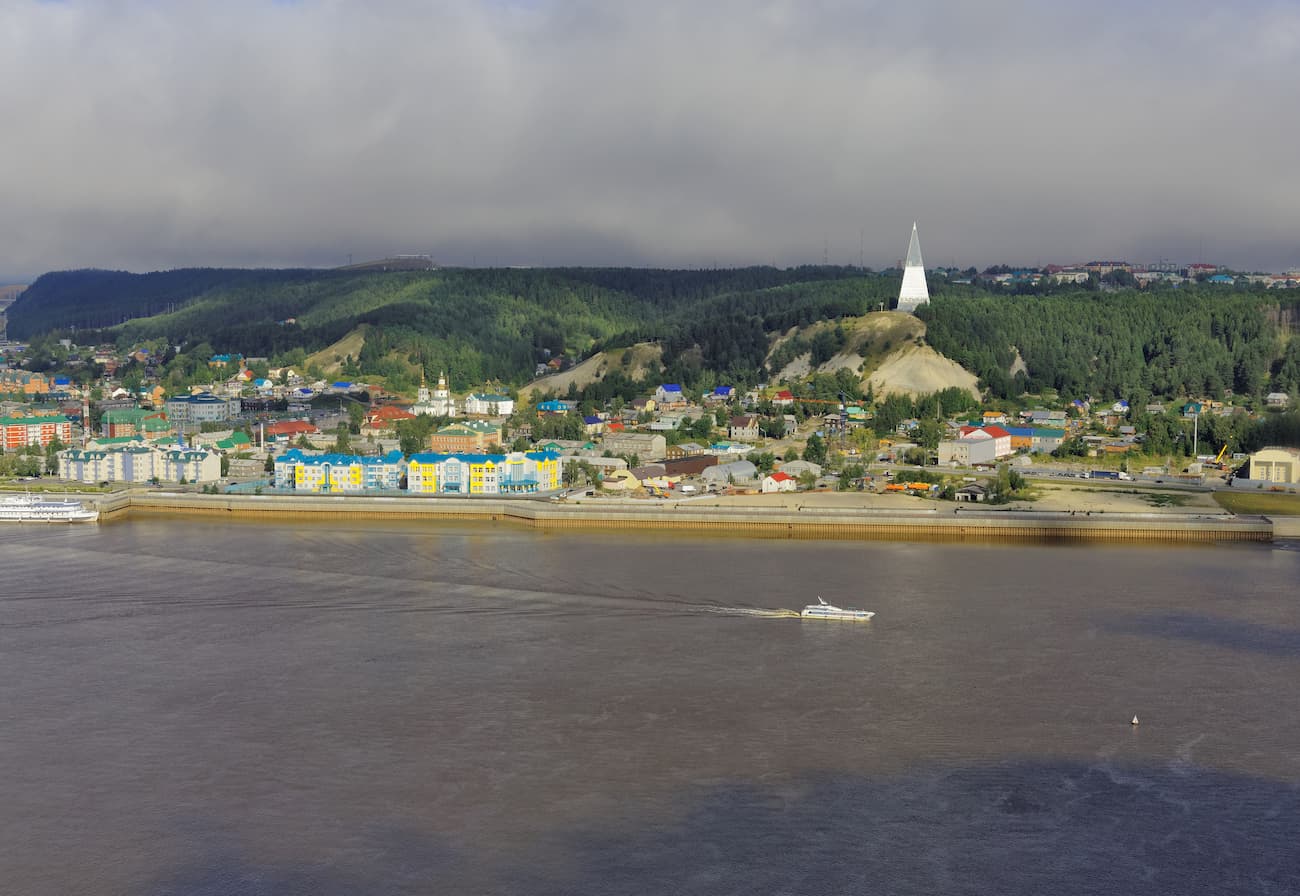
The city has several attractions. Mount Samarovskaya is probably the biggest natural and scientific wonder. It divides the city in two parts and causes many concerns for urban developers who always wonder whether this mountain can move making the buildings slide or even sink in.
Another beauty is the century-old cedar grove that is within the city limits. The grove is a part of the natural park Samarovsky Chugas. The word chugas in the language of the Khanty means a lonely hill in the low river floodplain.

The park is one of the main attractions of the city, it hosts an open-air ethnographic museum called the Torum Maa, a cultural and tourist complex called Archaeopark, a biathlon center. Kids and adults, nature lovers and fans of culture love this place dearly.
A memorial sign to Yugra's discoverers is installed on top of the Samarovsky Chugas. It is a tall stele pyramid divided into three portions. On the lower level, there is a restaurant, on the second level is a small museum, and on the third level there is an observation deck, 40 m above the ground, with a magnificent view of the Irtysh River and the river port. The pyramid is decorated by the bas-relief depicting the discoverers of the region, from the 16th-century Count Samara to the geologists of the 20th century.
Another trademark of Khanty-Mansiysk is the State Museum of Nature and Man. The museum hosts a gallery and a workshop of a famous artist G. Rayshev.
The city has a lot of small monuments generously spread around the city. There is the Khanty family resting on a camp, this monument is near the airport building. You can take a pic at the Golden Tambourine located at the intersection of Gagarin Street and Mira Street. Connoisseurs of culture should also visit the Sun – the Theatre of Ob-Ugrian Peoples, it is the world's first professional theatre of Khanty and Mansi peoples. And if you are travelling with kids, the Khanty-Mansiysk Puppet Theatre is a must-visit. In the period from May to October, you can take a boat ride to the confluence of two rivers – the Ob and the Irtysh. Yugra Service Co. operates such cruises, you can find more information locally at their address Tobolsk Trakt street 4, Khanty-Mansiysk .
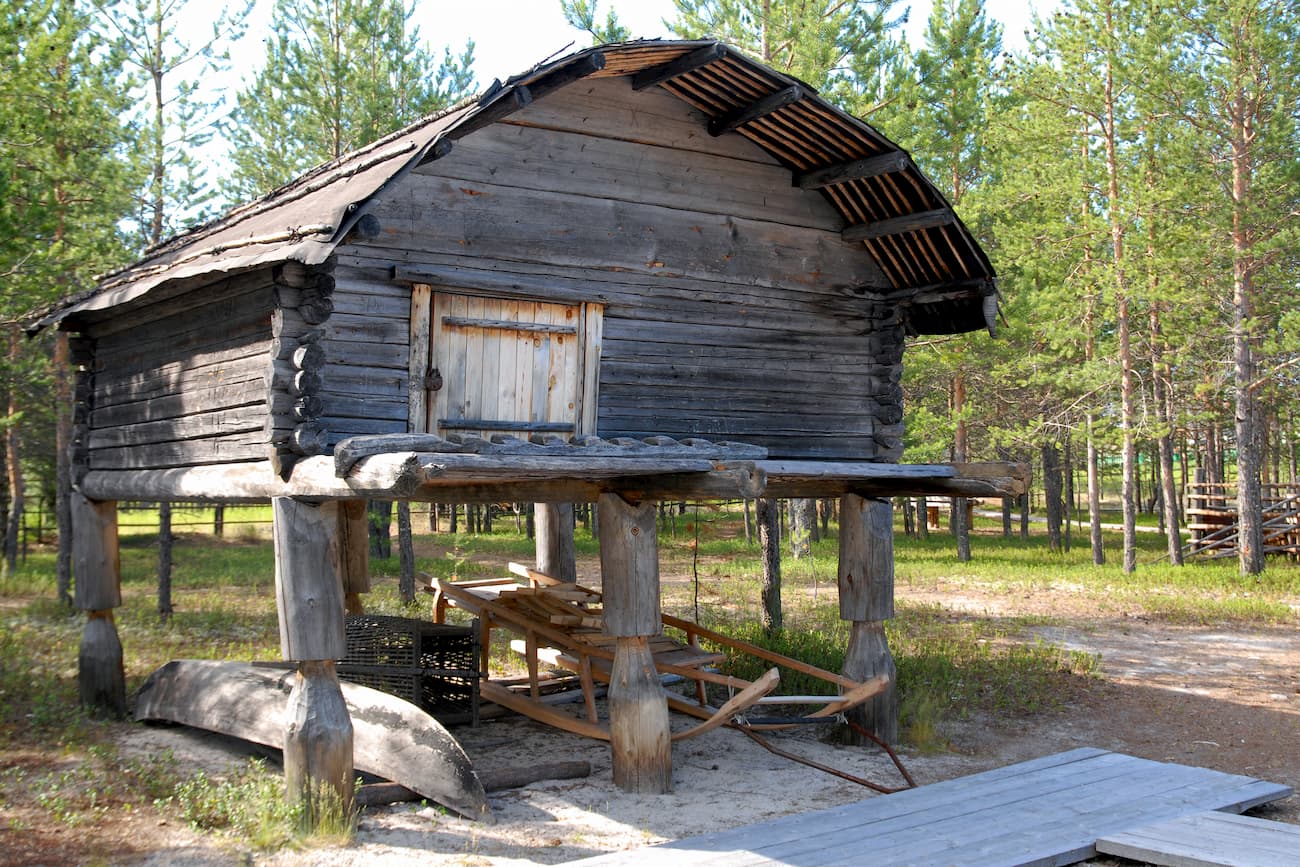
Explore Khanty-Mansiysk Autonomous Okrug – Ugra with the PeakVisor 3D Map and identify its summits .

PeakVisor Hiking Maps
Be a superhero of outdoor navigation with state-of-the-art 3D maps and mountain identification in the palm of your hand!
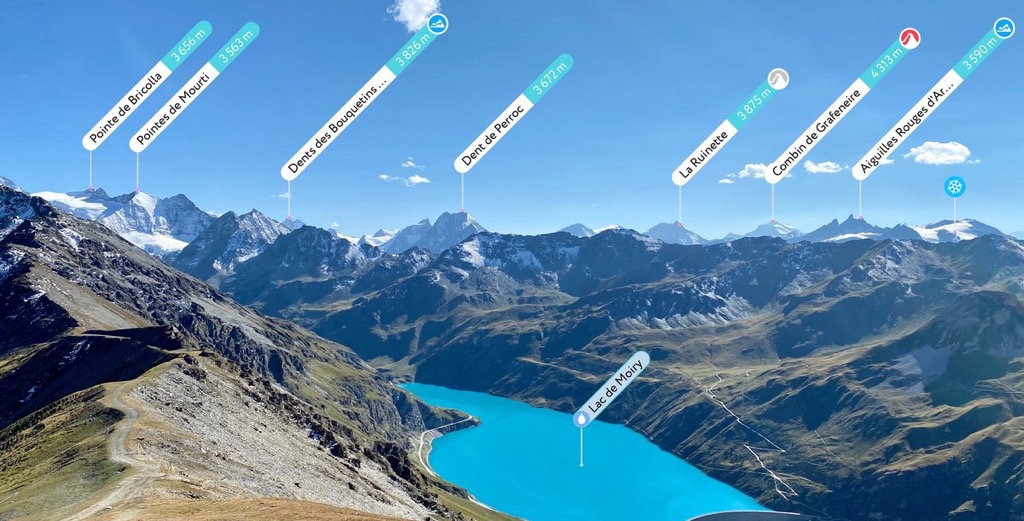

IMAGES
COMMENTS
Learn the best time, way, and tips to visit the ancient Incan citadel of Machu Picchu in Peru. Find out how to get acclimated to the altitude, choose the right train, buy tickets, and explore nearby attractions.
Learn everything you need to know about visiting Machu Picchu, the ancient Inca city and New World Wonder. Find out how to get there, when to go, what to see, and more.
Bus: We recommend taking the 30-minute bus ride to Machu Picchu as this is the quickest and most physically friendly way to get to the ruins. You will have more time to explore Machu Picchu, as well as do additional hikes around the site. Buses to Machu Picchu leave from 5:30AM to 3:30PM every 5-10 minutes.
Explore the most famous archaeological site on the continent, a must for all visitors to Peru. Learn about its history, attractions, routes and tips from Lonely Planet experts and local guides.
16. Machu Picchu is high up, but much lower than Cusco. If you're worried about hiking around Machu Picchu due to the altitude, the good news is that it sits at a much lower elevation than Cusco. In fact it's lower than most of the Sacred Valley at just 2400m elevation.
The following Machu Picchu price list is the official fees for 2022. There are several options, some of which you can choose a time slot. Machu Picchu (only) $59 USD - ADVANCE - BOOK NOW $89. Machu Picchu + Huayna Picchu hike $76 USD - ADVANCE $91. Machu Picchu + Montana $76 USD - INSTANT BOOK NOW $89.
There are only 4,500 tickets available per day for Machu Picchu. All tourists must be led by a tour guide in order to preserve the site. Tourist groups can have a maximum of 10 people per guide. Reentry to the site is prohibited. The guided tour duration is 2 hours in order to free up room for more groups.
The Lost City of Machu Picchu is one of the most iconic archeological treasures in all of South America. Tucked away in the cloud forests of the Andes, Machu Picchu is believed to have been a royal estate or sacred religious site for Inca leaders. Today, its mountain top location, finely crafted stonework, and ancient history make Machu Picchu ...
A slightly longer hike, taking about an hour round-trip, is to the Sun Gate. At 2,720 m, this is the highest vantage point to view the ruins, and where trekkers from the Inca Trail first glimpse Machu Picchu. Beyond this is a 3-hour hike to the top of the actual peak, Cerro Machu Picchu (the name translates as "big mountain").
The Scenic Route: Taking the Train. A huge part of arriving at the destination is the journey—and in this case, the journey to Machu Picchu involves three and a half hours on a train and thirty minutes on a bus. There are two trains in town when it comes to the Cusco-Machu Picchu route: Inca Rail and Peru Rail.
The Lost City of the Incas, aka Machu Picchu, draws some 1.2 million visitors yearly to its incredible stone vestiges left behind on a remote mountain. With visitor numbers still down on those registered pre-pandemic, ... As the only travel blog dedicated to responsible, adventure travel in Latin America, Worldly Adventurer seeks to inspire you ...
Machu Picchu is often busiest between 11am and 3pm when most train and bus visitors arrive, so the opportunity to see the site in the morning or at dusk could allow you to have a more meditative experience and better light for photography. Machu Picchu, the ancient capital of the Incas. It's best to visit Machu Picchu at dusk or dawn.
Learn how to plan your visit to the Inca citadel, when to go, how to get there, what to bring and how to be a responsible tourist. Find out the best offers and packages for this unforgettable experience in Peru.
What: Machu Picchu tours. When: Machu Picchu is accessible daily with entrances from 6 a.m. to noon or noon to 5:30 p.m. During the month of February, the Inca Trail is closed for maintenance and ...
Inca Trail Express. James · Traveled July 2024. A great trek, well organised and guided amazingly. Initially went for Machu Picchu, came out with a much more rounded knowledge of the Incan empire and a desire to learn more. Dead woman's pass was not easy but made the journey even better.
Cusco is the logical place to start your Machu Picchu journey, with its fantastic culture, stunning colonial architecture, and ideal spot right in the center of the Sacred Valley.If you're traveling from the United States, you'll likely land at Lima's International Airport.. Although you can technically take land travel from Lima to Cusco, you'll have to go over the Andes, which makes the trip ...
17. days. Amazon, Colca Canyon, Cusco, Lima, Machu Picchu, Nazca & Titicaca. Experience the full breadth of Peru and Machu Picchu in our most complete Peru tour package. Travel through multiple national reserves, visit world heritage sites, colonial cities, the Amazon rainforest, and the capital city of Lima.
Visiting Machu Picchu and hiking the Inca Trail was a dream come true. It's also home to lots of wildlife that has adapted to the stunning, rugged terrain of this ancient Incan city.
Khantia-Mansia, officially known as Khanty-Mansi Autonomous Okrug, and historically known as Yugra, is an autonomous okrug in Russia's Urals Region. The region borders Yamalia to the north, the Krasnoyarsk region to the east, Tomsk Oblast to the southeast, Tyumen Oblast and Sverdlovsk Oblast to the south, and Komi Republic to the west. Overview.
Khanty-Mansi Autonomous Okrug or simply Yugra is located in the heart of Russia - in the north of Western Siberia. It is the main oil and natural gas region of the country and one of the largest oil producing regions in the world (about 60% of Russian oil). Yugra climate is equivalent to the climate of the Far North.
Surgut (Russian: Сургу́т, IPA:; Khanty: Сәрханӆ, Sərhanł, Сө̆ркут, sörkut) is a city in Khanty-Mansi Autonomous Okrug, Russia, located on the Ob River near its junction with the Irtysh River.It is one of the few cities in Russia to be larger than the capital or the administrative center of its federal subject in terms of population, economic activity, and tourist traffic.
The Khanty-Mansiysk Autonomous Area (KhMAO) was established in 1930. Its name comes from two main northern indigenous peoples - the Khanty and the Mansi. From 1944 it was legally part of the Tyumen Region, but in 1993 the Area received autonomy and became a full-fledged territorial entity of the Russian Federation.